UNDERCARRIAGE & TRACK INNOVATIONS FROM SENSORS TO COMPONENT WEAR POWER PROSPECTS
IN ADDITION TO EFFICIENT DIESEL, OTHER POWER OPTIONS FOR EXCAVATORS ARE GROWING IN POPULARITY
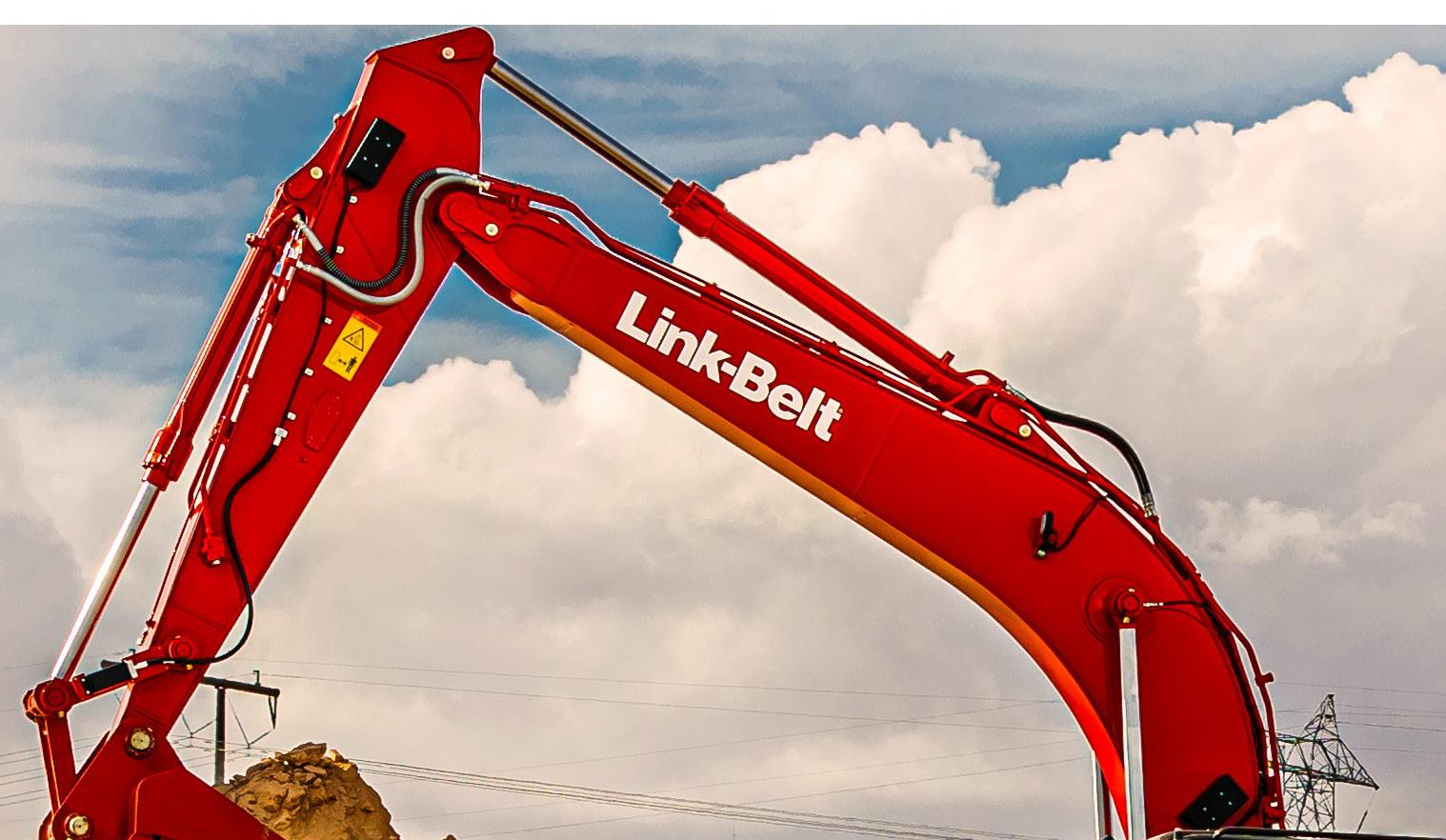

The Future of Skid Steers: Electricity, Automation & Efficiency Helping you optimize ROI on your construction equipment OCTOBER 2023 #1 Market Leaders

COVER STORY
Power Prospects
In addition to efficient diesel, other power options for excavators are growing in popularity



DEPARTMENTS
BREAKING GROUND
Today’s Alternative Power Trends Are the Equipment of the Future
Efficient diesel, electric and alternative fuels all must be considered as the industry strives to lower emissions.
EQUIPMENT INTRODUCTIONS
Check Out the Latest Equipment
The latest machines from major manufacturers.
PROFIT MATTERS
Revolutionary Mobile Devices & Interfaces
Construction software continues its evolution to harness the power of mobile apps to increase productivity and safety.
RUNNING THE BUSINESS
Construction Economy: What Does the Future Hold?
Business owners should continue to expect high prices and need to keep a close eye on their balance sheets in upcoming quarters.
BRIDGING THE GAP
Confront Labor Shortage With Refocused Training Effort
The best ways to deal with the industry’s labor shortage is by dialing in on training and investing in employees.
14
EARTHMOVING TRENDS
Skid Steer Tech Trends: Increased Use in New Applications
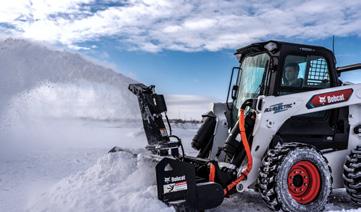
There will be a need for both diesel and electric equipment for years to come, and a variety of factors are pushing the use of skid steers into new applications.

EARTHMOVING TRENDS
Attachment Safety 101
A big factor in attachment safety is ensuring that attachments are well taken care of and maintained.
EARTHMOVING TRENDS
20
Efficiency Extraordinaires: Streamlining Snow Operations

Snow removal professionals describe how they best prepare in season and out of season for whatever snow events come roaring their way.
EQUIPMENT MANAGEMENT
Heavy Equipment Undercarriage & Track Advancements
Tread designs and rubber compounding define recent trends, leading to longer-lasting, smoother running tracks.
EQUIPMENT MANAGEMENT
Zero Emission Machines to Shake Up Oil & Lubricant Industry
Change is underway in the vehicles oil and lubricant industry as a result of the inexorable move toward zero emission vehicles, in particular battery-electric machines.
EQUIPMENT MANAGEMENT
The Value of Proactively Planned Fleet Maintenance


Planned maintenance is very valuable—maximizing fleet performance and equipment longevity while reducing downtime and operation costs.
TECHNOLOGY
Georgia Contractor Reins in Driver Behavior With Telematics
Decreases in speeding and hard braking events and improved truck spacing were just some of the wins for this company.
TECHNOLOGY
Beyond Dash Cams for Construction Equipment Fleet Management Software
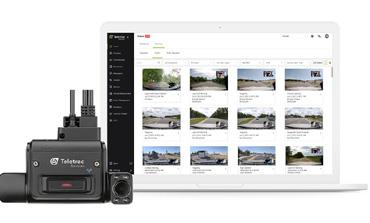
How Teletrac Navman sits as the market for GPS-enabled fleet management and telematics splinters into subcategories
TECHNOLOGY
Antifragility Explained: 5 Ways to Build Agile Construction Companies
PRODUCT ROUNDUPS
EARTHMOVING TRENDS

The latest in skid steers and attachments.

EQUIPMENT MANAGEMENT
Engines, trailers and fleet management solutions.

TECHNOLOGY
Tech advancements for the industry.
WEB EXCLUSIVES
October 2023 | EQUIPMENT TODAY 3 www.ForConstructionPros.com/Equipment Contents www.forconstructionpros.com/equipment October 2023 | Vol. 59 No. 10 Published and copyrighted 2023 by AC Business Media Equipment Today makes every effort to report manufacturers’ product news accurately, but is not responsible for validity of news claims. All rights reserved. No part of this publication may be reproduced or transmitted in any form or by any means, electronic or mechanical, including photocopy, recording or any information storage or retrieval system, without written permission from the publisher. SUBSCRIPTION POLICY: Individual subscriptions are available without charge in the U.S. and Canada to management, engineering, supervisory, equipment maintenance and other personnel who have buying influence in the construction equipment industry. Subscribe online at www.ForConstructionPros. com. Publisher reserves the right to reject non-qualified subscribers. One year subscription to non-qualified individuals: U.S. $50; Canada/Mexico $70; all other countries $100 (payable in U.S. funds, drawn on U.S. bank). Single copies available (prepaid only) $10 each (U.S., Canada & Mexico), $15 each (International). For change of address or subscription information call (847) 559-7598 or fax (847) 291-4816. Equipment Today (USPS 369-290, ISSN 0891-141X) is published is published 12x with issues of January, February, March, April, May, June, October, August, September, October, November and December by AC Business Media, 201 N. Main St. Ste 350, Fort Atkinson, WI 53538. Periodicals postage paid at Fort Atkinson, WI, and additional entry offices. POSTMASTER: Please send change of address to Equipment Today, PO Box 3605, Northbrook, IL 60065-3605. Printed in the USA. Canada Post PM40612608. Return Undeliverable Canadian Addresses to: Equipment Today, PO Box 25542, London, ON N6C 6B2. PREMIUM CONTENT https://eqtoday.co/9pd73s
https://eqtoday.co/s7sfkm
NETWORK https://eqtoday.co/k2p285
DIGGING DEEPER PODCAST
VIDEO
4 6 12 46 48 49
22 34 44
10
18
26
Five actionable takeaways for how you can build an antifragile organization that wins more bids. 32
30
36 40 42
FEATURES
Lori Ditoro Editor-in-Chief Equipment Today
Iattended the collocated Battery Show and Electric & Hybrid Vehicle Exposition in Novi, Michigan, the second week of September. What a great gathering of experts, suppliers and attendees.
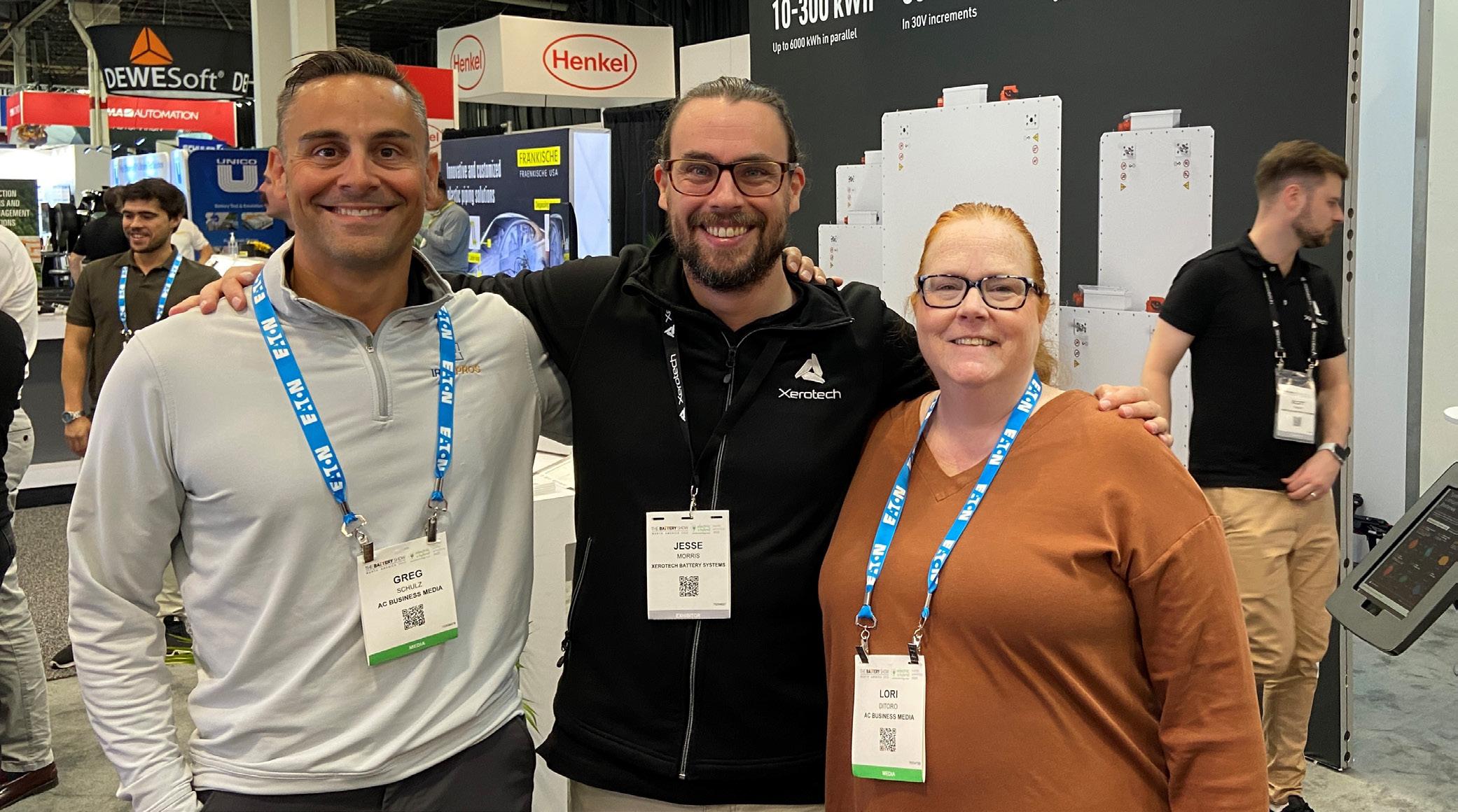
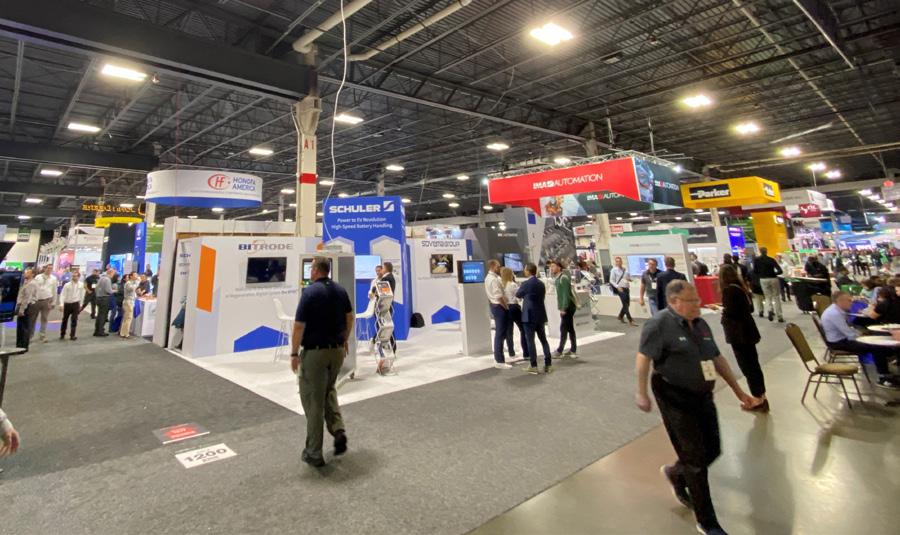
From humble beginnings, this year’s show had more than 15,000 attendees and 800 exhibitors. Because of the exponential growth, next year’s show will move from the Suburban Collection Showcase in Novi to the larger Huntingdon Place in Detroit.
One company that we spoke with, Zerotech, produces modular, customizable batteries for the construction industry and other off-highway applications. The battery packs can be combined to reach most required kilowatthour specifications. The company also has 12,000 customization options.
The Battery Show’s success ties directly to the topic of this month’s cover story, “Power Prospects” on page 8, which discusses the many power choices available today to
help decrease emissions. This includes battery power but also alternative fuels and hydrogen.
Another feature this month that connects with battery power is “Skid Steer Tech Trends: Increased Use Expected in New Applications” on page 14. It discusses electric and automation trends in these important machines.
Finally, “Heavy Equipment Undercarriages & Tracks Advancements” on page 26 covers crucial tracks and undercarriages in that keep equipment running optimally. Often underappreciated, this technology is increasing uptime and improving operator comfort and safety.
As we plan our editorial for 2024, email me at lditoro@ acbusinessmedia.com with any topics you would like us to include. We value your input.

EDITORIAL
Editor-in-Chief Lori Ditoro lditoro@acbusinessmedia.com
Managing Editor Gigi Wood gwood@acbusinessmedia.com
Senior Editor, Construction
Technology, IRONPROS Charles Rathmann crathmann@acbusinessmedia.com
Senior Editor, Equipment & Workwear, IRONPROS Michael Cheng mcheng@acbusinessmedia.com

AUDIENCE
Audience Development Manager Angela Franks
PRODUCTION
Senior Production Manger Cindy Rusch crusch@acbusinessmedia.com

Art Director Kimberly Fleming kfleming@acbusinessmedia.com
ADVERTISING/SALES
Brand Director Sean Dunphy sdunphy@acbusinessmedia.com
Assoc. Brand Director Nikki Lawson nlawson@acbusinessmedia.com
Sales Representative Kris Flitcroft kflitcroft@acbusinessmedia.com
Sales Representative Tadashi Soma tsoma@acbusinessmedia.com
Sales Representative Patty Maroder, pmaroder@acbusinessmedia.com
Sales Representative Megan Perleberg mperleberg@acbusinessmedia.com
Sales Representative Greg Schulz gschulz@acbusinessmedia.com
AC BUSINESS MEDIA

Chief Executive Officer Ron Spink
Chief Financial Officer JoAnn Breuchel
Chief Revenue Officer Amy Schwandt
Brand Director, Supply Chain & Green Industry Jason DeSarle
Brand Director, Construction Sean Dunphy
VP, Audience Development Ronda Hughes
VP, Operations & IT Nick Raether
Content Director Marina Mayer
Director, Online & Marketing Services Bethany Chambers
Content Marketing, Marketing Services Jess Lombardo
Director, Demand
&
Jim Bagan
LIST RENTAL Sr. Account Manager Bart Piccirillo, Data Axle 402-836-2768 | bart.piccirillo@data-axle.com
REPRINTS & LICENSING
Assoc. Brand Director Nikki Lawson nlawson@acbusinessmedia.com
lditoro@ACBusinessmedia.com E @EquipmentToday D @EquipmentToday C @equipment-today-magazine-official Q @equipmenttoday
BREAKING GROUND
Generation
Education
CIRCULATION & SUBSCRIPTIONS PO Box 3605 Northbrook, IL 60065-3605, Phone: (877) 201-3915 Fax: (847)-291-4816 circ.EquipmentToday@omeda.com
® Published by AC Business Media 201 N. Main Street, Fort Atkinson, WI 53538 (800) 538-5544 www.ACBusinessMedia.com www.ForConstructionPros.com/equipment www.IronPros.com Today’s Alternative Power Trends Are the EQUIPMENT OF THE FUTURE The floor’s growth and increased attendees moves The Battery Show and Electric & Hybrid Vehicle Exposition to a larger venue. Editor-in-Chief
Ditoro
Account Executive
Lori Ditoro Lori Ditoro
Lori
and
Greg Schulz talk with Xerotech’s Jesse Morris about the company’s battery packs.
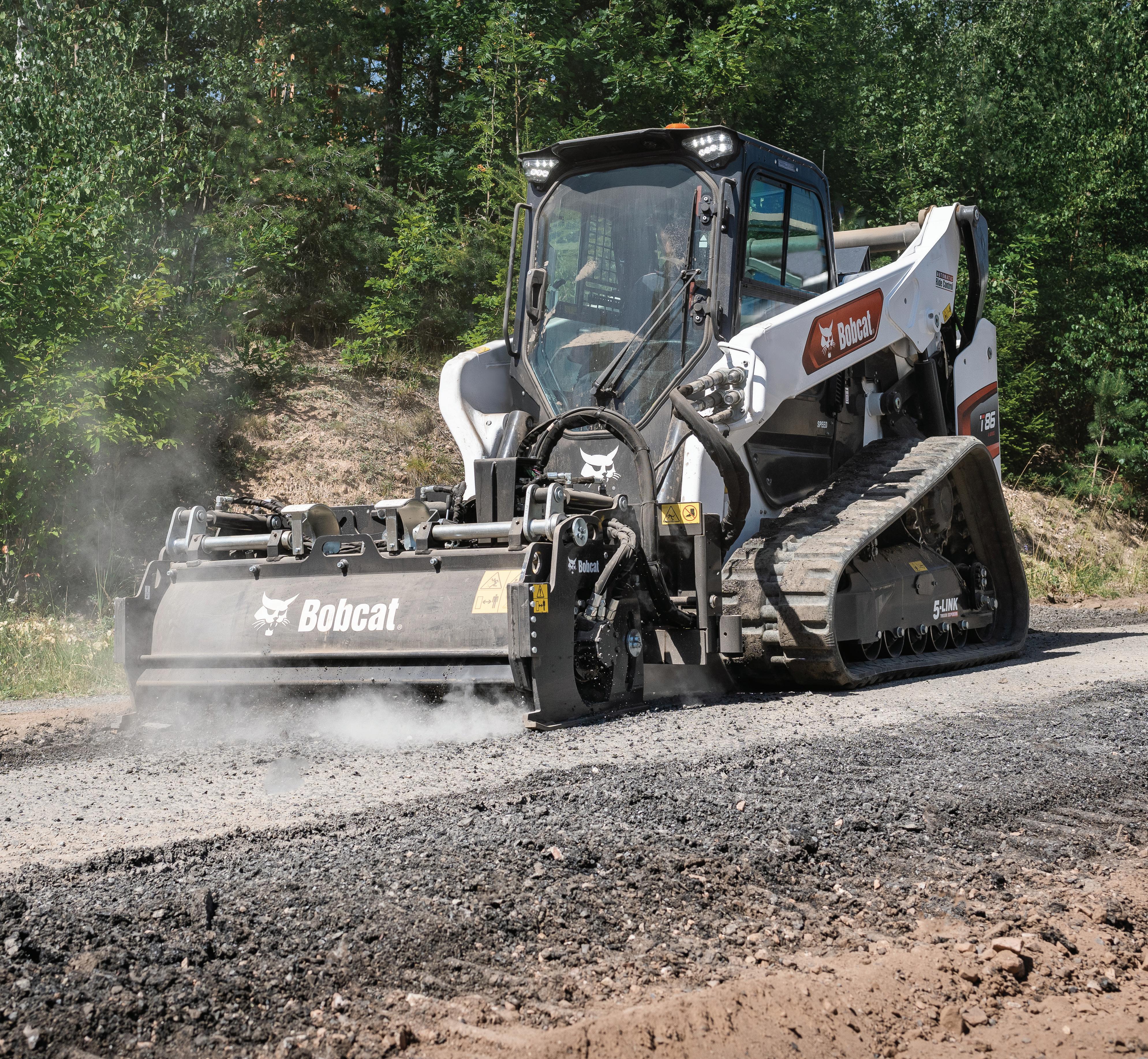

WE HAVE AN ATTACHMENT FOR THAT ® . ACCOMPLISH MORE WITH BOBCAT ATTACHMENTS.
® attachments bring you more capabilities, more productivity and more potential opportunities to expand your business. If you have the will to take on new challenges and major projects, Bobcat has the way. Bobcat Company is a member of the Doosan Group. Doosan is a global leader in construction, grounds maintenance and material handling equipment, power and water solutions, and engineering that has proudly served customers and communities for more than a century. Bobcat ®, the Bobcat logo and the colors of the Bobcat machine are registered trademarks of Bobcat Company in the United States and various other countries. ©2023 Bobcat Company. All rights reserved. BOBCAT.COM
Bobcat
These pages feature some of the latest equipment available. For more information on these products, use the QR code shown.
Milwaukee Tool MX FUEL 36-in. Walk-Behind Trowel
With 5-hp performance, the 36-in. power trowel has a maximum blade speed of up to 130 rpm. The MX FUEL REDLITHIUM FORGE HD12.0 Battery Pack allows the 36-in. trowel to deliver up to 25 minutes of run-time, approximately panning


2,000 sq.-ft. or finishing 500 sq.-ft. over five passes. The new MX FUEL Super Charger provides 2x faster charging speeds, charging the REDLITHIUM FORGE HD12.0 battery pack in 65 minutes to 100% charge. The battery pack and new MX FUEL Super Charger are COOL-CYCLE capable, an Active Cooling System that provides cooling.
Read More at www.forconstructionpros.com/22738343
Western Global Top Tote
The Top Tote can be attached to the top of a TransCube Global fuel tank for a 2-in-1 diesel and diesel exhaust fluid (DEF) solution. This storage tank can help operations meet DEF requirements for Tier 4 Final engines. The Top Tote has a lowprofile design to keep the overall height below 6 ft. to eliminate using a ladder or harness to access the ports. This DEF storage solution has a capacity of 110 gal. and can attach to three models of TransCube Global fuel tanks — the 20TCG, 40TCG or 50TCG. This is an advancement for end users because it creates a 2-in-1 storage solution that holds both DEF and diesel at the same time.
Read More at www.forconstructionpros.com/22833625
Werk-Brau Tilt Bucket Attachment

Werk-Brau has introduced the Tilting Bucket attachment with increased tilt force and 45 degrees of tilt in both directions. The attachments are designed to minimize machine repositioning which reduces wear and tear on the tracks and undercarriage. An oversized cylinder design increases tilting force, allowing the unit to hold the desired angle. Integrated cylinder guards protect the cylinders and keep them functioning without damage or leaks. For compact excavators a single cylinder design is used, while full size excavators utilize dual cylinders. The heavy-duty excavator bucket is built with high quality T-1 steel utilized in critical or high wear components, with a rigid top section to eliminate flexing.
Read More at www.forconstructionpros.com/22864879
EDCO Two Person Post Hole Digger
EDCO offers the two-person post hole digger for a variety of construction projects. A compact design allows operators to drill in tight spaces or around obstructions. Heavy-duty composite resin handlebars provide stability. This machine is powered by a gasoline engine. During use, the auger generates 177 ft. lbs. of torque at 140 rpm. The auger measures 53 in. in length with a 29-in. width. Available accessories include 8- and 12-in. auger bits for meeting specific drilling requirements.
Read More at www.forconstructionpros.com/22869437
John Deere 510 P-Tier Excavator
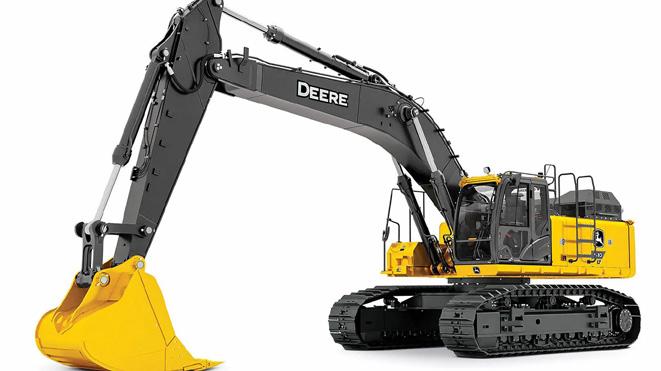
Coming in at 51-metric tons, the 510 P-Tier is a replacement of the current 470 P-Tier model. Including a variable undercarriage and the ability to handle buckets 5 yards and above, this new model will continue to deliver exceptional performance and capability in its class, while specifically targeting customer enhancements in operating costs and reliability. By using a more efficient powertrain, including the integration of E-fans, this new model provides customers up to 25% lower maintenance costs, 15% lower repair costs and 20% lower fuel consumption. This machine is designed to deliver performance to customers in mass excavation or deep underground applications while providing significant improvement in the cost of ownership.
Read More at www.forconstructionpros.com/22869569
Perkins 2806J-E18TAG1 ElectropaK Generator
Perkins has announced the launch of the 2806J-E18TAG1 ElectropaK generator, a new addition to the range of EU Stage V power offerings. The generator features a new engine that delivers a powerful package and integration, to meet the requirements of the electric power sector. By achieving ISO 8528-5 G2 performance, the 2806J provides load acceptance in a wide range of electric power applications. The 2806J produces up to 610 kVA at 50 Hz and is switchable to 60 Hz, delivering up to 625 kVA. The ElectropaK features a single, on-engine electronic control module (ECM) that simplifies wiring harnesses and installation, supports future diagnostics and is capable of integration with customers’ telematics solution.
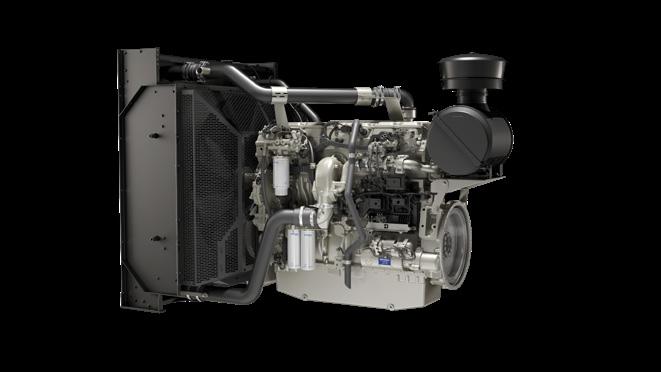
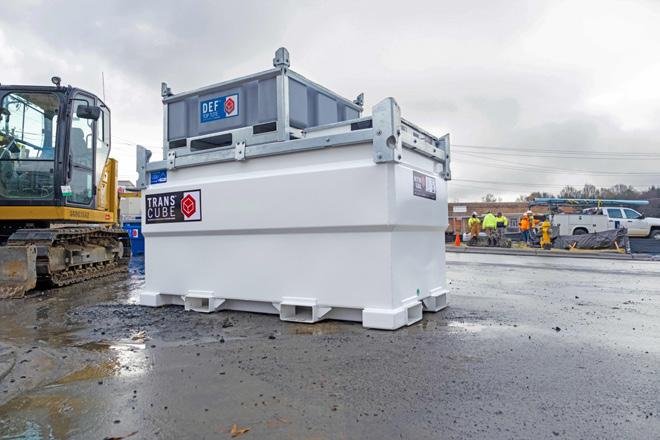
Read More at www.forconstructionpros.com/22870091
Kleemann MOBIREX MR 100(i) NEO/NEOe
Kleemann presents the first family member of the new NEO line with the launch of the MOBIREX MR 100(i) NEO/NEOe Mobile Impact Crusher. Two versions of the new impact crusher are available. Depending on the application area, it can be run all-electrically with the drive concept E-DRIVE, as well as locally, free of CO2 emissions [MR 100(i) NEOe]. Alternatively, the machine is available with the diesel-direct drive D-DRIVE. The MOBIREX MR 100(i) NEO/NEOe can be used in a wide variety of applications. Operation in tight spaces on worksites or in frequently changing places of work is possible.
Read More at www.forconstructionpros.com/22871103
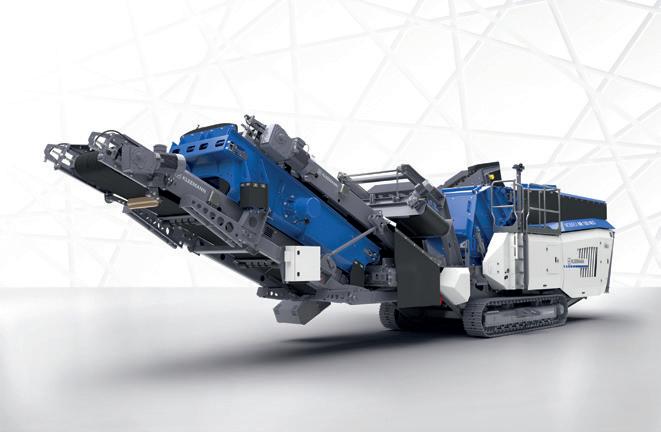
6 EQUIPMENT TODAY | October 2023 EQUIPMENT INTRODUCTIONS www.ForConstructionPros.com/Equipment
These pages feature some of the latest equipment available. For more information on these products, use the QR code shown.
JohnDow Low-profile Fuel Carrytanks
JohnDow Industries (JDI) has announced the launch of three low-profile fuel Carrytanks: 40-gal. Gasoline Carrytank (JDI-AGT40), 40-gal DEF Carrytank (JDI-DEF40) and 58-gal. Diesel Carrytank (JDI-AFT58LP). Designed to fit in the bed of a pickup truck below the height of truck bed sides, these Carrytanks offer a durable and portable refueling solution for a range of applications, including construction, automotive and fleet operations. Features include: Crafted from linear polyethylene, fuel level gauge indicates the amount of fuel available in the tank, 12V transfer pump capable of delivering fuel at a rate of 10 gal. per minute and more.
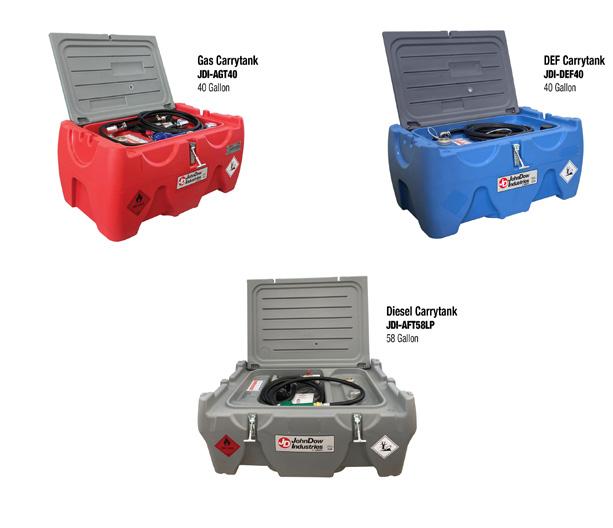
Read More at www.forconstructionpros.com/22868914
MB Crusher MB-R800 Drum Cutter
The MB-R800 Drum Cutter enables precision cutting, as well as grinding compact materials, on construction sites. The MB-R800 can be used for railway, airport, underwater work, tunnels, pipelines and road work. This attachment features a 40-in. cut width and a pick force of 25,003 ft.-lbs. Designed for heavy machinery equipment, the MB-R800 offers an output torque of 10,000 Nm. Available accessories include a spare parts kit, fixed coupling, low set drum kit, full set drum kit, dust suppression kit, high oil temperature reducing device, as well as rock and asphalt pick kits.
Read More at www.forconstructionpros.com/22866831
SafeGauge SafeTest Wireless Pressure Transducer Series


SafeGauge offers the SafeTest PT Series for technicians to monitor high-pressure hydraulic and pneumatic systems up to 164 ft. (50 m) away. This solution is wireless, enabling individuals to inspect systems at safe distances. Available in various sizes, these kits can also be configured with a variety of pressure ranges to meet the requirements of various applications. Individuals can pair the kit with a wide range of accessories, such as specialized fittings and adaptors, extension hoses and magnetic bases to facilitate hands-free pressure testing. Available pressure range options include: one to five bar, 25 bar, 100 bar, 300 bar and 600 bar.
CM Labs Wheeled Excavator, Walkaround Inspection and Instructor Operating Station
Comprised of proprietary and patented algorithms, the simulation training is based on real data and authentic machine behavior that interact with their environment and materials just as they do in the real world.
New introductions will include the following.
˜ Simulation training for Wheeled Excavator: Focuses on situational awareness and reduces safety risks within a dense urban environment.
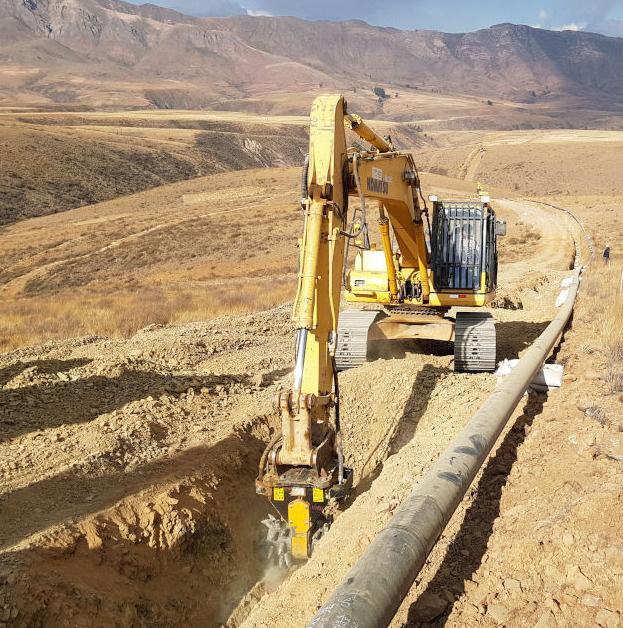
Training Pack includes heavyduty bucket and narrow tiltrotator with live attachment change exercise.
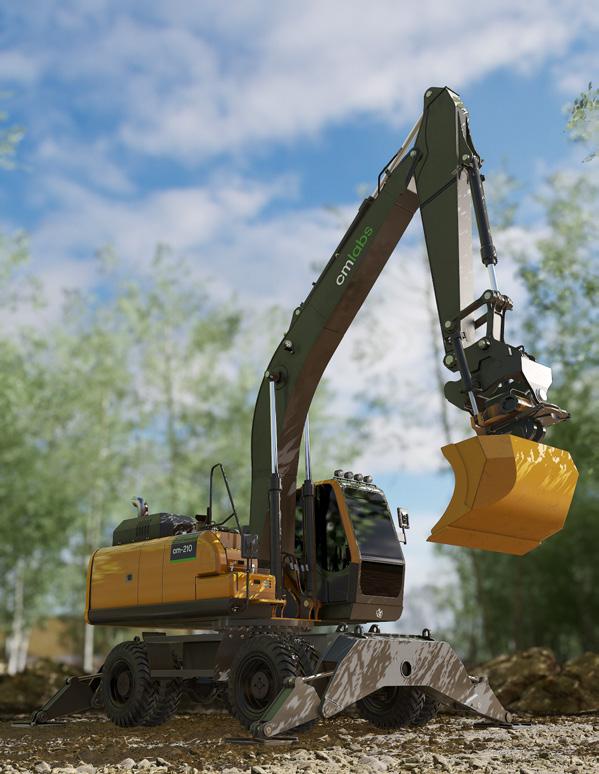
˜ Sneak peek of Walkaround Inspection featuring Excavator: Train for this step that directly impacts jobsite safety. Includes training on identifying and spotting issues on equipment.

˜ Support training programs with Instructor Operator Station: Enables trainers to monitor, assess and engage trainees via tablet or single workstation, personalized learning paths, updated metrics reporting, as well as new administrator functionalities.
Read More at www.forconstructionpros.com/22870416
Read More at www.forconstructionpros.com/22866046
VOTLEQ SKY 1000 Electric Mini Skid Steer Loader
The VOTLEQ SKY 1000 Electric Mini Skid Steer Loader can be used for material handling, transfer or lifting on construction sites. Equipped with rubber tracks, the SKY 1000 is powered by a 14.34 kW lithium-ion battery. The mini skid steer loader features a breakout force of 1,798 lbs. and a lifting force of 2,473 lbs. It can travel at a continuous speed of 2.8 mph forward and 2.5 mph reverse. Made in the U.S., this machine is compatible with more than 15 attachments, including both hydraulic and electric solutions, for added versatility. Operators can access several telematics capabilities, including GSM, GPS, speedometer and inclinometer.
Read More at www.forconstructionpros.com/22872269
Screening Eagle Profometer PM8000 Lite
Screening Eagle offers the Profometer PM8000 Lite for locating rebar, allowing construction professionals to find safe and stable areas to drill. This product is the latest addition to the Profometer family and the successor to the Profoscope. Profometer PM8000 Lite is stand-alone with no wheeled cart or app connectivity. Operators can access a high-contrast OLED screen for viewing controls and rebar location information. Leveraging eddy-current technology, the tool features a 7.3-in. cover measuring depth and 2.5-in. rebar diameter measuring depth. The Profometer PM8000 Lite is powered by two, AA rechargeable or non-rechargeable batteries. This unit has a runtime of eight hours.
Read More at www.forconstructionpros.com/22871854
EQUIPMENT INTRODUCTIONS October 2023 | EQUIPMENT TODAY 7 www.ForConstructionPros.com/Equipment EQUIPMENT INTRODUCTIONS
These pages feature some of the latest equipment available. For more information on these products, use the QR code shown.
Legrand 11.5 kW Level 2 Commercial Electric Vehicle Charger
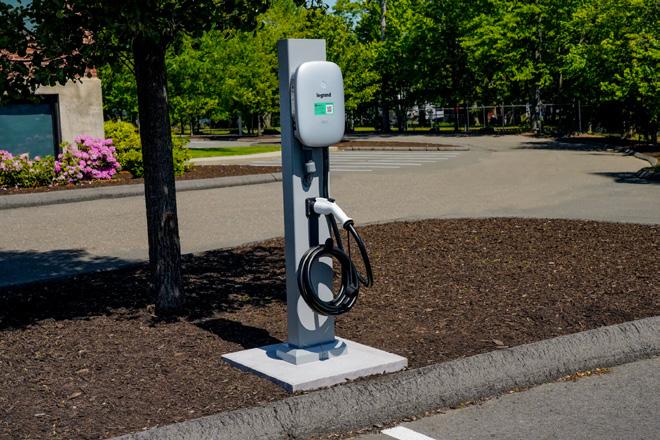
Legrand offers the Networked Level 2 Electrical Vehicle Charger for powering electric fleets and vehicles. Designed for commercial use, the 48-amp (11.5 kW) solution delivers a safe and reliable charging experience for users. A NEMA 3R rating enables the charger to be installed in outdoor locations and withstand exposure to water and debris. The Level 2 charging solution is compatible with 208-240V AC input power. This charger can be installed in parking garages, hospitality spaces, fleets, multi-unit dwellings, offices and more. The unit comes factory-configured with AmpUp, an EV charger operating system for drivers, fleets and station owners alike.
Read More at www.forconstructionpros.com/22872262
Elliott Equipment D47 Digger Derrick
The D47 features a 26,000lb. maximum lifting capacity, serving a range of lifting and material handling tasks. It also has a 17- to 26-ft. digging radius, making it capable of reaching difficult-toaccess areas. Standard features include 46 kV insulation, independent boom operation, transferable pole guide, line body and rear mounted hydraulic tool circuit. The D47 is also equipped with several features that facilitate operation and maintenance. These features include full pressure, open center hydraulic controls, hydraulic side load protection, a planetary swing drive and winch motor that are typically found on larger machines and a control console with high back air suspension seat.

Read More at www.forconstructionpros.com/22873045
DEVELON DD130 Dozer
Volvo CE Fluid Analysis Program

Volvo Construction Equipment is rolling out a new Fluid Analysis program. The service expands on its existing Oil Analysis program and now encompasses lubricants, diesel fuels, diesel exhaust fluid (DEF) and coolants. This new program will equip customers to take preventive action against contamination and wear. Fluid Analysis is Volvo CE’s first artificial intelligence (AI) platformdriven analysis to identify wear metals and contaminants or changes in fluid conditions. The new process uses data analysis to provide reports and insights to help customers make decisions. AI accelerates the testing process, allowing lab technicians to focus on more pressing issues such as analyzing abnormal or critical samples.
Read More at www.forconstructionpros.com/22872879
New Holland C330 Compact Track Loader
New Holland Construction has released the C330 Super Boom Vertical Lift Compact Track Loader in North America. Equipped with a 66-in. working width and a 67-hp engine, the C330 is designed with integrated elements such as low shoulder positioning and towers, supporting operator visibility and jobsite safety. The C330 vertical lift compact track loader features heavy load-carrying capacity to handle the transportation of substantial materials such as rocks, stone and timber. Leveraging electro-hydraulic control (E-H), the machine can navigate through tight residential spaces to pass through backyard gates and maneuver with ease between buildings. Featuring E-H controls, operators can transition between ISO and H-Pattern control, granting them full control over drive functions and attachments.
Read More at www.forconstructionpros.com/22872907
RIDGID K-4310 FXP Drum Machine
RIDGID has introduced the K-4310 FXP Drum Machine with a new cable counter that provides real-time, in-pipe cable distance for locating and diagnostics. Designed for residential and commercial plumbing and drain cleaning projects, its brushless DC motor spins at 230 rpm. Clearing 3- to 10-in. lines, the K-4310 FXP is powered by RIDGID’s new FXP Technology Platform that allows users to switch between battery and power adapters (in development). The Cable Counter feature helps professionals know where the cable is in the line as they are clearing blockages. The cable distance tracking feature allows professionals to always know where their equipment is located within the line.
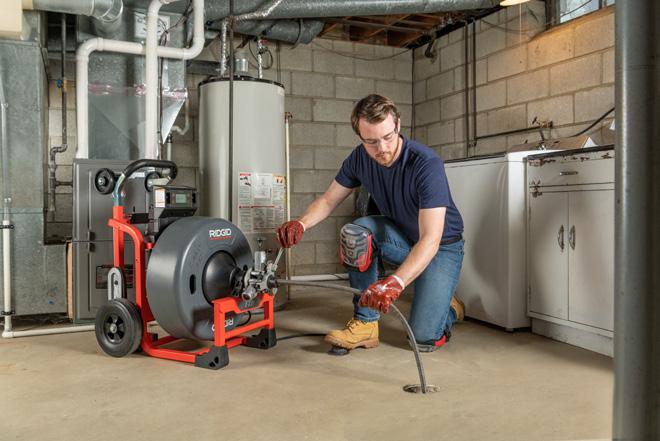
Read More at www.forconstructionpros.com/22873096
The new mid-size 145.8-hp DD130 dozer is designed to do grading, leveling, site preparation and land clearing. Functionality is driven by the dozer’s six-way power-tilt angle blade. Operators can minimize the number of passes on each job by lifting, tilting and angling the six-way power-tilt angle blade to move dirt or other materials where they need to go. A two-way mechanical adjustment also allows operators to adjust the blade pitch from 52 to 58 degrees to control how steeply it bites into the ground. The DD130 comes standard with the oscillating serrated track system, which maintains consistent, stable ground contact for grading performance. The oscillating serrated track system follows the terrain and enables blade control. Also available is a blade float function for back grading. The dozer blade moves up and down following the contours of the ground. A blade shake button helps operators remove materials stuck to the blade without leaving the cab.
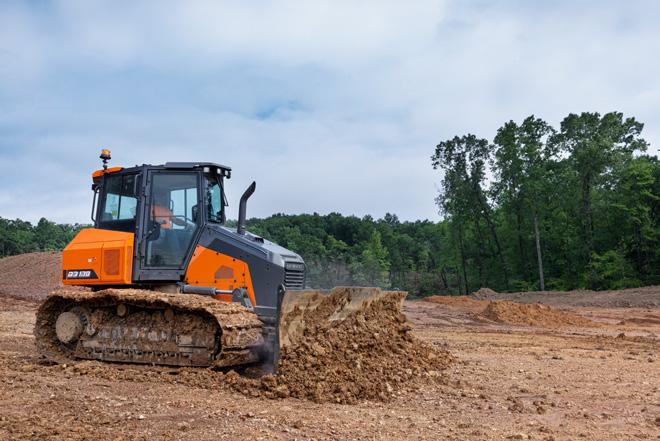
Read More at www.forconstructionpros.com/22872881
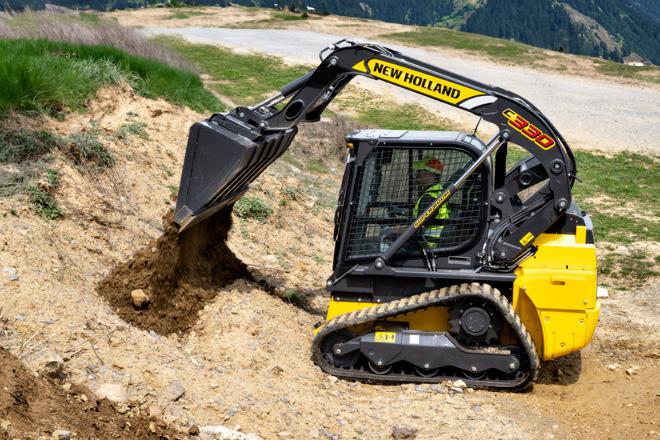
EQUIPMENT INTRODUCTIONS 8 EQUIPMENT TODAY | October 2023 www.ForConstructionPros.com/Equipment

POWER PROSPECTS
Diesel. Electric. Hybrid. Hydrogen. Deciding how to power heavy equipment no longer involves one choice, and many factors affect the method selected. The 2030 emission goals are seven years away, but the construction industry has already started to move toward them. Because the industry cannot flip a switch and change every piece of equipment in operation today, the process involves all fuel and power options. Original equipment manufacturers (OEMs) and contractors making improvements where they can today and planning for a cleaner industry tomorrow.
Optimized Diesel Engines
Diesel remains part of the solution for decreased emissions. While fossil fuels, in some cases, are slowly being phased out, millions of engines that operate on traditional fuels continue to be manufactured. During CONEXPOCON/AGG (CONEXPO) 2023, several manufacturers presented engines that
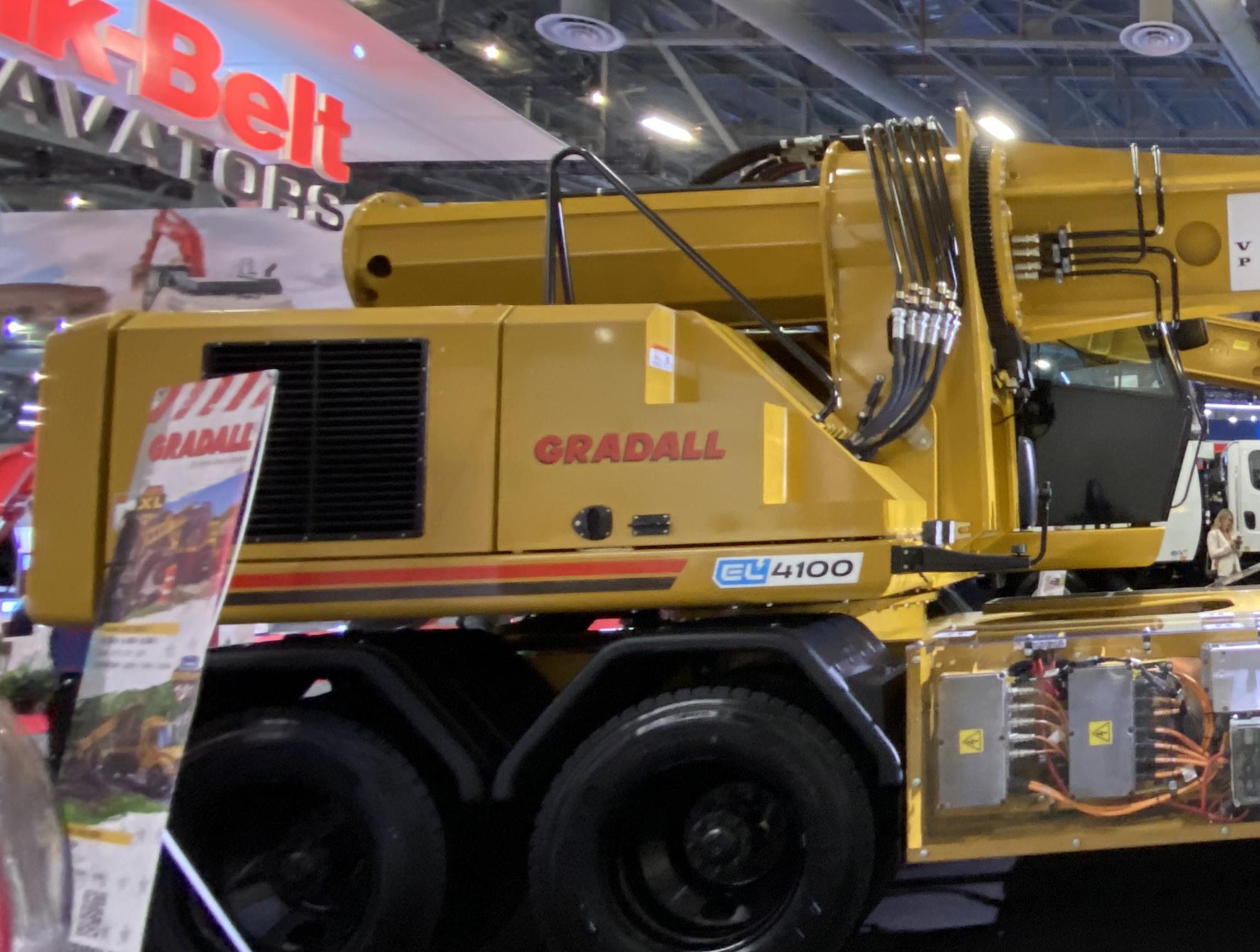
are optimized for fuel use efficiency and produce fewer emissions.
The Caterpillar C13D engine platform provides an opportunity for OEMs to downsize the engine and simplify the design, assembly and supply chain requirements. This consolidation can also reduce maintenance, parts and technical training complexity for end users, providing a lower total cost of ownership and operation. According to Dustin Childers, global marketing manager, Caterpillar Industrial Power Systems, the C13D also produces less noise and vibration.
The new engine platform offers up to a 20% increase in power and up to 25% more low-speed torque when compared to the previous generation of Cat engines in its power class. It is designed to perform at altitudes of up to 12,000 feet, twice as high as legacy Cat engines, and in extreme ambient temperatures as high as 140°F (60°C) and as low as -40°F (-40°C) with aids.
When sister publication OEM Off-Highway talked with Cummins
President and CEO Jennifer Rumsey, she discussed the zero goal. While she agrees that the move away from fossil fuels is the right direction, the industry is not there yet.
“Cummins built 1.2 million engines last year,” Rumsey said. “So, there’s a lot of engines going out into the field, ours and others, that will operate for many years.”
Electric Hesitancy often accompanies the conversation around construction equipment going electric. Among the concerns are:
˜ Having enough power and torque to do the work
˜ Keeping equipment charged
˜ Training operators and any changes in how the equipment is operated While these concerns are valid, OEMs are working to make sure all these problems are solved, particularly for larger machines.
During CONEXPO, Volvo Penta and Gradall shared a fully electric, highway-speed excavator that was
powered by a Volvo Penta electric driveline. The excavator will go through another year of testing before it is available.
The Volvo Penta team took a systems approach to this project and provided a complete system including batteries, motors and cabling. According to Darren Tasker, vice president, industrial sales, for Volvo Penta, the product will evolve over time. The Volvo Penta team is committed to science-based sustainability.
“At Volvo Penta we are firm believers that great projects begin with solid partnerships, and this collaboration with Gradall on the electric excavator is a prime example,” said Tasker. “Venturing into the realm of electromobility alongside Gradall marks a thrilling progression for both of us.”
“This nearly decade-long partnership, along with Volvo Penta’s full-system approach and expertise, made Volvo Penta the top choice for Gradall’s first step into
www.ForConstructionPros.com/Equipment COVER STORY | By Lori Ditoro, Editor-in-Chief, Equipment Today 10 EQUIPMENT TODAY | October 2023
The Gradall fully electric excavator with a Volvo Penta driveline.
PROSPECTS
electromobility. This was also Volvo Penta’s first electrification project in a construction application, and it paves the way for many more. Electrification will be one of the cornerstones in our transformation as we work toward meeting our goals of zero emissions by 2050.”
Here are the Gradall electric excavator electric driveline stats:
˜ The system will deliver 133 kilowatt-hours of energy
˜ Can reach full capacity in under 45 minutes from a 150-kilowatt charger.
˜ Powered by two Volvo Penta batteries matched to the duty cycle of the excavator, which fit into the engine bay

˜ Also includes the complete high voltage system (electric motors, gearboxes, inverters, junction boxes and cabling)
While much of Volvo Construction Equipment’s (CE) compact machines are electric, larger models are also moving in that direction. This includes the new Volvo EC230 excavator. Ray
Gallant, vice president — sustainability and productivity solutions, North America, Volvo CE, showed me the excavator and talked about the future of electrification in general and with Volvo CE.
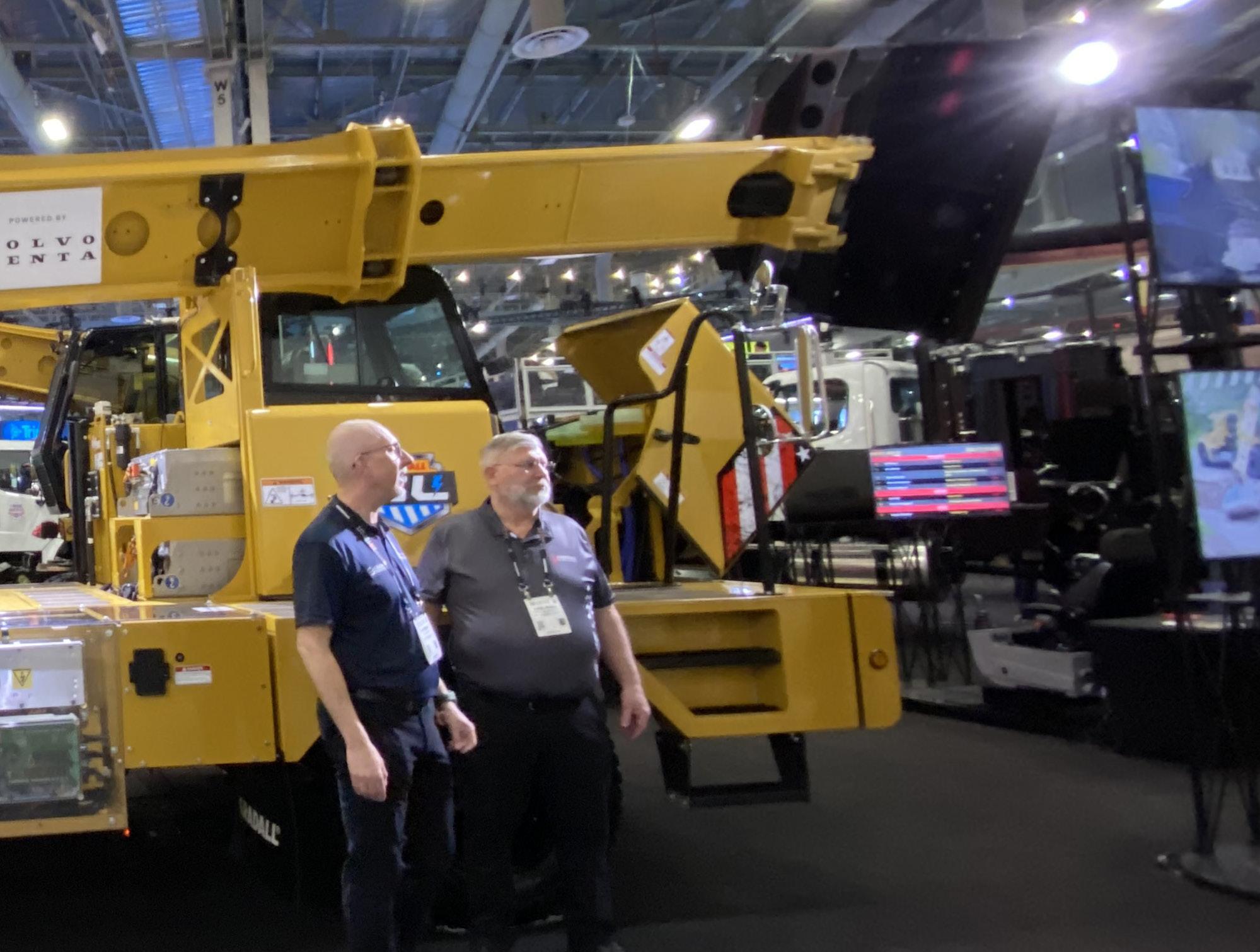
With many companies focused on a goal of decreased emissions and fully electric inventory in some cases by 2030, we started with this aim.
“The goal is 2030, for a lot of this, but we spent 100 years building up the diesel infrastructure. Is that [goal] realistic?” Gallant asked.
Among the challenges of manufacturing electric equipment to perform in demanding construction applications is the fuel sources, including charging stations in remote locations. Gallant sees finding sources as the common challenge between all the power types.
“When we talk about alternative power, it’s a lot of different things. It could be electricity; it could be gridconnected; it could be alternate fuels; it could be renewable fuels; it could be hydrogen. So, the challenge unique or
in common with all of those is we need the fuel sources,” Gallant said.
Volvo has added a fully electric, medium-sized excavator, the EC230. The EC230 excavator is a 23-metric-ton excavator. It is one of Volvo’s heavier battery electric machines. It has an extendable battery pack and 264 kilowatt-hours of storage for 66-kilowatt-hour batteries.
Many other OEMs have electric machines, including Bobcat, CASE, Caterpillar, FIRSTGREEN Industries, HEVI, Hitachi, JCB, John Deere, KATO-CES, Komatsu and Wacker Neuson. If an OEM is not working on an electric machine today, it will be in the future.
Hydrogen & Other Alternative Fuels
According to Gallant and many others in the industry, electric power will not be the solution for all applications.
“Other technologies come into play … In my opinion, if we bring in multiple technologies in tandem or in
the applications where they fit, [that is ideal]. In our line are some heavier machines where a battery is just not practical. It would be too heavy, too expensive or too long to charge.
October 2023 | EQUIPMENT TODAY 11 www.ForConstructionPros.com/Equipment COVER STORY | By Lori Ditoro, Editor-in-Chief, Equipment Today
Lori Ditoro
The Caterpillar C13D
Caterpillar Industrial Power/Perkins
So, we go to other sources of power, alternate fuels, hybrids, gridconnected directly or even hydrogen to make that transition.”
To that end, many OEMs are manufacturing engines that can use multiple fuel types. This includes the
Cat C13D engine platform discussed earlier. It can operate using renewable liquid fuels, including:
˜ 100% hydrotreated vegetable oil (HVO)
˜ B100 distilled biodiesel
˜ Up to B100 standard biodiesel
Cummins displayed its fuelagnostic engine during CONEXPO. Cummins’ 15-liter diesel platform highlighted a practical route to emissions reduction and decarbonization for off-highway applications. It showed a common architecture optimized for low- and no-carbon fuels including biodiesel and HVO, renewable natural gas and hydrogen. All engines derive from the same base, providing parts commonality.
At CONEXPO, FPT displayed its range of engines, including the technology that operates on alternative fuels. The team is also working on a move to hydrogen and produced a 13-liter engine prototype last year.
Also at CONEXPO, DEUTZ CEO Sebastian Schulte discussed the need and desire to support and grow their classic diesel business, where the company produced 185,000 engines. The diesel engine range is 2.2 liters
to 18 liters. However, he knows that DEUTZ must look to the future. He said that a carbon-zero future includes a mix of power options: electric, alternative fuels, hydrogen fuel cells and hydrogen combustion. Schulte said he feels that hydrogen combustion is best for off-highway applications that require more power than battery electric energy can provide.
One OEM that is all-in on hydrogen for larger machines is JCB. During a media visit in January 2023, I learned about the company’s new hydrogen combustion engine. JCB has several compact electric equipment options. However, for larger machines, the company is opting for hydrogen combustion.

After experimenting with a hydrogen fuel cell excavator, the team decided that the fuel cell prototype was too complicated, not robust and too expensive. Then they moved to hydrogen combustion.
While the team faced some major challenges when working on the design, Tom Beamish, principal engineer, JCB, discussed that this engine is not a conversion. The engine was designed from the ground up to be
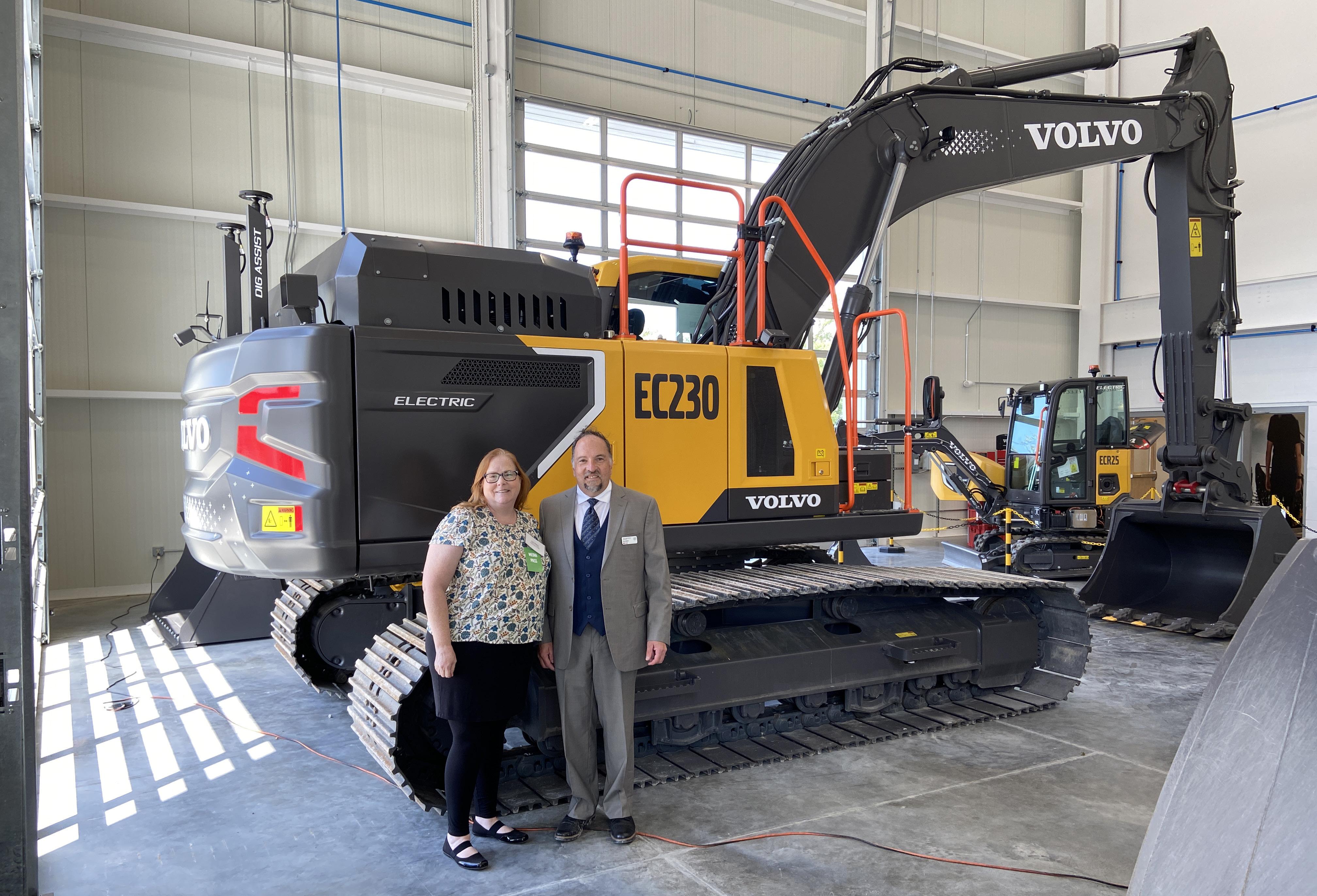
optimized for hydrogen combustion. While it’s not rocket science, it uses the same fuel and similar combustion principles as NASA.
Several engineering factors that had to be overcome:
˜ All materials that contacted hydrogen had to be carefully examined.
˜ A whole new control system for the engine was used.
˜ The spark system is new. This hydrogen-combustion engine made its North American debut during CONEXPO.
Reaching the 2030 goals
To begin or continue the move to zero emissions, all power prospects must be considered. This has been confirmed by virtually every OEM that the Equipment Today team has talked with. To learn what may work best for fleets, contractors should talk with their dealer or OEM to begin their transition.
Read more at: https://eqtoday.co/PowerProspects1023
12 EQUIPMENT TODAY | October 2023 www.ForConstructionPros.com/Equipment COVER STORY
Lori Ditoro
The Volvo EC230 fully electric excavator.
The JCB hydrogen combustion engine, officially launched in North America at CONEXPO.
Lori Ditoro
OurNameisOurPromise
For precision grading that any worker can do–and fits with existing equipment–there is only one best.
EVERY WORKER AN EXPERT OPERATOR
Level Best systems are so easy to learn that a worker who starts the day as a rookie will be precision grading with confidence by the end of the day if not sooner. Now you can have multiple crew qualified and not lose a day’s work when someone calls out.
UNIVERSAL COMPATIBILITY
No other grading attachment for CTLs and skid steers fits every combination of guidance system and compact power equipment already in your fleet.
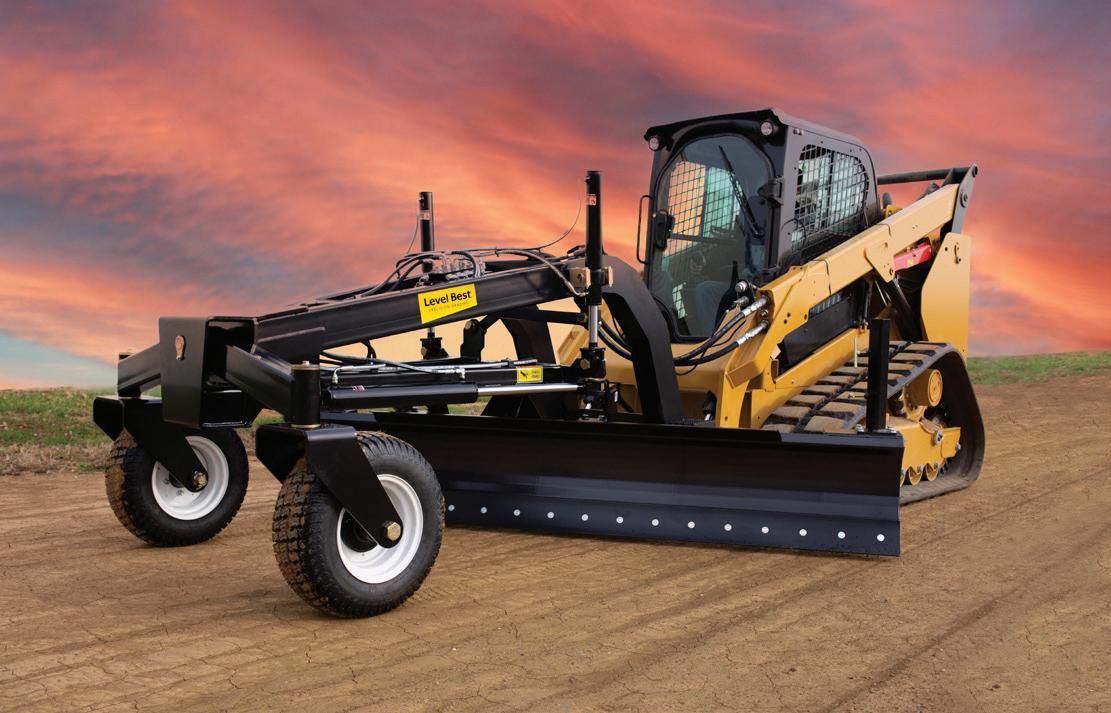
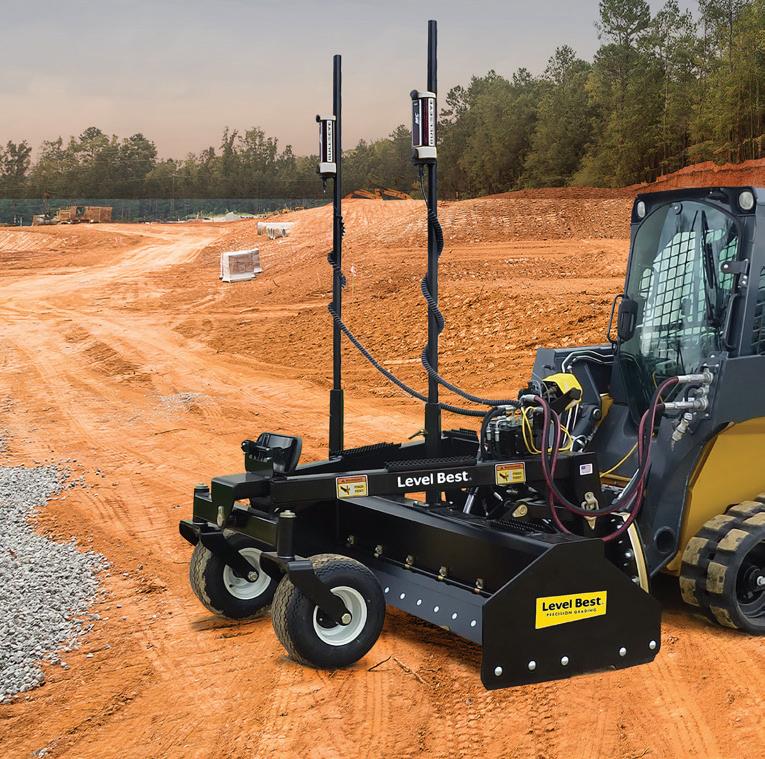
CHOICE OF GRADING STYLE
The Level Best Precision Grading Blade works in windrows and cuts through tough soil. A Level Best Precision Grading Box works in both directions, shaving down high spots and filling low ones at the same time.

READY FOR ANYTHING
Every Level Best Precision Grader comes ready for both 2D and 3D precision grading.

INDUSTRY-CHANGING INNOVATION
Once there were only three levels of grading accuracy. Rough, Finish and Final. But Level Best added Precision Grading to the mix. It grades with unrivaled accuracy.
IMMEDIATE PAYBACK
You can win more bids with Level Best in your fleet, because you don’t have to build in a 10% overage estimate for materials like gravel and concrete. With Level Best your bids come in with as little as a 2% overage. When you do the math you’ll see the bidding advantage.
THERE’S ONLY ONE BEST
Next time you’re thinking about grading equipment that adds to your bottom line and helps set you apart in the bidding wars, consider the best way to grade that construction site.
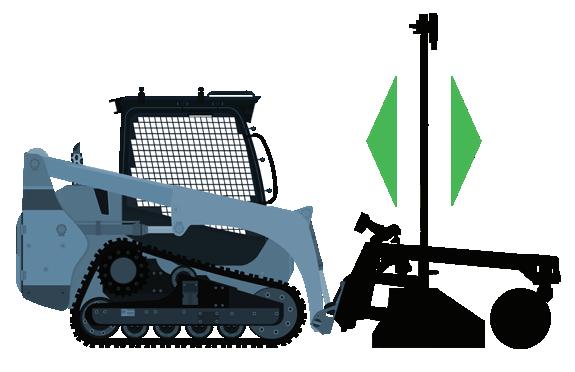
LEVEL IT BEST WITH LEVEL BEST.
The Level Best GB-108 works in windrows. Multi-axis adjustments.
The Level Best PD Series work in forward and reverse to level and fill uneven surfaces simultaneously.
Proudly made in the USA
LevelBestGrading.com
PRECISION GRADING BLADE
PRECISION GRADING BOX
Increased Use Expected in New Applications SKID STEER TECH TRENDS:
In early 2023, Bobcat Co. revealed the world’s first all-electric skid-steer loader, the Bobcat S7X. Operating on lithium-ion batteries like its compact track loader counterpart, the Bobcat T7X, the two machines promise high performance with electric power. Additionally, neither produce emissions.
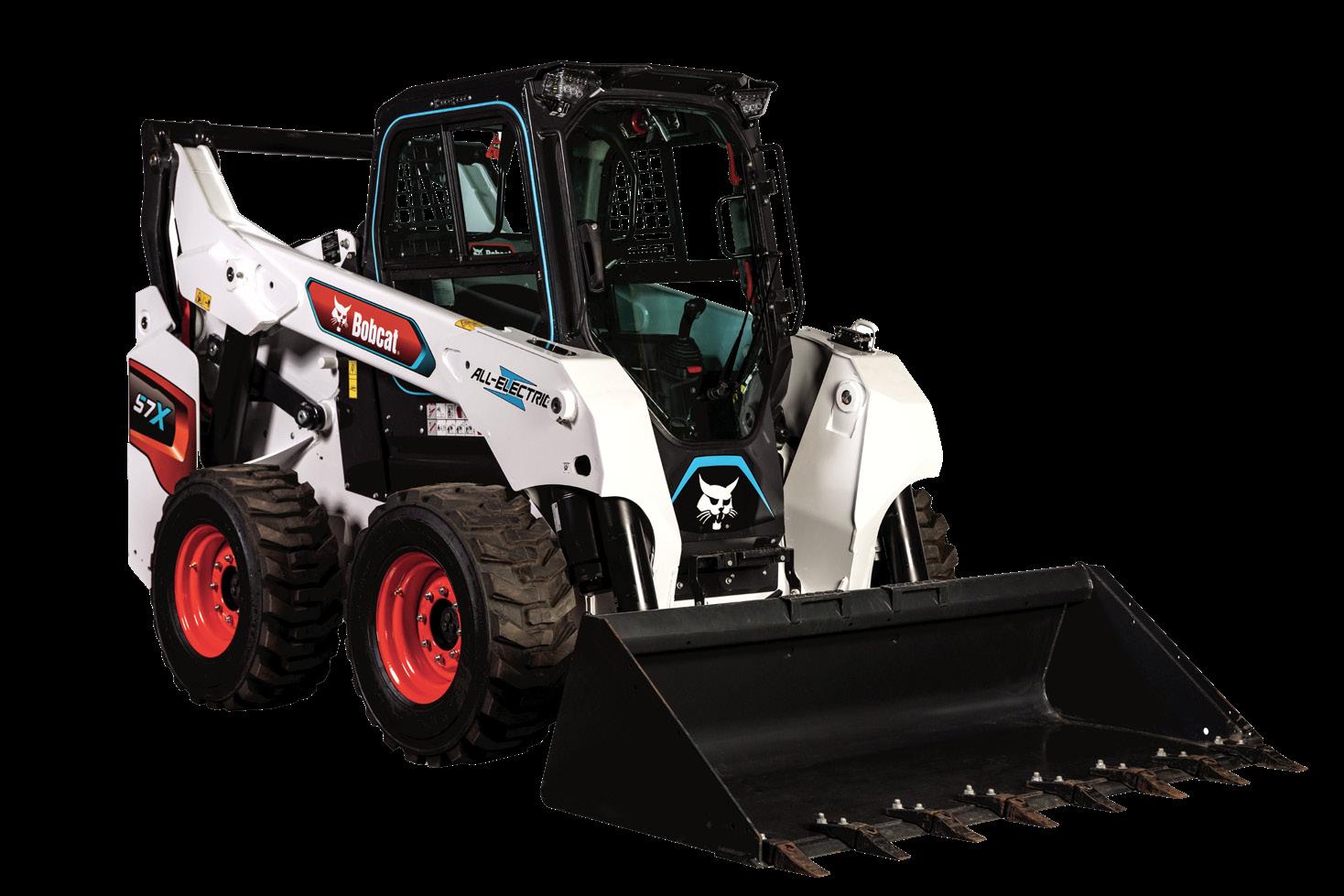

“As a result, operators can tackle tough jobs on environmentally sensitive
worksites or indoors where exhaust is restricted,” said Joel Honeyman, vice president of global innovation, Doosan Bobcat.
Aside from emission control, both loaders offer high productivity and reduced noise levels when compared to other similar equipment on the market, despite being more powerful than their diesel-hydraulic equivalents. Of equal importance, they feature electric drive motors, ball screw actuators, and electric actuation and propulsion, instead of hydraulics.
“Since they’re both powerful and quiet, they can be operated at all hours of the day, too, including in dense, urban areas, in which noise often limits operators’ work hours,” Honeyman added. Because of their minimal vibration and quiet operations, the all-electric loaders enable operators, particularly construction contractors, to have
comfortable, smooth experiences with each use. They’ll also notice a considerable increase in power, in comparison to the traditional dieselpowered loaders they previously used. As an example of this boost in power, the S7X can be operated for up to six hours at a time, while the T7X can operate for up to four hours on one charge, depending on the application.
“It’s important to note that, unlike diesel machines, when the S7X and T7X are at idle, they’re not consuming energy,” Honeyman said. “Apart from routine recharge cycles, each lithiumion battery, which, again, is featured on every all-electric loader, doesn’t require any maintenance, either.”
With regard to maintenance, the compact, all-electric loaders’ straightforwardness is noticed well beyond their lithium-ion batteries, as they each include roughly half the parts that diesel-powered compact loaders do, along with nearly 20% fewer electrical connections. Since they are equipped with fewer parts and electrical connections, the compact loaders—created in partnership with Moog Construction, a motion control components and
systems developer—also have fewer components to maintain and repair.
“These all-electric loaders take about 2 gallons of eco-friendly coolant and a half-gallon of gear box oil, compared to the nearly 60 gallons of fluids that are required in dieselpowered loaders, leading to cost savings on a short- and long-term basis,” he emphasized.
Enhancing Construction Automation, Via Electric Skid Steers
Much like Bobcat’s S7X and T7X, VOLTEQ Equipment’s electric mini skid steer, the SKY 1000, offers a variety of benefits, including emission control. For example, the SKY 1000 is built with fewer components than diesel-powered skid steers, leading to less maintenance and, in turn, a lower total cost of ownership than dieselpowered offerings.
The SKY 1000 also provides operators lower operating costs, along with a reduced need for planned maintenance and the convenience of not having to warm up engines. Furthermore, the skid steers don’t consume any energy when idling.
“Unlike diesel engines that continue running, even when
14 EQUIPMENT TODAY | October 2023 www.ForConstructionPros.com/Equipment EARTHMOVING
Bobcat
machines are in idle, our electric mini skid steers will automatically switch off whenever operators stop them, thus minimizing unnecessary energy consumption,” said Mike Slattery, vice president of business development, VOLTEQ. “They offer significant advantages, in terms of both operating and maintenance costs.”
The mini skid steers also feature immediate slow speed control and provide instant torque, resulting in faster responsiveness and more precise, controlled movements. And, as is the case with the S7X and T7X, VOLTEQ’s SKY 1000 operates quietly, almost silently, in fact, enabling them to be utilized in cities, as well as indoors, according to Slattery.
“They excel in indoor environments especially, due to their zero emissions and quieter operation, making them suitable for automating tasks like cleaning, debris removal and material placement in confined spaces,” Slattery continued. “When they’re equipped with remote control technology, they can be automated for tasks in hazardous or hard-to-reach areas, thereby enhancing safety and reducing operators’ risks.”
As a result of their battery packs, electric skid steers offer low centers of gravity, too, leading to high stability, said Martin Havrda, chief marketing officer, FIRSTGREEN Industries.
“Due to the maintenance-free nature of electric skid steers’ lithium batteries, along with their simplified mechanical systems, they also reduce the risk of breakdowns and the costs of sourcing and fitting replacements,” VOLTEQ’s Slattery stated. “This translates to lower maintenance expenses and increased uptime for construction projects.”
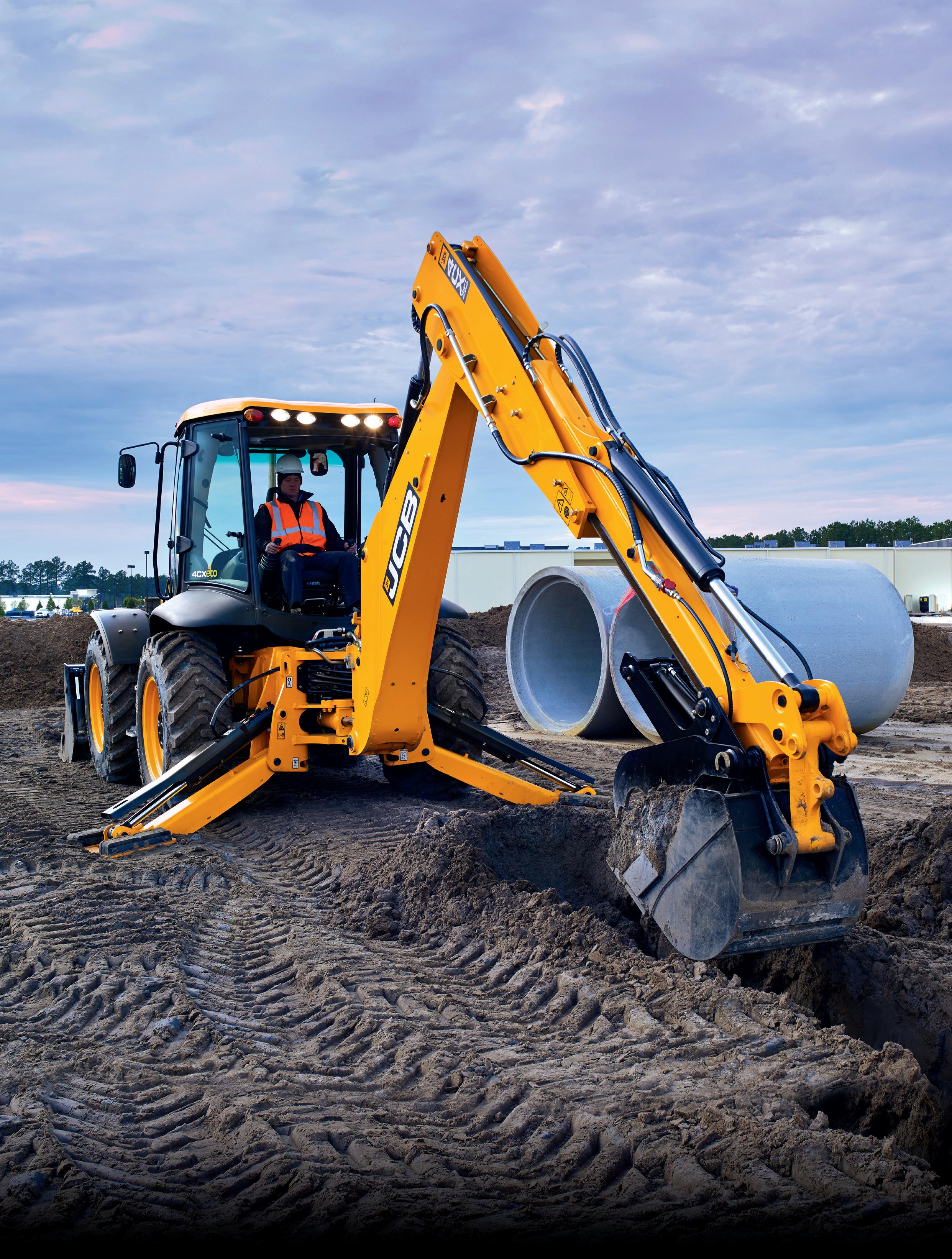
By using electric skid steers, operators can also easily automate their bucket levelling, which is electronically controlled and, subsequently, capable of quickly reacting to acceleration, deceleration and gradient changes.
“Bucket loads are automatically estimated, as well, in order to prevent machine overloading,” Havrda said. “Data is then uploaded into a remote diagnostic tool, which simplifies troubleshooting.”
The Latest Construction Automation Trends
With regard to construction automation as a whole, Slattery has noticed a variety of trends:
˜ First, because of mobile electronics’ advancements, manufacturers can offer operators automated functionalities, such as self-leveling loader arms, which have float control, in an easier and more cost-effective manner than before.
˜ Second, as a result of return-todig, along with the ability to lock
in a desired speed, operators’ equipment can automatically travel at that preferred speeds as soon as they move their joystick.
˜ Finally, several tasks, including the movement of materials from one area to another in an effortlessly mapped environment,
can be automated, via GPS and light detection and ranging LiDAR technologies. Meanwhile, according to Havrda, another key trend is being noticed, concerning construction automation: electric skid steers that can react to outside conditions. For instance,
FIRSTGREEN Industries’ electric skid steers can drive with full loads, while their electric motors automatically adapt to prevent overheating, especially as outdoor temperatures rise.
“The automation of certain tasks is also a new development, when it
Not only is JCB the world’s biggest backhoe manufacturer, but we also sell as many backhoes around the globe as all other manufacturers combined. It’s not that big makes us better. Rather, we’re big because we’re better. Buy better at JCB.com
EARTHMOVING
Most TRUSTED in the world doesn’t happen by accident.
comes to activities that are repeated, including materials offloading into containers,” he said. “Electric skid steers, designed for automation, will have a higher number of sensors and cameras too, which will function as their ‘eyes and ears’.”
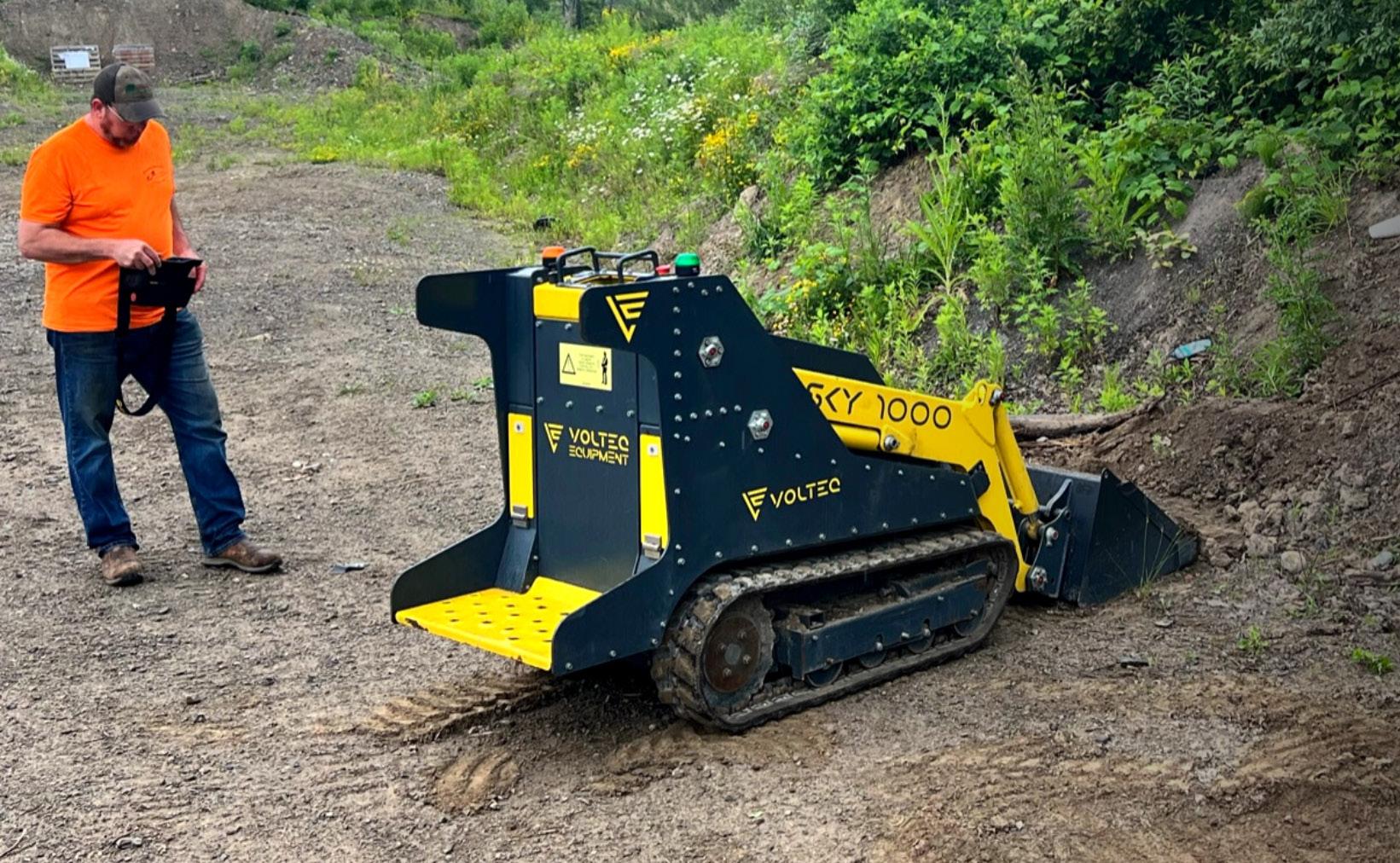
Meanwhile, according to Bobcat’s Honeyman, digitization is “changing the game,” regarding compact equipment, including skid steers.
“Automation, when applied intentionally and strategically, pushes productivity to new heights, resulting in more effective worksites,” he stressed. “For instance, technology features can reduce the number of operators that are needed on a jobsite, thus reducing costs and enhancing construction teams’ productivity.”
Bobcat provides digital offerings like Bobcat MaxControl and Bobcat Machine IQ, which enable operators to acquire as much from their investments as possible since they’re able to leverage smart, simple tools, in order to achieve more of their goals. As an example of its intelligence and ease of use, Bobcat MaxControl allows operators to control each of their Bobcat loaders and attachments from outside of their cabs, while using an iPhone, an iPad or other iOScompatible devices.
According to Honeyman, Bobcat MaxControl is especially useful when operators are shorthanded because two-person jobs can be handled by one person. In addition, by using Bobcat MaxControl, operators can avoid repetitive trips in and out of their cabs. While utilizing Bobcat Machine IQ, equipment owners can also monitor their Bobcat skid steers’ health, while remotely tracking information that enhances maintenance, security and performance.
“It’s also common for today’s skid steers to be equipped with displays and features, which streamline communication between operators and dealers as they discuss each of the equipment offerings,” Honeyman added. “This type of comprehensive detail and efficient communication will increase operators’ performance and uptime.”
Swarm Tech: Looking Ahead to the Future of Automation
As FIRSTGREEN Industries prepares for the coming months and years, Havrda anticipates the manufacturer will robotize its skid steers, enabling them to become fully autonomous in certain industries, such as agriculture and mining.
“We are aiming to reach a level of autonomy, in which the skid steers can operate without an operator, even a remote one,” he said.
At the same time, Slattery believes autonomous operation will likely emerge and follow the adoption of remote control that’s more near-term. He also thinks that, with autonomous
operation, swarm technology may very well be offered.
“Through swarm technology, groups of electric skid steers will be able to work together in concert, in order to accomplish the tasks that one skid steer might not be able to achieve alone or as quickly, at least,” he stated.
Additionally, Honeyman stressed that autonomous technology will offer operators new ways to complete their tasks more efficiently and precisely. According to Honeyman, autonomy can be associated with operatorassisted functionality, along with autonomous operation without any necessity for humans. In fact, Bobcat has implemented technologies that can do both—from its excavators that are equipped with depth check technology, which helps operators dig with increased precision, to self-operating mowers that can run without an operator onboard.
“Autonomous equipment, which can be used in agriculture, construction, forestry, landscaping and snow removal, will translate to smarter and more efficient jobsite performances,” he said. “And advanced technology will continue to play a significant role in the evolution of both electric and traditional compact equipment.”
As far as electric skid steers, as a whole, are concerned, Havrda believes that one trend will particularly be noticed in the future: they’ll be used in underground mining operations, as well as in enclosed areas without any ventilation, mostly in agriculture facilities, chemical plants, and other toxic and dangerous environments.
Moreover, according to Slattery, the construction industry’s continuous
shift to electric skid steers will lead to a conversion, in association with attachments—from those that are equipped with hydraulic motors, as is presently the case, to offerings that feature electric motors instead.
“This transition will not only demand less maintenance, but also extend battery life, due to electric drive’s heightened efficiency, in particular,” he said. “In addition, the adoption of electric skid steers could become a necessity, driven by local or federal regulations, especially in semiindoor or fully indoor work settings.”
Aside from this conversion, Honeyman adds that the ever-evolving construction industry will continue to demand alternative-power solutions that positively impact the communities in which they live and work, regardless of their environmental, social, and governance (ESG) goals. After all, many of Bobcat’s environmentally conscious customers have their own specific ESG goals, each of which can be supported by alternatively powered equipment to a degree. Yet, at the same time, they’ll also continue to acquire the power and performance that they’ve become accustomed to with their previous diesel-equivalent skid steers.
As a result of their steady focus on sustainability, operators and customers in general will notice more and more electric skid-steer loader offerings in the marketplace, according to Honeyman. Furthermore, much like every other innovation that was released to the public prior to electric compact loaders, enhancements to skid steers’ attachments, functionalities and tools will continue, leading to more
powerful, productive and versatile offerings.
“Instrumentation on Bobcat’s electric compact loader lineup is nearly identical to its traditional, diesel-hydraulic counterpart,” he said. “Since inventing the world’s first skidsteer loader, the manufacturer will continue to advance the construction industry’s skid steer options, as it strives to help its customers accomplish more.”
He continued, “We also think it’s important to recognize that there will be a need for both diesel-powered equipment and electric equipment for years to come. Therefore, we’re committed to offering variety, regarding our equipment selection, so that customers can choose what’s best for their jobsite needs.”
Popular Automated Tasks for Skid Steers Dedicated to providing operators diversity, with regards to their skid steers and other construction equipment, Bobcat’s machines, including its skid-steer loaders, have technology that will help operators become more productive and conduct their tasks more efficiently—even if some construction contractors may not be quite ready for fully autonomous loaders on their jobsites.
Again, Bobcat is currently providing enhanced, in-cab features and technology that enable two-person tasks to become jobs that one operator can easily accomplish. For example, since Bobcat MaxControl allows contractors to operate their Bobcat compact loaders from outside of their cabs, they can dig post holes more easily than in the past. And they’ll be able to maneuver their loaders
16 EQUIPMENT TODAY | October 2023 www.ForConstructionPros.com/Equipment EARTHMOVING
VOLTEQ Equipment
Since the SKY 1000 electric mini skid steers have fewer components than diesel-powered skid steers, they don’t require as much maintenance and they have a lower total cost of ownership when compared to diesel-powered offerings.
onto trailers and pass through gated entrances and exits more effortlessly than before, according to Honeyman.
Furthermore, Bobcat has introduced a radar collision warning and avoidance system in a concept format. Compatible on select Bobcat compact track loaders and skidsteer loaders, it’s designed to assist operators’ jobsite awareness, while operating in reverse.
“While using an active or passive setting, operators can either receive an audible alert or enable their machine to stop automatically, upon detecting an object in its path,” Honeyman said. “As evidenced by its offerings, Bobcat is focused on reinventing the way work gets done, a goal that will continue to evolve as its offerings continue to expand.”
Increasing “Workable” Hours With Electrification
In regard to trends concerning skid steer attachments, Havrda believes the construction industry will continue to shift toward the use of electrically powered attachments, rather than traditional hydraulic solutions. As this shift occurs, he stresses that FIRSTGREEN attachments won’t require any alternatives, based on automation or electrification.
“Not all traditional machines can run the new generation of electric attachments, but FIRSTGREEN Industries’ units are always equipped to handle both hydraulic and electric implements, in order to make them both usable with older equipment and future-proof as well,” Havrda said.
Along with utilizing electrically powered attachments more regularly, operators are also migrating toward cabs that will enhance visibility, particularly through features like improved lighting, enabling them to be utilized more easily in darker conditions. In addition, more and more cabs are becoming enclosed, thereby protecting operators from the elements and minimizing any downtime associated with bad weather conditions.
Automated functions, along with the ability to personalize different modes of operation that are the most ideal for them, particularly via time saving features, are becoming more popular, too. As a result, operators’ “workable” hours are increasing, resulting in a rise in productivity, according to Slattery.
“Versatility is another main advantage of skid-steer loaders, as they can use several different attachments for all types of work,” Slattery said. “By utilizing an automatic quick attach system, operators can easily switch their attachments without having to leave their cabs, leading to more efficiency between each of their tasks.”
As operators transition to electrical skid steers and attachments, Slattery
admits that minor adjustments, such as planning for charging, will be necessary. Nonetheless, due to time savings, along with the overall enhancements of their working conditions, he believes the shift is certainly worthwhile for operators and other contractors.
“Imagine working on a residential project without disturbing neighbors
with noisy equipment, or seamlessly operating in noise-sensitive areas like hospitals or schools,” he added. “Since electrical skid steers’ and attachments’ quieter operations enable operators to extend their work hours, they’ll be able to maximize their billable time and efficiency, leading to a potential rise in construction sites’ profits, possibly for years to come.”
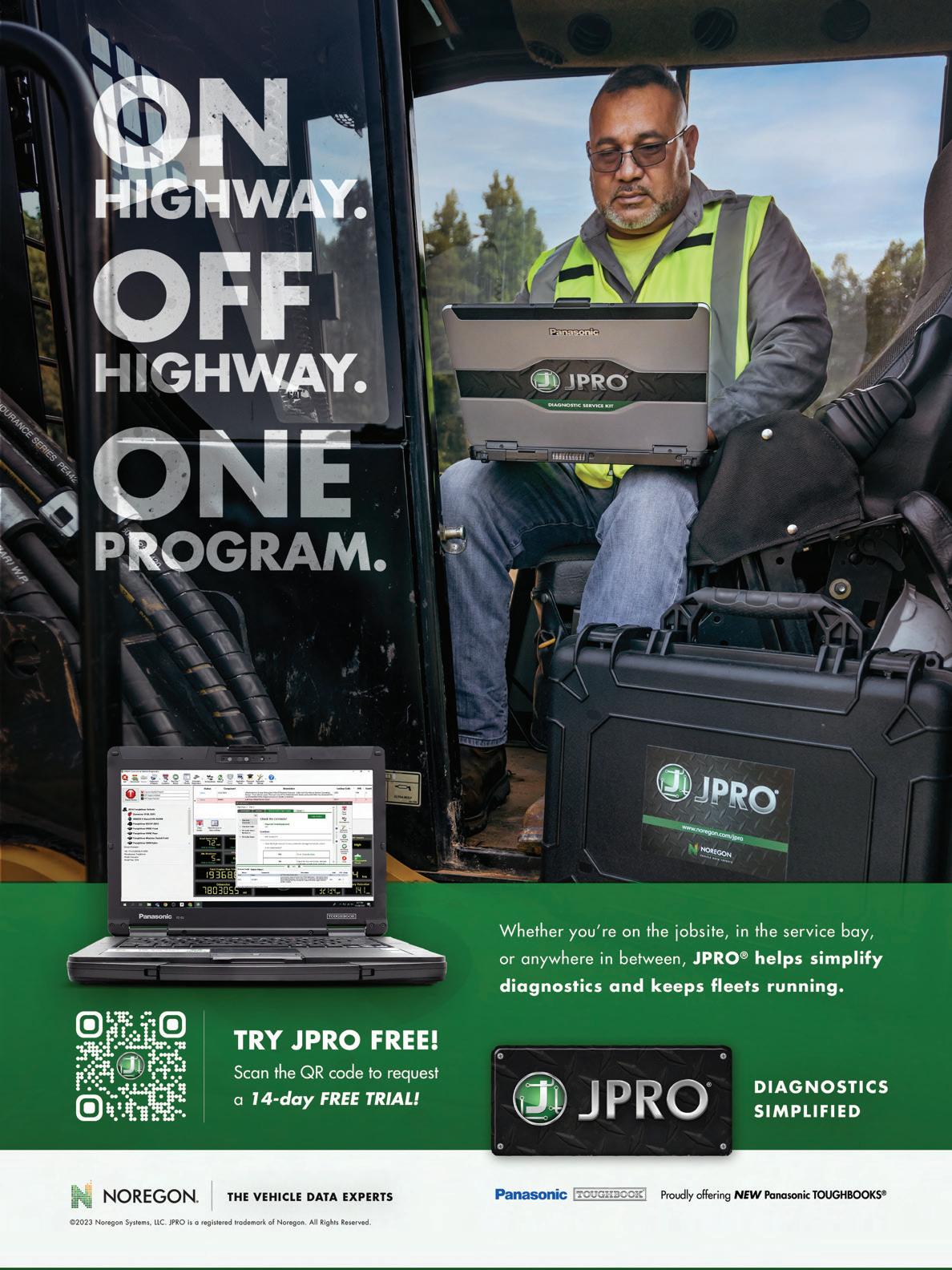
Read
at:
EARTHMOVING
more
https://eqtoday.co/skidsteer Chris Lewis is a freelance writer for Equipment Today
Werk-Brau’s D-Lock Coupler design includes industry-leading safety features like automatic front lock, dual pin locking, and a patented slide lock design to ensure safety on the jobsite.
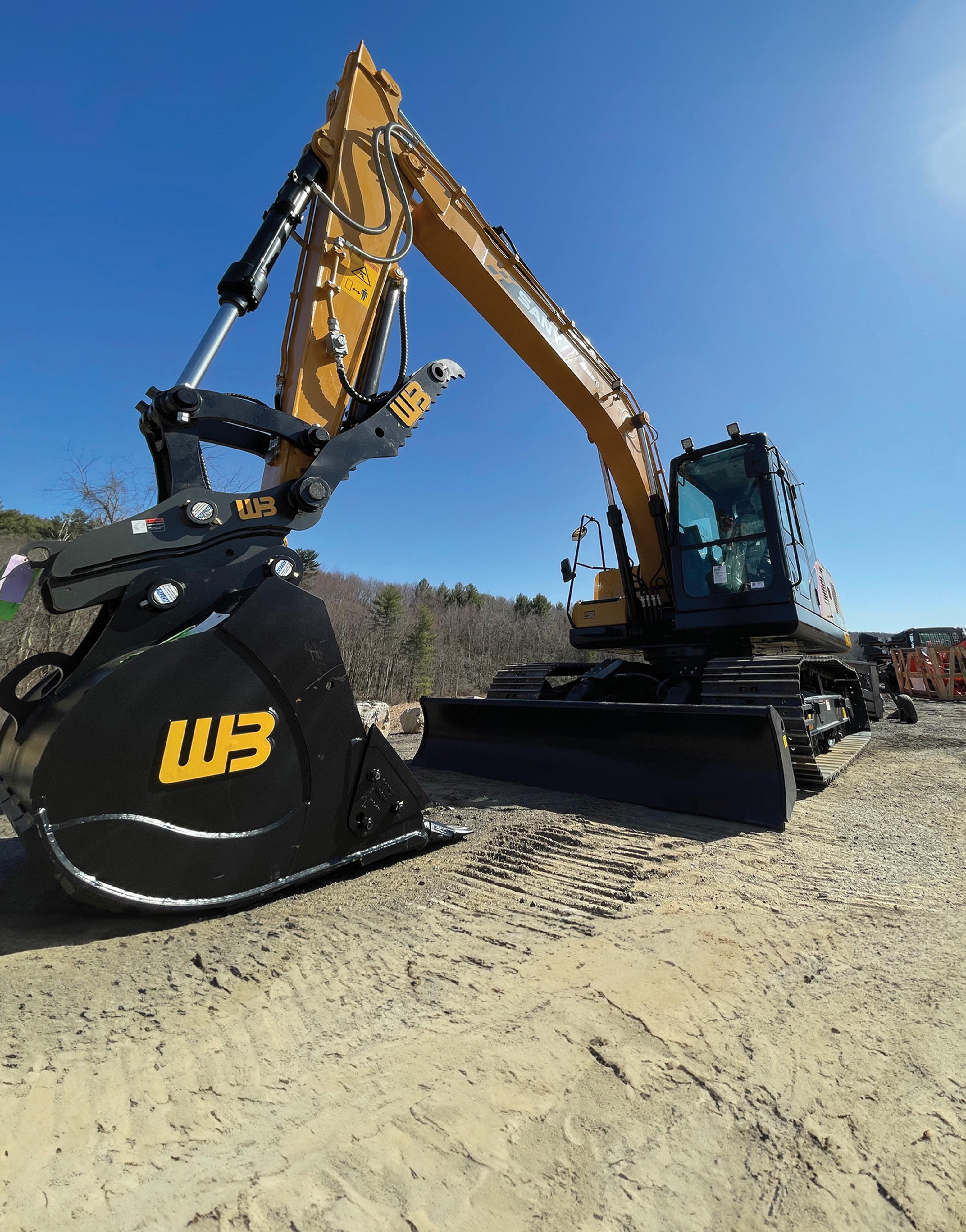
Werk-Brau
With construction work being a hands-on job, contractors need to be constantly aware of potential safety risks. This is especially true when using equipment attachments. When using attachments on heavy equipment, if not secured correctly, there is risk of serious injury to workers or damage to materials. Depending on the job, the work might have to be performed by hand or with smaller tools if not for a useful attachment. Having attachments makes your machines multifunctional and can greatly improve your crew’s productivity. Attachments are helpful in allowing workers to complete tasks more easily and efficiently, yet it’s important to be aware of potential hazards.
A big factor in attachment safety is ensuring that the implements are well taken care of and maintained. Forgetting to service or clean an attachment could result in the machine’s malfunction, possibly leaving your workers at risk. Maintenance isn’t the only thing to pay attention to, though. There are many different regulations and standards to monitor. Taking every precaution to keep you and your crew safe is extremely important.
What’s in Place Now
Knowing that there have been many construction workplace injuries and fatalities, the governing bodies in place to protect workers have standards and rules. One of the most well-known enforcers is the Occupational Safety and Health Administration (OSHA). OSHA provides regulations and requirements for attachments and their safety measures. The International Organization for Standardization (ISO) also has a specific standard (ISO 13031) for quick couplers on earthmoving machinery to keep users safe.
Christian Yanes, SteelWrist’s vice president, region EMEA, explained that “there are many different quick coupler solutions on the market, as

well as local or regional regulations of what is allowed.”
This may complicate following regulations. But when these kinds of rulings and regulations aren’t taken into consideration, there can be major issues.
What Can Go Wrong?
A lot can go wrong if an attachment connection fails. Here are three possible consequences operators and crews could face because of a connection failure.
1. DANGER TO OPERATORS & WORKERS
If attachment connectors are not properly secured, the operator of the machine could be injured.
According to Mike Noward, WerkBrau’s regional account manager, operators experiencing a failed attachment “may be struck by or caught between the moving parts or be at risk of falling from an unstable machine.”
Workers or pedestrians nearby could also be hit by a detached tool or even by the machine itself.
2. PROPERTY & EQUIPMENT DAMAGE
When an attachment is not secured appropriately, the tool could fall and cause destruction to any property, buildings or machines in the area.
The sudden detachment may also result in damage to different components of the equipment.
The disruption caused by the disconnected attachment could lead to a breach of balance and would raise the likelihood of the machine tipping or rolling over. These possibilities could involve detrimental downtime as well as pricey repairs.
3. ENVIRONMENT & TIME CONSEQUENCES
If the machine is carrying toxic material when the attachment failure occurs, repercussions to the surrounding environment could occur.
Noward states that if the attachment “contains hazardous materials or fluids, [it] can pose environmental risks, including spills or contamination of soil, water, or air.”
The environment could suffer if attachment connectors are not properly secured. Delays could occur if you don’t practice safe attachment connections. An environmental spill may result in a delay in the work schedule. A slowdown could also be caused if a connection fails in general because of the time taken to pinpoint the reason for detachment, reattach the tool and make sure that the connector is placed back on correctly.
How to Prevent Detachments
Manufacturers in the industry try to minimize risk by adding things like visual and auditory indicators that machines are activated. There are also precautions that operators can take.
A new trend in attachment safety, according to Yanes, is “locking one of the attachment pins whether the attachment is well connected or not” because it helps prevent accidental detachment.
While much can be done to help prevent attachment failure, one of the best ways for contractors to protect their crew from injury is to make sure operators read and become familiar with the machine’s user manual.
Yanes said, “New technologies require education, and this education is handed over to the owner of the equipment in [the] form of user manuals that [manufacturers] expect the owners to read and understand.”
To prevent issues, OEMs are meeting safety regulatiosn during the design process. “Manufacturers are increasingly adhering to these standards during the design and production of excavator coupler attachments to enhance safety measures.”

But what can you do to prevent attachment issues?
Tips on Keeping the Crew Safe
˜ Read the machine’s user manual. User manuals are provided for a reason. They have all the important information about safety precautions and correct use.
˜ Conduct regular inspections. Your attachment connectors must be checked often to ensure that everything is running smoothly and is up to date. Operators should also complete daily walkarounds to ensure everything is in place and looks correct.
˜ Make sure that everyone is properly trained. Whether it’s the machine operator or ground workers, each crew member needs to be thoroughly trained on safe attachments and safety procedures. Operators, specifically, need to know how to care for the equipment and how to properly connect attachments and maintain attachment safety.
˜ Keep couplers clean and lubricated. The cleanliness of couplers is essential. Dirt and debris could cause damage to the coupler or cause it to not work correctly. If the team doesn’t maintain the lubrication of the coupler, smooth operation is less likely and might cause damage because of extreme wear and excess friction.
˜ Collect documents and avoid loose ends. File maintenance documents and keep them for a full record of the machine’s history. Tighten loose bolts, pins and other components.
˜ Keep things up to date. Checking the machines involves noticing when attachments need to be changed because of damage or regular wear and tear. When attachments become worn, the security and efficiency of the connection are at risk.
Attachment Safety Boils Down to the Contractors & Operators
Construction workers know what they are trained to know. This means that safety training must be taken seriously and safety precautions need to be taught. Proper handling and care of machines is a must, and the upkeep needs to be constant and consistent.
Becoming familiar with user manuals and attachment regulations and standards is critical. Being diligent with your crew’s training and being vigilant about the machines will allow crews to be in the safest environment possible.
Attachments can be useful on the jobsite and can make labor shortages more manageable. In this respect, attachments are important tools to have access to, but they can be dangerous if not taken care of and handled properly.
Read more at: https://eqtoday.co/attachsafe
October 2023 | EQUIPMENT TODAY 19 www.ForConstructionPros.com/Equipment
Steelwrist’s Quick Coupler features front axel locks for extra safety.
Steelwrist
Steelwrist’s SQ Coupler helps change attachments in a matter of seconds.
EARTHMOVING | By Merina Shriver, Junior Editor, ForConstructionPros.com and IRONPROS.com
Steelwrist
EFFICIENCY EXTRAORDINAIRES: Streamlining Snow Operations
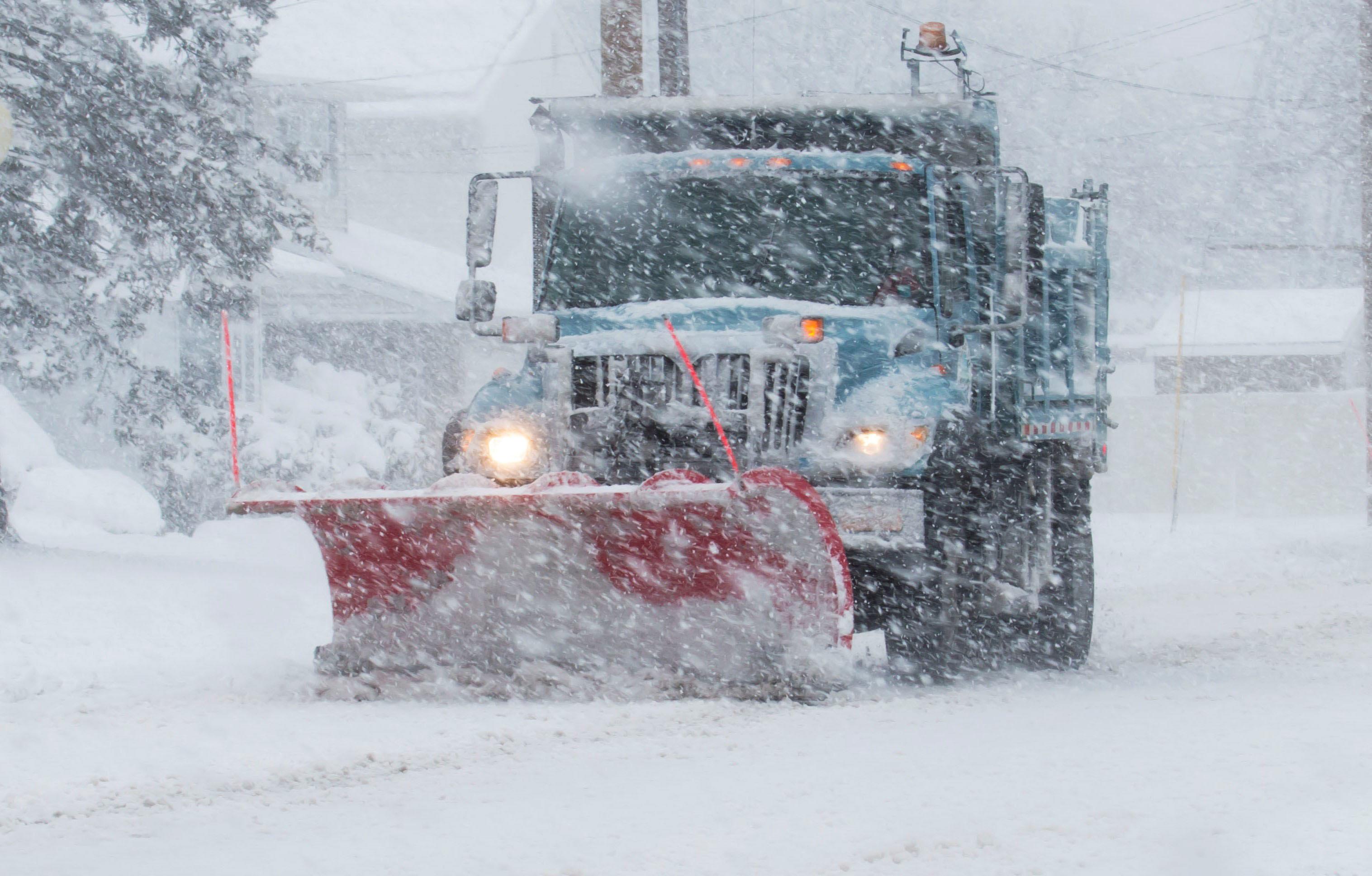
By the time a snowstorm comes roaring onto the radar, snow and ice removal companies have already begun to run out of time to prepare for what’s to come.
That’s why it’s important that they streamline operations to become as efficient as possible during the busy winter months.
“Time is of the essence with snow, and you have to be able to adapt to the conditions at the drop of a hat,” said Elizabeth Bonadonna, president of Busy Beaver Lawn & Garden, in West Seneca, New York.
“You need a plan to make sure people are safe from the conditions but also that you are providing services you promised. Streamlining operations, reducing waste and increasing efficiency can all affect the bottom line of your business.”
Bonadonna and Joe Uran, president of Nordic Snow Management in
Hopkins, Minnesota, discussed how they keep their snow operations running smoothly and effectively.
For Busy Beaver Lawn & Garden, the recipe for a seamless snow season comes down to making the right hires, thorough training, and implementing technology to streamline processes and communication.

“We believe in hiring the right management team and teaching them the secret recipe for success, empowering our staff to make the right decisions and coaching them on how to adapt and overcome and providing feedback and reflecting on what worked and what didn’t,” Bonadonna said.
Hiring & Retention
At the beginning of a snow season, Busy Beaver holds a “winter kickoff”— part in-class training and part hands-on demonstrations. The class reviews standards and expectations,
while the hands-on portion includes familiarizing staff with equipment and reiterating safety features and functions.
“We have site maps and route lists that are all digitized, like a Service Autopilot application that has all the information they’d need, and then we also make sure they know how to operate the equipment properly— things like putting on a box and taking it off, what our standards are and what the industry standards are,” Bonadonna said.
The company, which staffs about 50 to 70 employees based on the snow event, also takes employees on site visits to show them what needs to be done and where to put the snow.
“We show them where the equipment’s staged, how to grease the equipment, make sure they know how to start it and ensure that they know specific details about it,” Bonadonna said. “We provide patterns for them,
but we also try to empower people to utilize their skill sets as best they can because they know what works. They know the wind patterns and what’s most efficient.”
The company has been providing such training since its inception.
“We believe it makes operations smooth and provides structure for our staff and our customers,” Bonadonna said.
To bring the hires in the front door in the first place, Busy Beaver relies on a hiring software and word of mouth.
“The software is constantly bringing in candidates, but it’s also our marketing and word of mouth,” Bonadonna said. “When people work with us and they like our company, they’re going to tell their friends that this is a great company with a great work culture. People see that we have structure and a good culture, and that’s attractive.”
www.ForConstructionPros.com/Equipment EARTHMOVING |
Green Industry Pros 20 EQUIPMENT TODAY | October 2023
By Sarah Webb, Editor,
coachwood - Adobe Stock
As snow removal companies add new contracts, they often need to seek out new equipment specific to those needs, routes and sites.
Systems & Processes
During the offseason, Busy Beaver’s staff is busy creating programs and a winter game plan using technology such as SiteMaps.
“This way, it’s all prepared with our contractual obligations and specifics to know hours, shift changes and maps,” Bonadonna said.
Additionally, the company’s equipment is all staged and ready when the winter season begins, thanks, in part, to its own fleet of mechanics staffed to service equipment.
“We have several hubs, but people will know where they’re dispatched to and what the expectations for service are at each site,” Bonadonna said.
During, the company implements checkoff sheets to know what sites were serviced and that processes were fully functioning and ensures that dispatch and office support are available 24/7 during snow events.

“It’s taking the time to know that you have X amount of time, X amount of equipment, X amount of people, and that you can use all of that efficiently,” Bonadonna said. “Taking all these things into consideration shows that the leadership continually wants to improve and rise above the rest. We believe that teams realize that when an organization is putting their best foot forward and making it better today for tomorrow.”
Equipment Focus
Communication through technology, preseason prep and ready-to-roll equipment are three big factors keeping Nordic Snow Management’s operations up and running.
“With snow, you basically have one chance and a 12-hour window to get it done,” Uran said. “You can’t call and say that you didn’t get there for this reason or the other, so we spend a lot of time preseason making sure everything is well planned and that there are backup plans. When
problems do arise, we can take care of them quickly and still have everything completed.”
For each site that it plows, Nordic Snow Management, which focuses purely on commercial sites, dedicates specific pieces of equipment and machines to that site.
“We match equipment to the site because you wouldn’t use a pickup truck to plow a big box store the same way you wouldn’t use a large wheel loader to plow a driveway at a house,” Uran said. “A big thing for us is equipment purchasing and planning, and then matching that equipment to specific sites.”

At its current capacity, all the equipment Nordic owns is committed to sites. As the company adds new contracts, it seeks new equipment specific to those routes or sites.
“So, if we were to pick up a shopping center, we would evaluate the contract length and value and potentially go purchase something for that site,” Uran said.
More so than helping with efficiency, Uran said this strategy helps with money.
“Equipment is typically more money upfront, but it’s cheaper to own and operate in the snow industry,” Uran said. “We started using the stuff we already own and put it to work. Then, as we grow, we purchase and seek out equipment specific to our needs for the upcoming season.”
To ensure its equipment is in tiptop shape, the company performs pre- and postseason inspections on all vehicles and performs maintenance and big repairs in the spring.
“Fall is very busy, so by then, everything is ready to go,” Uran said. “You never know when the snow will start, so by the preseason inspections, it’s quick once-overs to make sure nothing has changed and sending the machines out.”
Communication & Technology
Communicating with staff is another key to efficient operations, Uran said.
Before every snow event, the company communicates expectations and whether any changes are expected.

“Once we get started, we’re in constant communication with everybody to see how things are going, and we monitor in real time with GPS, so if we start to notice a crew or area is behind, we have flex position or management people that will help that crew catch up.”
Similarly, if a crew is behind or there are equipment issues, Nordic will be flexible and pull equipment from a different route to use on the route that crews are struggling to keep clear.
While the tracking is done through GPS and the snow management system, Yeti, communication and dispatching calls are made via phone.
“With Yeti, it’s already prebuilt, so crews only need to log in, and
the info they need for each site is already there,” Uran said. “There are site maps, site notes and other site information that anybody can go in and understand what we’re trying to accomplish. It lists where the snow goes, what to watch out for, complete with pictures and maps.”
Finally, Uran notes that having a backup plan is crucial.
“Don’t overcommit yourself. That’s a common problem,” Uran said.
“Undercommit your equipment and people because when a big storm comes and a problem arises, you’re stuck if you’re constantly scheduling at 100 percent capacity and there’s no room to adjust.”
Read more at: https://eqtoday.co/snow
October 2023 | EQUIPMENT TODAY 21 www.ForConstructionPros.com/Equipment
Elizabeth Bonadonna, president of Busy Beaver Lawn & Garden.
During winter, snow companies often implement checkoff sheets to know what sites were serviced and ensure that processes were fully functioning. Typically, dispatch and office support are available 24/7 during snow events.
Busy Beaver Lawn
Garden
Lane Erickson - Adobe Stock
&
EARTHMOVING | By Sarah Webb, Editor, Green Industry Pros
Boss Power-V XT Snowplow
The high-performance Power-V XT
“Extreme Duty” snowplow features a 37-in. flared blade wing to improve snow discharge.
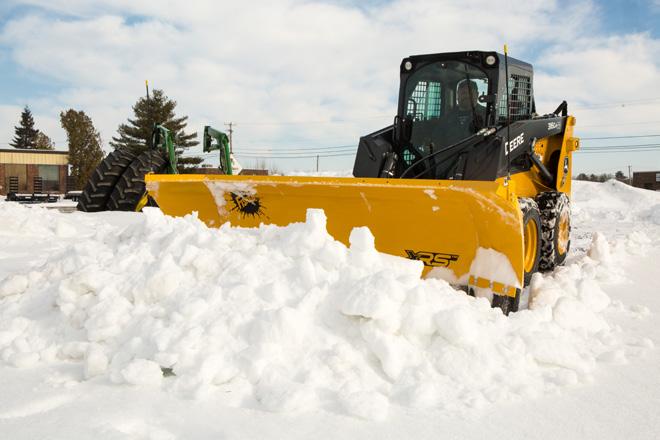
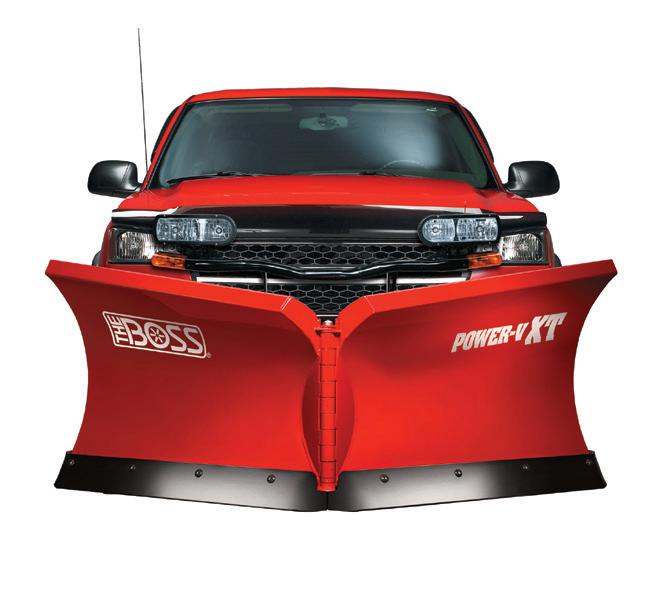

• Available in two models (8 ft., 2 in. XT and 9 ft., 2 in. XT)
• Standard features include: X 6 highperformance cutting edges, heavyduty center section and pushframe, reinforced moldboard and snowplow sight system
SmartHitch2 Attachment System
• SmartTouch2 Hand-held Control
• High-performance hydraulic package
• Chainless hydraulic cylinder lifting system
Kubota SSV65 & SSV75 Skidsteer Loaders
The 64-gross-hp SSV65 boasts a 1,950lb. rated operating capacity (ROC) and 4,839-lb. bucket breakout force, and the 74-gross-hp SSV75 has a 2,690-lb. ROC and 5,884-lb. bucket breakout force.
• Vertical lift configuration can dump into a dump truck with 10-ft. sides
• Kubota Tier 4-certified 4-cyl. diesel engine
• Include a spacious, dust-resistant pressurized cabin with an optimized climate control system, slide-up, frontentry door and hand-foot controls
• Standard two-speed travel
• Optional high-flow hydraulics and multifunction lever for fingertip control of major machine and implement functions
ASV RS-75 & VS-75 Skid Steers
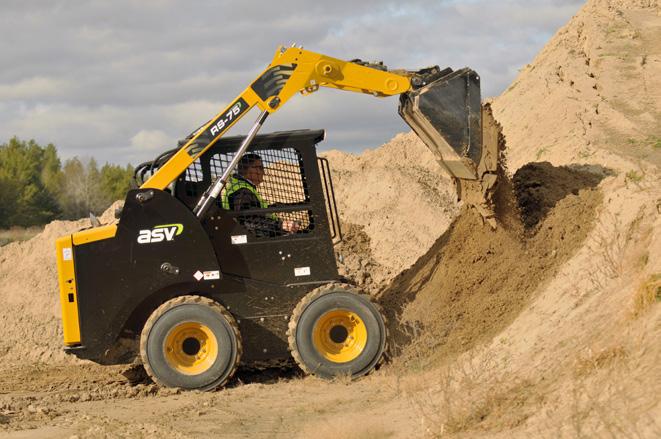
The large-frame radial-lift RS-75 and vertical-lift VS-75 feature an industrial 74-hp, naturally aspirated, 2.9-L diesel engine offering 192 ft.-lbs. of torque.
• VS-70 offers a 3,500-lb. rated operating capacity (ROC), 7,000-lb. tipping load and 10.8-ft. lift height, while the RS-75 has a 2,600-lb. ROC, 5,200-lb. tipping load and 10.4-ft. lift height
• Dedicated skid-steer frames enable a 10.5-in. ground clearance and a 24-degree departure angle
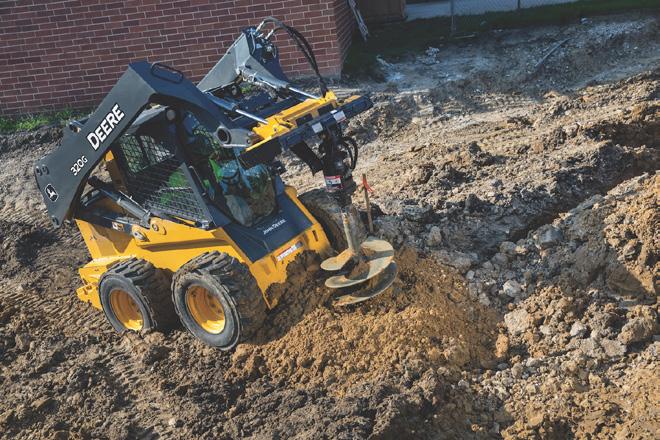
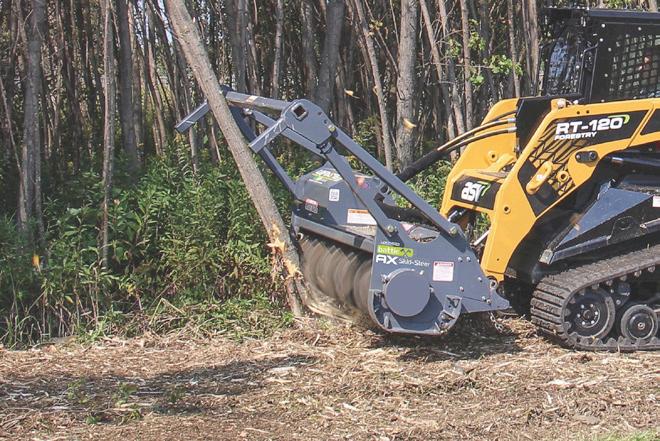
• Standard hydraulic joystick controls
• Travel speed up to 11 mph with optional two-speed drive
• Auxiliary hydraulic system with optional 30.9-gpm high-flow pump capacity
John Deere 320G & 324G Midframe Skid Steers
The 69-gross-hp 320G and 74-gross-hp 324G have 7,150-lb. and 7,700-lb. operating weights and rated operating capacities of 2,150 lbs. and 2,690 lbs.
• 324G features a height to hinge pin of 10 ft. 6 in.
• Pressurized cabs with reduced width and weight for contained jobsite areas
• Cab enhancements include heated seats, Bluetooth radio, a rearview camera and deluxe LED lighting package
• In-cab boom lock-out system makes maintenance safer and more secure
• Include Yanmar FT4 engine systems; flexible control choices; and performance package options for adjusting drive system response, boom and bucket speeds or setting creep mode on demand
Loftness Battle Ax Skid-steer Mulching Attachment
The heavy-duty Battle Ax horizontal drum mulcher is offered in 61- in. and 71-in. cutting widths for skid steers with 50 hydraulic hp to 120 hydraulic hp.
• 17-in.-diameter rotor features built-in depth gauges to prevent attachment from engaging too much material at one time
• Two-stage cutting chamber allows material to be cut twice by the rotor and helps produce smaller particle sizes
• Primary shear bar adjustable for customizing particle size
• Adjustable skid shoes (0.5 in. to 1.5 in.) enable below-grade mulching
Fixed-displacement gear or variabledisplacement piston motor
Caterpillar D3 Series Skid Steers & Compact Track Loaders
The D3 Series includes 16 skid-steer, compact track loader and multi-terrain loader models offering rated operating capacities (50% tipping load) from 2,185 to 6,200 lbs. and 67.1 gross hp to 110 gross hp.
• Wider opening cab door for easy entry and exit and an added 3 in. between joystick pods for extra space inside cab
• CTLs feature standard two-speed travel and changes to the undercarriage frame and torsion axles that reduce machine pitching and rocking
• Smart technology automatically recognizes and converts machine controls to align with Smart Attachments needs
• Advanced control features include Return-to-Dig and Work Tool Positioner
FISHER XRS Snow Plows for Skid Steers
The XRS Skid Steer Plow by Douglas Dynamics offers versatile snow removal in winter conditions. Designed specifically for skid steer applications, this rugged plow automatically retracts the inside wing when fully angled and then automatically returns to the scoop position once straight. The XRS plow leverages the onboard hydraulic system of the skid steer to lift and lower the blade, supporting operator performance. The oscillating skid steer mount comes standard and provides 6 degrees of sideto-side oscillation for scraping while reducing damage to the terrain. Available accessories include a 10-in. rubber deflector, shoe kit and quick coupler set.
Wacker Neuson 100-hp Loader Models
The 100-hp models include the SW32 skid steer and ST40 radial lift and ST50 vertical lift compact track loaders.


• Rated operating capacities of 3,200 lbs. (SW32), 3,500 lbs. (ST40) and 5,000 lbs. (ST50)
• Hinge pin heights of 134.8 in. (SW32) and 136.6 in. (ST50)
• Kohler KDI 3404 turbo diesel engine with maintenance-free diesel oxidation catalyst and selective catalytic reduction
• Cab fully tips forward with loader arms down
• Control options include mechanical hand-foot (SW models), electrichydraulic (EH) hand-foot and selectable EH (ISO and H-pattern)
22 EQUIPMENT TODAY | October 2023 www.ForConstructionPros.com/Equipment EARTHMOVING Products Read More at https://eqtoday.co/earthmove
Hilltip Interchangeable Winter Maintenance Bed
Compatible with major brands of cable-hoist truck body systems, the new bed offers performance for winter maintenance professionals. A functional feature of the Winter Maintenance Bed is a rear cutout to fit and protect a salt spreader chute. This specialized design allows the spreader to be mounted farther forward on the truck, resulting in weight distribution and shorter overall length. De-icing sprayers also fit on the Winter Maintenance Bed for versatility. During the offseason, hinged stand-up legs allow the bed to be dismounted with the spreader still installed. The legs are fully boxed and painted for durability. If a spreader is not permanently installed, the bed can be dismounted without the legs using the included roll-off kit.
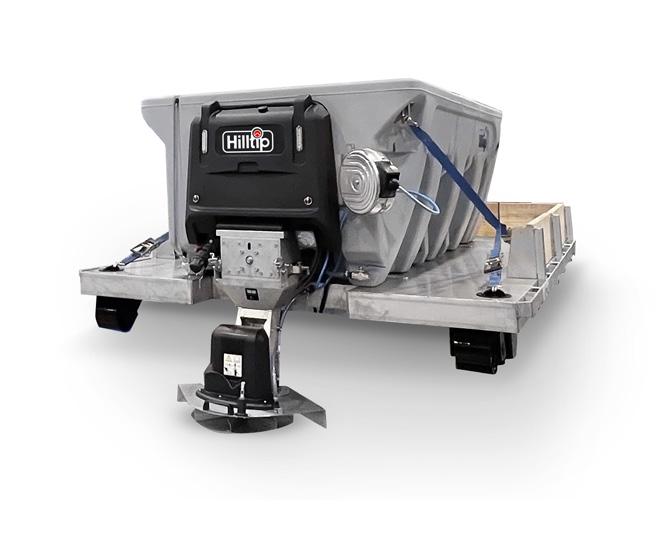
Diamond Mowers Brush Cutter Pro X
Diamond Mowers’ Brush Cutter Pro X processes small material (thick grass and brush) and can cut material up to 10 in. in diameter. This product is available in 60-in., 72-in. and 84-in. cutting widths. Designed for heavy-duty land clearing, construction and site preparation, this attachment has a continuous cut capacity of 4 in., a flow range of 16 gpm to 46 gpm and is intended for 10+ hours of weekly use (500+ hours annually). It can be installed on standard and high-flow skid steers. The Brush Cutter Pro X is equipped with four hydraulic motors that optimize blade speed and hardened steel blades that slice through vegetation.
Eterra Vortex Stump Grinder Skid Steer Attachment
The Vortex Stump Grinder offered by Skid Steer Solutions is a skid-steer attachment designed to remove difficult tree stumps.
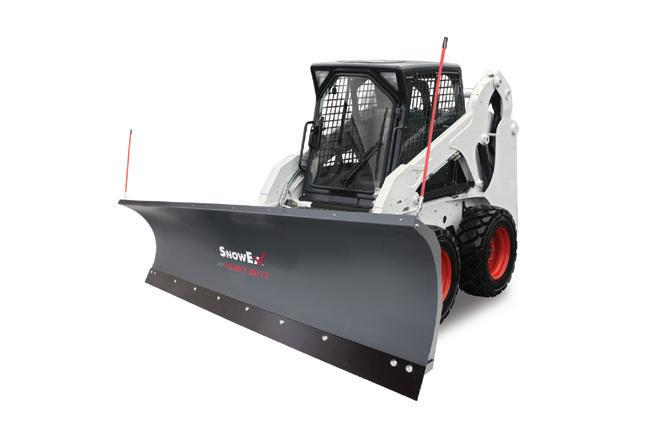


• A high torque output radial piston motor and robust direct drive system deliver increased power and cutting capacity
• A non-symmetrical wheel provides an unobstructed view of material being cut
• Include the V27 standard-flow model with 27-in. wheel and heavy-duty highflow V31 with 31-in. wheel
• Able to be used on machines that have between 18 gpm and 45 gpm
SnowEx Heavy-duty Straight Blade Plow
Douglas Dynamics offers the Heavy-duty (HD) straight blade snowplow for snow removal with skid steers. The attachment provides commercial contractor performance for skid steers under winter conditions. Available in four blade widths, the HD straight blade plow is built with a formed base channel for durability. Six vertical ribs, two angled power ribs and a quad design provide torsional strength to prevent blade twisting. The rugged A-frame is constructed of tubular steel to provide the strength necessary to take on harsh jobsites.
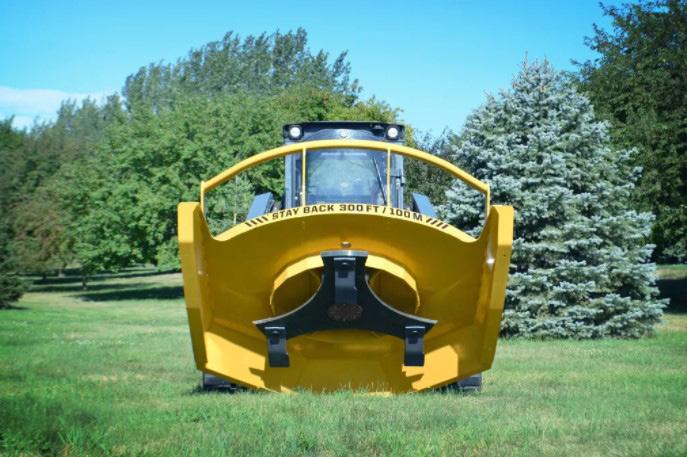
EARTHMOVING Products
Case B Series Skid Steers & Compact Track Loaders
The next-generation B Series includes five compact track loaders and eight skid steers in radial and vertical lift patterns, as well as numerous horsepower and size classes.
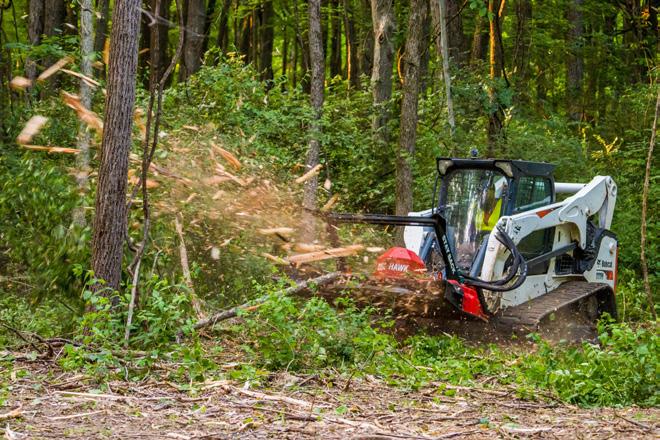
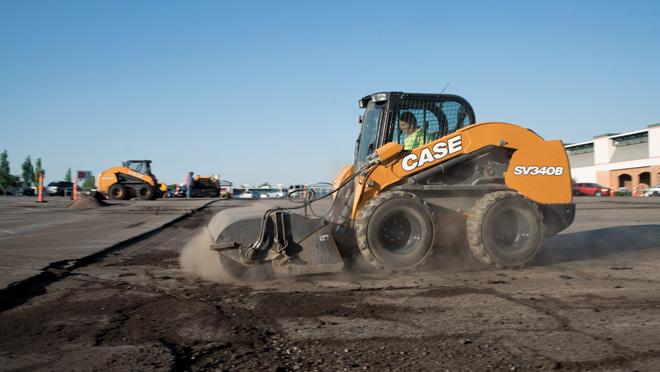


• Maintenance-free Tier 4 Final engines
• Offer enhanced visibility, an updated operator interface and controls, simple startup and operation and powerful breakout force and auxiliary hydraulics
• Completely redesigned operator interface includes left- and right-hand posts with simple ignition, push-button operation, easy throttle control and intuitive switches for all core functions
• 8-in. LCD multifunction display includes a backup camera view in a split screen with machine data
Ignite Attachments
Snow Pusher
Available via a digital, direct-to-consumer storefront, the Snow Pusher is designed to clear parking lots, driveways, building sites and more. The Ignite Snow Pusher attachment features a corrosion-resistant finish that can stand up to harsh winter conditions and an 8-in. replaceable rubber cutting edge that offers surface protection and scraping ability. Amplifying its durability, the Snow Pusher’s skid shoes are replaceable, resulting in longevity of the pusher, and reversible, doubling its lifespan and providing cost savings down the road. As with all Ignite offerings, the Snow Pusher is built to make your existing equipment versatile, connecting to skid steer loaders, compact track loaders and compact tractors equipped with the universal quick attach interface.
FAE RPM/SSL Road Planer
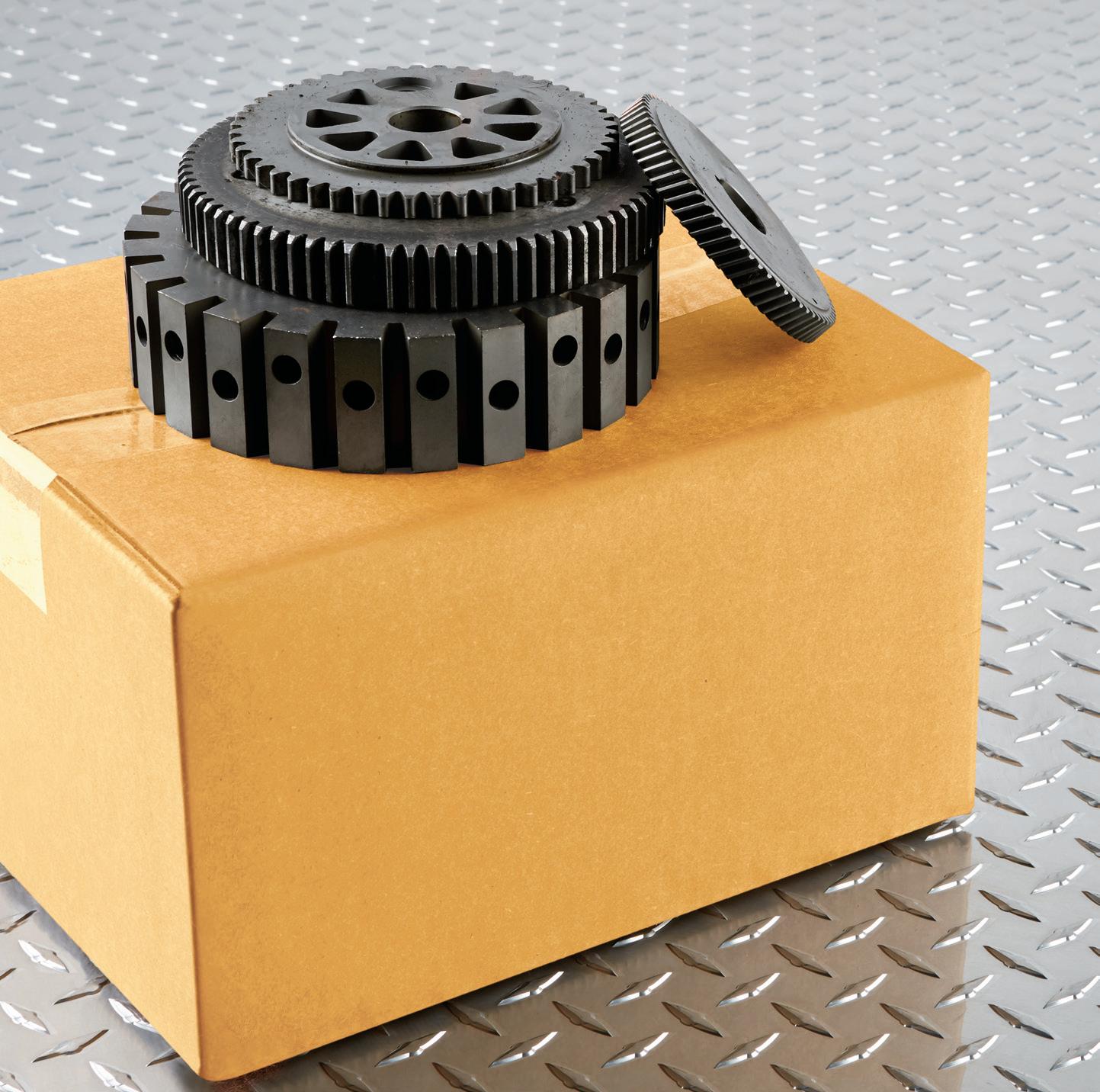
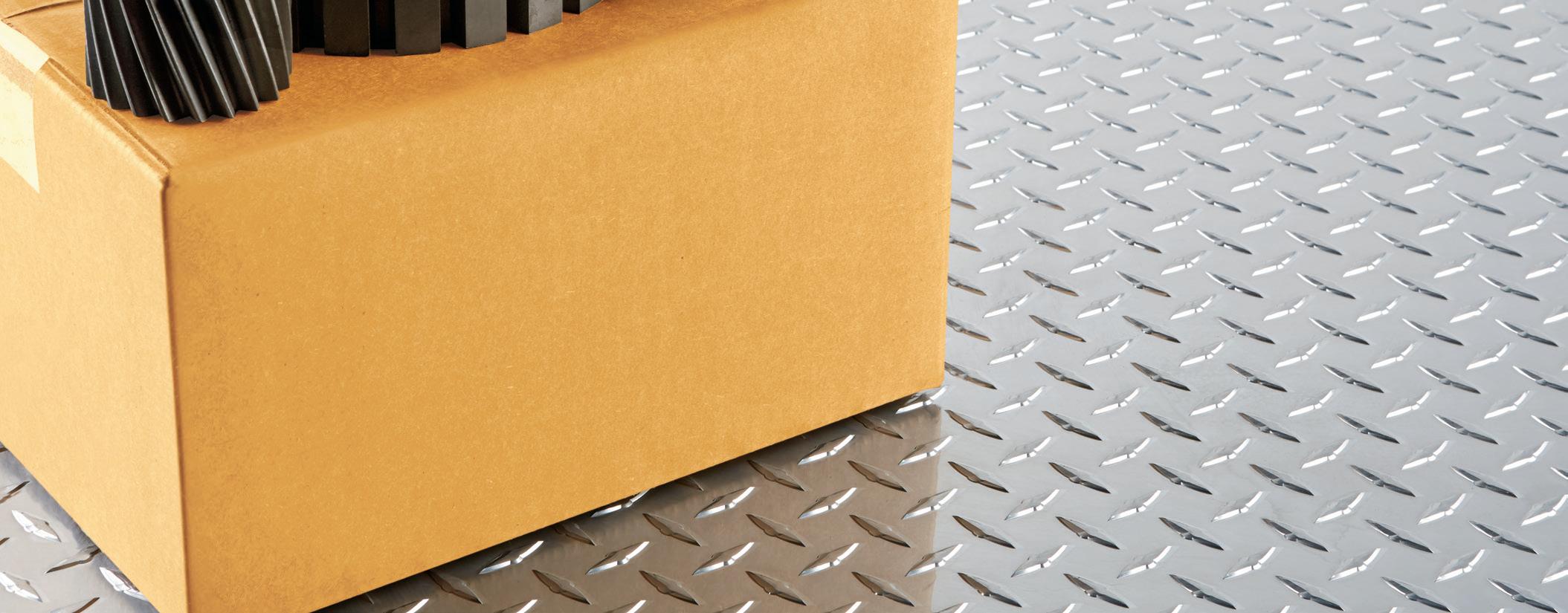
Hyundai HS120V Skid Steer
The HS120V skid steer is designed for a wide range of construction jobs including debris removal, demolition, loading, clearing, lifting and excavation. The machine is equipped with a Tier 4 Final-compliant diesel engine and has a maximum lifting height of 13 ft., 4 in., the skid steer’s boom has a vertical lift path when raising the bucket. An auto-leveling system keeps the bucket stable without manual adjustments.
• Net power: 69.7 hp (52.0 kW), 2,200 rpm
• Operating weight: 8,481 lbs.
• Rated operating capacity: 5,380 lbs.
• Bucket breakout force: 6,327 lbs.
Bobcat S7X All-electric Skidsteer Loader

The S7X is all electric, powered by a 60.5kWh, lithium-ion battery, and features electric drive motors and utilizes ball screw actuators for lift and tilt functions. Together, the battery and electrical powertrain generate performance characteristics, with instantaneous torque that is as much as three times greater than traditional loaders. The loader balances sustainability and performance with zero emissions and is equipped to outperform its diesel-powered equivalent. This skidsteer loader offers operators a smooth and comfortable experience with minimal vibration and nearly silent operation. The S7X can operate for up to 8 hours on a single charge depending on the application, giving most operators more than a full day’s work when breaks and downtime are considered.
The FAE RPM/SSL road planer attachment is designed for road surface preparation before adding a new layer of asphalt or concrete and excavation operations. Compatible with skid steers from 75 hp to 135 hp, the attachment can shred up to 10 in. deep at a width of 24 in. Self-leveling skids and tilt enables operation on uneven surfaces. The hydraulic drive system, practical depth and cutting indicators promote accuracy during use. This attachment also features a working pressure control gauge, anti-shock block valve with relief and anti-cavitation valves. The line is completed with teeth specifically designed for asphalt and concrete road surfaces.
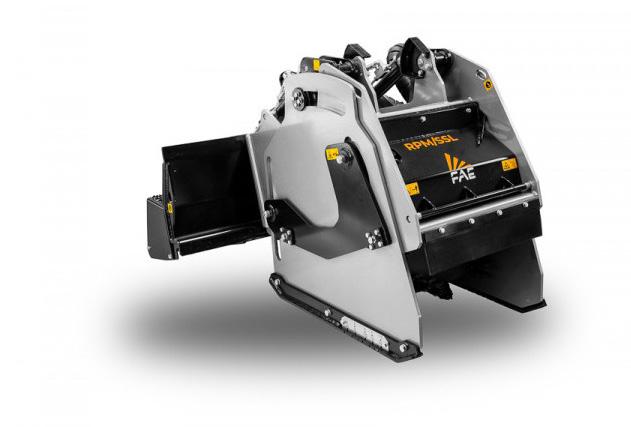
Fecon Unveils Disc Hawk Compact Mulcher
Fecon expanded its line of attachments with the launch of the Disc Hawk disc mulcher. Specifically designed for highflow skid steers and compact track loaders, the attachment can be used for mulching, landscaping, site preparation and land clearing. Fecon’s disc mulcher enables first-pass vegetation removal or material dispersion without fine chip size. With a working width of 60 in., the disc mulcher is purpose-built for 75-hp to 132hp skid steers and compact track loaders that operate with as little as 30 gpm to 50 gpm of auxiliary hydraulic flow. The unit provides performance for mulching thick vegetative material at high speeds. A low-profile motor and deck configuration provides visibility and reduces material buildup.
24 EQUIPMENT TODAY | October 2023 EARTHMOVING Products COMPLETE CATALOG 1-800-295-5510 uline.com ORDER BY 6 PM FOR SAME DAY SHIPPING π SHIPPING SUPPLY SPECIALISTS HEAVY DUTY BOXES OVER 1,700 BOX SIZES ALWAYS IN STOCK
Manitou Compact Skid Steers, Track Loaders
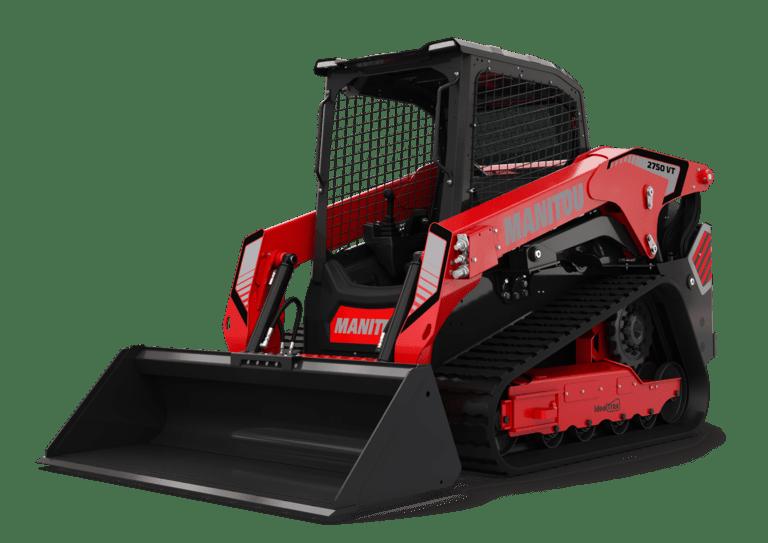
Manitou launched three all new “V Series” compact skid steer loaders and three “VT Series” compact track loaders to the North American market: 2100V, 2300V, 2750V, 2100VT, 2300VT and the 2750VT. These new models have a capacity of 2,100 lbs. to 2,750 lbs. The breakout force is now 12% higher on average (compared to the previous range) and the tank capacity is increased by 14%. The new loaders feature keyless start requiring only code activation; LED lighting; and a patented Pilot joystick system as standard, adjacent to the operator’s seat. Numerous innovations also facilitate maintenance with a lifting cab and centralized maintenance points.
Mecalac Multifunctional Compact Loader Line
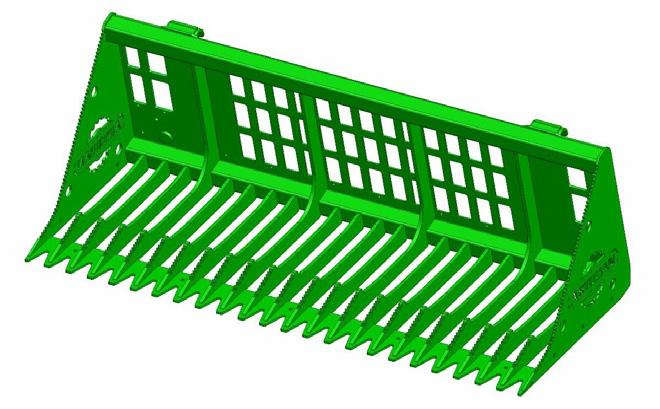
Mecalac’s new product line of compact loaders to the North American market is comprised of six models, including the MCL2, MCL4, MCL4+, MCL6, MCL6+ and MCL8. The series offers performance for industries ranging from agriculture to landscape, forestry, snow removal, utility and construction. The M-Drive and speed control features allow the loader to function as a tool carrier, providing control of rpm by hand throttle and speed via a foot pedal. This allows for controlled operation of hydraulic attachments. Each MCL in the series has an option for auxiliary hydraulic lines on the boom and at the rear of the machine, as well as 12V three-pole plugs, allowing the ability to use hydraulic attachments on either end of the machine. The MCL series maximizes attachment possibilities with 7.9-gpm flow on the MCL2 and MCL4 models and 15.9-gpm flow on the MCL6 and MCL8 models.


Artillian Tractor Rock Bucket Attachment Series
Artillian Tractor’s Direct Attach Rock Bucket, with fitment for John Deere Quick Attach and Skid Steer Quick Attach (per SAE J2513) loaders clears rocks and debris while leaving soil behind. With 2-in. tine spacing, most soil and small objects pass through. The tines and side plates have serrated edges. Built from AR400 steel plate and structural steel tubing and engineered with a high strength-to-weight ratio, the 54-in. Artillian Rock Bucket is designed for compact and sub-compact tractors. At 190 lbs. to 200 lbs., it comes in at just over the weight of a subcompact OEM material bucket.
Western PILE DRIVER Pusher Plow With TRACE Edge
The WESTERN PILE DRIVER lineup of pusher plows is designed for snow removal applications. The series is available in 8-ft., 10-ft. and 12-ft. widths. The attachments come with three heights and a common carrier attachment system making them compatible with skid steers. Patent-pending terrain response advanced cutting edge (TRACE) technology is made up of independent 2-ft. sections that oscillate, move vertically and trip to accommodate contours and obstacles in the plowable surface. Each blade section is equipped with a 3/4-in. cutting edge with a carbide insert for heavy-duty use. Self-leveling side plates with reversible, bolt-on skis facilitate servicing.

DEWALT 60V MAX 21-in.
Snow Blower
DEWALT announced the brand’s first-ever snow blower with the launch of the 21-in. 60V MAX Single-Stage Snow Blower. As a provider of outdoor power equipment, DEWALT designed the snow blower for professional results with the ability to power through tough snow, clearing up to 16 parking spaces on a single charge. Powered by FLEXVOLT battery technology, the 21-in. 60V MAX SingleStage Snow Blower delivers performance and durability. The 7-in. steel auger chops through heavy, wet snow while the two-way electric chute rotation provides directional command. Maximum initial battery voltage (measured without a workload) is 60V. Nominal voltage is 54V. Per charge, based on a 9-ft. x 18-ft. average parking space size in 3-in. to 5-in. snow depth, using two DCB612 batteries. Results may vary depending on environmental conditions.

MB Crusher BF70.2

Bucket Attachment
MB Crusher offers the BF70.2 bucket crusher attachment for large-scale projects, including construction, road works, forest maintenance, recycling aggregate, demolition and urban sites. This attachment features a 29-in. wide mouth opening. The BF70.2 can be installed on heavy equipment and can crush materials during use. Furthermore, the crushed materials from the bucket can be recycled and used for many purposes and applications, including asphalt production.

October 2023 | EQUIPMENT TODAY 25 www.ForConstructionPros.com/Equipment Products EARTHMOVING
Heavy Equipment Undercarriage & Track Advancements
Recent track and undercarriage technology innovations provide operators with more safety and comfort, while extending equipment life and efficiency. These latest developments also help overcome longstanding challenges in the industry, such as operating sensors in harsh environments. Tread designs and rubber compounding define recent trends, leading to longerlasting, smoother running tracks, said Mike Giordano, Yokohama TWS (formerly Trelleborg Wheel Systems) segment sales manager, rubber tracks.
Undercarriage Technology Provides ROI
While the goal to integrate an onboard notification system on a dozer can be accomplished, the challenge is in the environment where the components with sensors are operating, noted Tim Hansen, CASE undercarriage product marketing manager. Extreme conditions–sand, abrasive,
and hard rock applications–wreak havoc on sensors for sustainability and dependability, he said. With CASE TrackCare, end users plan maintenance activities, monitor performance and make decisions to help manage undercarriage performance and costs.
“Do expensive components provide a better return than regular undercarriage wear measuring, such as what is offered via TrackCare?” Hansen asked.
The CASE TrackCare monitoring program is designed as a cloud-based system, a mobile app and Ultra Sonic tool for collecting undercarriage measurements and observations in the field for CASE machines and all makes.
Some new ideas being worked on in laboratories and jobsites have limitations, such as developing AI to help identify wear and component failure and different metal technologies, such as a cryogenic
process to improve longevity, which is why they are not yet standard operations, said Hansen. He suggested operators select the correct configuration for their application and partner with their local dealer to proactively monitor an undercarriage instead of being reactive in repair.
Undercarriage Improvements Multiplies Benefits
Undercarriage improvements are enhancing durability, efficiency and overall performance, noted Matt Goedert, solutions marketing manager for John Deere. They often involve the use of high-quality, wear-resistant materials designed to withstand harsh conditions and abrasive materials, he said. Undercarriage configuration varies significantly based on material application and type.
“The standard Heavy Duty track chain uses hardened steel bushings, where our Extended and Maximum Life offerings add an SC2 coating to
the hardened bushings to dramatically increase wear life,” said Goedert. “The Maximum Life option also adds additional wear material to the sprockets, idlers, track chain and rollers.”
Contractors should balance undercarriage wear across all components to get maximum undercarriage life before required maintenance, Goedert said. Deere’s dozer design process focuses on suitably distributing weight to properly balance the machine and distribute it more evenly to reduce component stress, premature wear, and failure. Deere constantly monitors machines in a diversity of regions to determine how different material types impact undercarriage wear.
In 2021, Deere implemented on its largest dozer, the 1050K, a suspended double-bogie undercarriage designed to minimize vibrations and shocks during operation, which can accelerate wear and lead to component failure.
Deere recently updated its 450, 550, and 650 P-Tier small dozer models to boost productivity and operator comfort while lowering operating costs.

EQUIPMENT MANAGEMENT 26 EQUIPMENT TODAY | October 2023
John Deere
The front idlers and cross bar are isolated to minimize vibrations spreading across the machine. Hansen noted new undercarriage improvements focus on improving equipment life through metallurgy with material and processes providing deeper heat treat and higher hardness levels.
Additional bushings provide extended wear life. Lubricated rotating pin joints eliminate track pin turns and reduce chain and sprocket wear. Addressing how current technology helps with operator safety and comfort, Giordano said modern tracks use multiple methods to control vibrations, which cause discomfort and injuries when repetitive.
“They can also cause damage to the machines, as parts can vibrate to the point of breaking,” he added. “Tread designs and guide/drive lug designs can greatly reduce vibrations.”
The latest undercarriage technology innovation from Yokohama TWS is its CRT-800 brand: the All Season tread design and a cutresistant tread compound. Teamed with the older technology of forged steel metal pieces, track life and performance is greatly improved, Giordano said. A tread design with many edges, such as the Trelleborg CRT-800 All Season, can gain as much traction as possible when operating in mud or snow.
“It should also be a self-cleaning tread design, as snow and mud will quickly fill the voids in the tread and become a smooth surface unless the design allows the snow and mud to fall out during operation,” he added. “Without good traction in these applications, the machine becomes productive, hard to drive, and even dangerous.”
Given the difficulties finding skilled operators, many look to operator comfort as a way to ease long shifts, in order to retain workers, Goedert noted.
Deere recently updated its small dozer 450, 550, and 650 P-Tier models to boost productivity and operator comfort while lowering operating costs. New to its technology stack is EZ Grade, in-base on machines with electro-hydraulic controls. It monitors the machine’s altitude, automatically making blade corrections to maintain a smooth grade. EZ Grade is upgradeable to Slope Control technology, which automatically controls the blade to a desired slope. Machines can be upgraded to full 3D SmartGrade when available.
“Our updated small dozers have made significant gains in forward visibility by lowering the hood and increasing the amount of cab glass, allowing operators to have more awareness of their surroundings,” Goedert said.
Updated joysticks in Deere’s midsize dozer lineup are designed for improved ergonomics, incorporating proportional blade angle controls, and reducing arm movement for reduced operator fatigue.
The CASE dozer line has a smooth, one-piece track frame featuring
greater structural strength and allowing for easier cleanout, noted Hansen.
“The new undercarriage developments help shed material while the machine is in operation,” he added.
New rock guards and sprocket
guards further protect critical components and deflect material away from them, he added.
“A new dirt relief sprocket design on the 1650M and 2050M–the two largest machines in the line–has cutouts allowing mud to be forced out
A LONG WAY TOGETHER
WHEREVER YOU ARE, BKT IS WITH YOU
No matter how challenging your needs, BKT is with you offering a wide range of OTR tires specifically designed for the toughest operating conditions: from mining to construction sites. Sturdy and resistant, reliable and safe, able to combine comfort and high performance. BKT is with you, even when work gets tough.

EQUIPMENT MANAGEMENT BKT USA Inc. 202 Montrose West Ave. Suite 240 Copley, Ohio 44321 Toll free: (+1) 888-660-0662 - Office: (+1) 330-836-1090 Fax: (+1) 330-836-1091
EQUIPMENT MANAGEMENT
The latest undercarriage technology innovation from Yokohama TWS’s CRT-800 brand: the All Season tread design and a cutresistant tread compound.
from the track chain and sprocket, reducing wear and track popping.”
Push beam pivot points have been relocated on those models, designed to decrease exposure to wear, improve reliability and blade stability and push performance. Rollers are placed to minimize vibration and noise based on many variables, such as chain pitch and speed. The idler wheel diameter is optimized to ensure long life, while maintaining visibility to the corner of the blade. Double flange rollers help prevent mis-tracking.
With CASE Ultra Life, a wet rotating pin and bushing-style chain is designed to provide a quieter and smoother ride and offers a service life of 5,000 hours or more. Increases in width of the track rollers, carrier rollers and the idler on all CASE dozer undercarriages improve structural integrity, reduce wear, and achieve greater balance, said Hansen.

“A decrease in the diameter of the front idler improves visibility to the blade,” he added.
Changes to the spacing of the carrier track and track roller reduce noise and vibration, thereby reducing chain flopping and total resonance throughout the machine, offering more ride comfort, Hansen noted. CASE’s smaller dozers (models 650 to 1150) come equipped with a dry rotating bushing design.
The Max Life track is believed to extend track life by as much as 15% under the right conditions and applications, Hansen said. Since undercarriages make up more than 50% of a dozer’s maintenance costs, CASE has designed undercarriages to make maintenance easier, including easy-to-reach critical pivot shaft grease points and equalizer beam joints. In addition to standard sealed and lubricated Heavy Duty tracks, Ultra Life and Max Life extended life options, CASE offers three different track options for each M Series dozer model:
˜ XLT (Extra Long Track) is the narrowest track configuration
available, designed for working in hard, rocky soil.
˜ WT (Wide Track) serves as an allpurpose track for good ground penetration and improved traction on slopes.
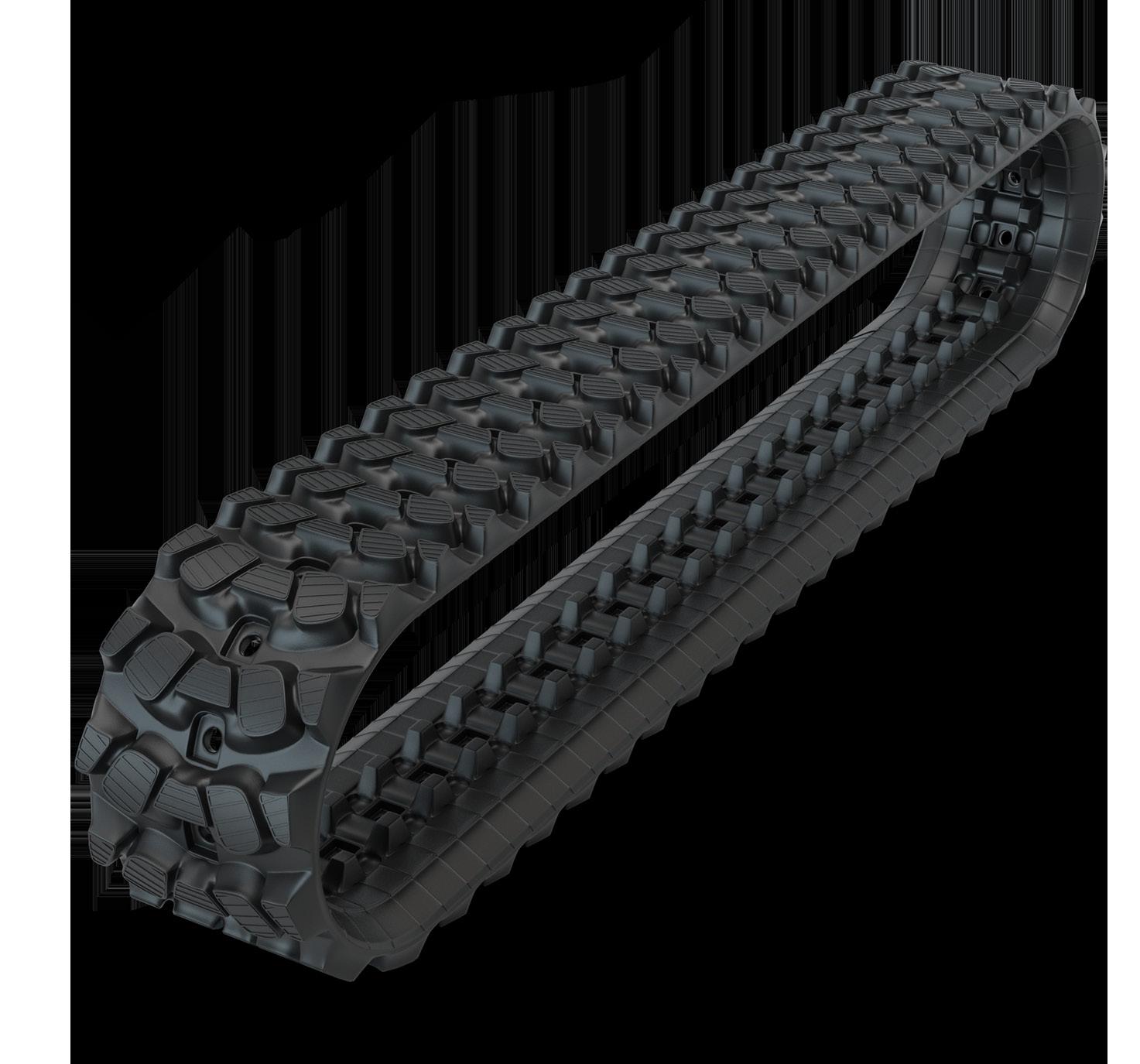
˜ LGP (Low Ground Pressure) is the widest pad width available, designed to provide plenty of flotation and ideal for working in muddy, swampy conditions. Since the traction on a dozer is generated from the penetration of the cleat (grouser bar), choose the narrowest track matching the application, Hansen noted.
Track Technologies Improve Efficiency, Lifespan
Yokohama TWS’s Giordano noted that within the past 20 years, quality brand rubber track life and efficiencies have doubled as a result of raw materials and technology used, such as in the CRT-800. Other factors include: continuous wound brass coated cables, forged metal pieces, short pitch miniexcavator tracks and cut resistant rubber compounds.
Hansen advised having a good understanding of the worksite environment and the tasks involved, which informs the purchase decision of using steel tracks or rubber tracks. Depending on the machine type and the need to control ground pressure or navigate debris, choose the narrowest shoe width possible to meet required flotation and outline preferred operating techniques matching the terrain, Hansen said. Knowing which track width is best for the job is an important consideration for undercarriage health, he added. Some manufacturers, like CASE, offer lubricated track designs, Hansen said. The CASE Extended Life Track (CELT) works best in low-impact, highly abrasive ground conditions. Its hardened bushing placed over a standard-type track bushing results in almost twice the wear life of a standard lubricated track design, he added.
Rubber Versus Steel Tracks
Rubber tracks can have common failure points. Steel tracks expand the capability of compact track loaders into applications and uses where rubber track life is typically an issue. The terrain and load type is key to the choice.
RUBBER TRACKS
˜ High level of traction on different surfaces
˜ Best on grass or dirt; better for limiting damage to paved surfaces
˜ Lower noise due to less vibration
˜ Ideally suited for construction and agriculture
˜ Carries the needed weights for compact applications
˜ Smoother ride
˜ Greater flotation, allowing operators to work in less than ideal weather conditions.
˜ More cost effective to replace but may only last between 1,200 and 1,600 hours with standard use
STEEL TRACKS
˜ Able to withstand high heat and pressure
˜ Handles heavier loads without risk of damage or deformation
˜ Less susceptible to corrosion from chemicals commonly found on jobsites
˜ More dependable on jobsites with sharp debris
˜ Great on sites with many inclines
˜ Excellent traction in tough terrain
˜ Usually last 2.5 times longer than rubber tracks, which are more susceptible to cuts and tears
A disadvantage for one job can be an advantage at another, Hansen noted. For example, heavy steel tracks run the risk of tearing up costly paving and using more fuel, but the added weight can make them more stable for lifting heavy loads, especially on uneven or unstable terrain.
Goedert concurred the choice depends on the specific needs of the
application, terrain, and equipment type. Both distribute the machine’s weight over a large surface area, resulting in lower ground pressure. He said with the positive attributes of rubber tracks for compact equipment, “the market has moved extensively to rubber tracks.”
Whatever the choice, proper maintenance is crucial for getting the most out of equipment and reducing the likelihood of unexpected failures, noted Goedert. The largest contributor to the costs of running a dozer is the undercarriage, he added.
“Undercarriage wear inspections on a regular interval allow planning for repair or replacement and are proactive actions leading to better control of the overall maintenance costs,” said Goedert.
Configure the machine properly for the application, Goedert added.
Recessed sprocket segments and open center track shoes help extend undercarriage life by reducing packing of material and allowing a path for material to escape, he said.
Regular Maintenance Avoids Costly Repairs, Downtime
Cleaning the undercarriage daily prevents increased wear at additional contact points, such as working in material that hardens or freezes as it dries out, said Goedert.
Other tips:
˜ In daily undercarriage inspections, Hansen advises looking for excessive or uneven wear and damaged or missing components, which can lead to additional wear and should be immediately addressed.
˜ Monitor track tension, ideally while the machine is in actual working conditions. Steel tracks that are too tight create added load on areas of specific contact, such as the bushing to the tooth at the sprocket, the chain link to the roller and the idler to the chain – all of which can accelerate component wear. It also robs the
28 EQUIPMENT TODAY | October 2023 www.ForConstructionPros.com/Equipment
YokohamaTWS YokohamaTWS
machine of its power as it takes more effort to turn the track. If a track is too loose, it can create instability and potentially cause tracks to derail while also causing wear on other undercarriage components.
˜ For rubber tracked machines and applications, tracks that are too tight can stretch or break with additional excessive roller and idler wear. Rubber tracks that are too loose can de-track, leading to a damaged track and extensive downtime.
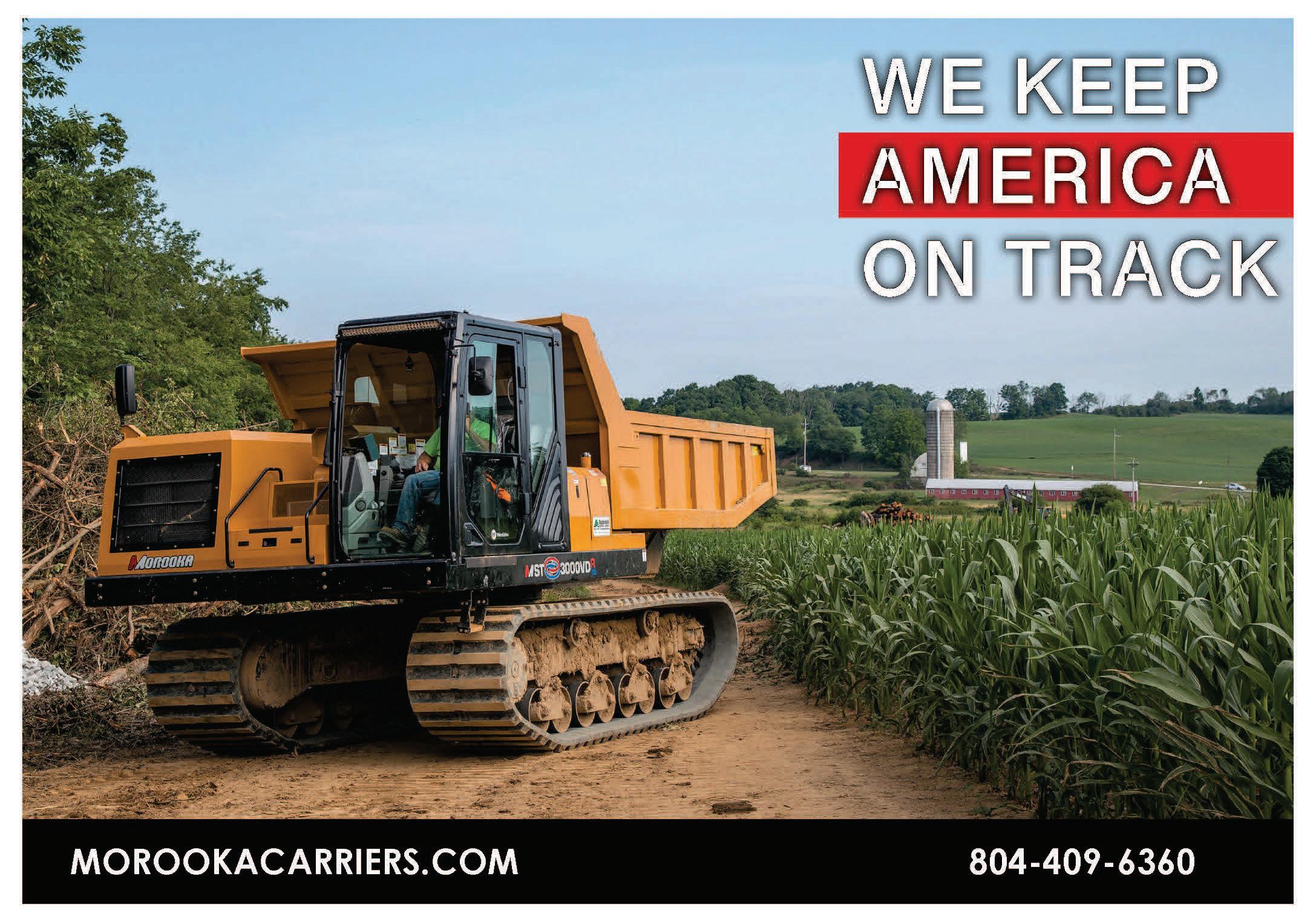
˜ Adjust sag to the OEMrecommended measurement.
˜ Check track tension as the machine settles into new working environments if conditions change during the day. Check track tension more often when working in mud, snow and sandy condition as material will pack on undercarriage parts, causing the tracks to become too tight.
˜ At the end of a workday, clean out mud or debris from the undercarriage, especially in climates where material can freeze inside the track. Look for cuts, cracks, exposed wires, and metal imbeds.
˜ Rinse off the track and undercarriage. Remove debris. CASE provides optional covers and guards to help keep undercarriages clean.
˜ Correct track alignment prevents wear of the undercarriage components. Misalignment problems affect more of the undercarriage components than any other cause of wear.
Hansen noted TrackCare monitoring helps establish a benchmark to know where the undercarriage is in its lifespan to help tackle undercarriage costs and needs. The benchmark is based on the machine’s environment.
Weekly, examine tread wear and undercarriage components such as rollers, drive sprockets and idler arms. Change out components with
YokohamaTWS
excessive wear to avoid adverse performance and track life, Giordano said. Conduct a total undercarriage and rubber tracks inspection monthly, he added, and use a pressure washer for complete cleaning.
Proper Operation
Proper operation is as critical as maintenance in preventing and minimizing undercarriage wear, said CASE’s Hansen.
Teach new operators every machine movement needs to have a purpose for efficiency and lower operating costs, said Goedert.
The faster the speed, the faster the wear rate. Wear rate is a function of speed and distance traveled, not just hours worked, Hansen said. Operators should avoid excessive use of reverse operation, a non-productive use of the
YokohamaTWS
A tread design with many edges, such as the Yokohama TWS CRT-800 All Season, can gain as much traction as possible when operating in mud or snow.
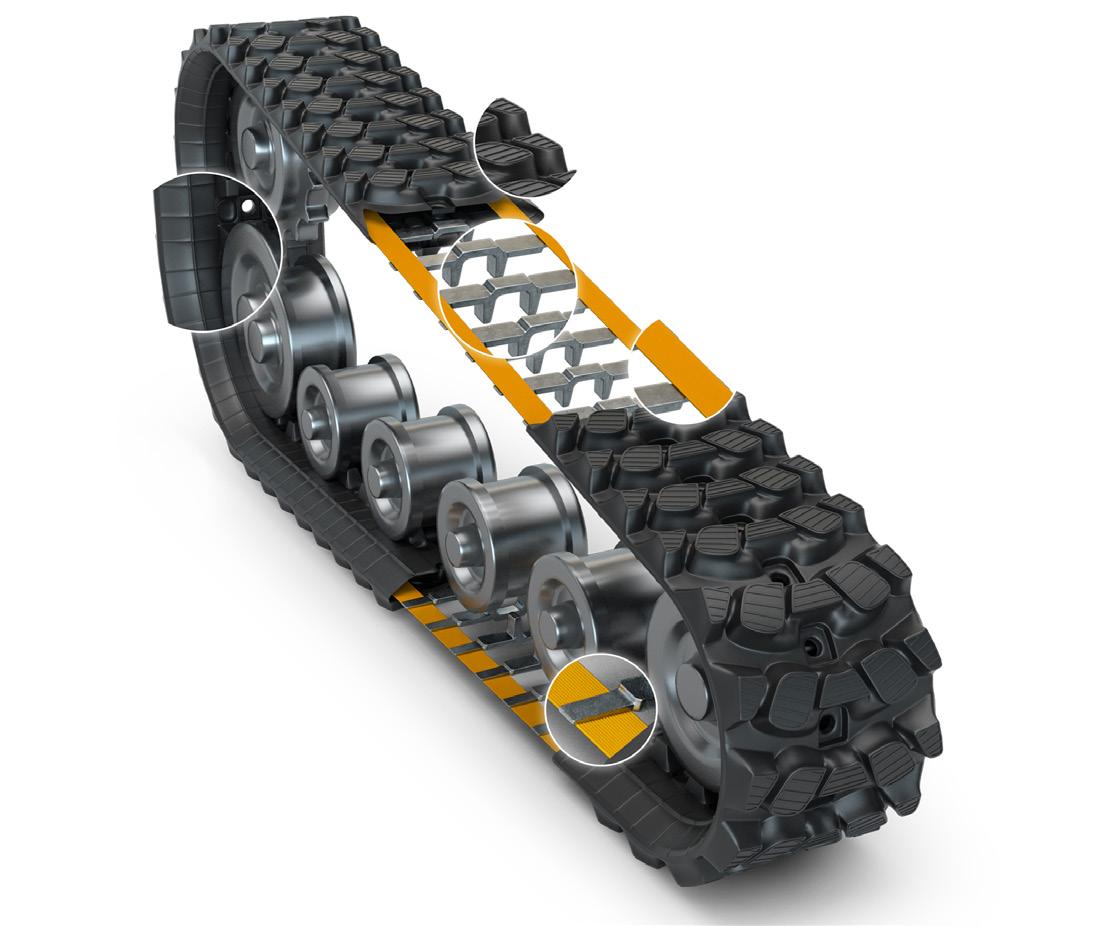

machine that also accelerates bushing and sprocket wear, he added. Counter rotation or pivot turns can accelerate undercarriage wear and increase the potential for de-tracking on rubbertracked machines, he said. He advised operators make wider, more gradual turns. Work up and down on slopes, Hansen advised.
“Constant operation on hills in one direction can accelerate wear to idlers, rollers, and guide lugs by placing greater force on one side, he added.
Minimizing time spent on the slope generates reduced undercarriage wear and load, Hansen said.
Other key practices he recommends: alternating turning directions, controlling track spinning and avoiding steep edges. Operators should dig over the front idlers, which properly transfers the vertical load
that can otherwise cause damage, he said. Digging over the sides of the machine places additional stress on track shoes and track line assembly. Hansen advised avoiding digging over the sprocket because it can cause bushings to crack or break.
Read more at: https://eqtoday.co/undercarriage
Carol Brzozowski is a freelance writer for Equipment Today
October 2023 | EQUIPMENT TODAY 29 EQUIPMENT MANAGEMENT
Zero Emission Machines to SHAKE UP Oil & Lubricants Industry
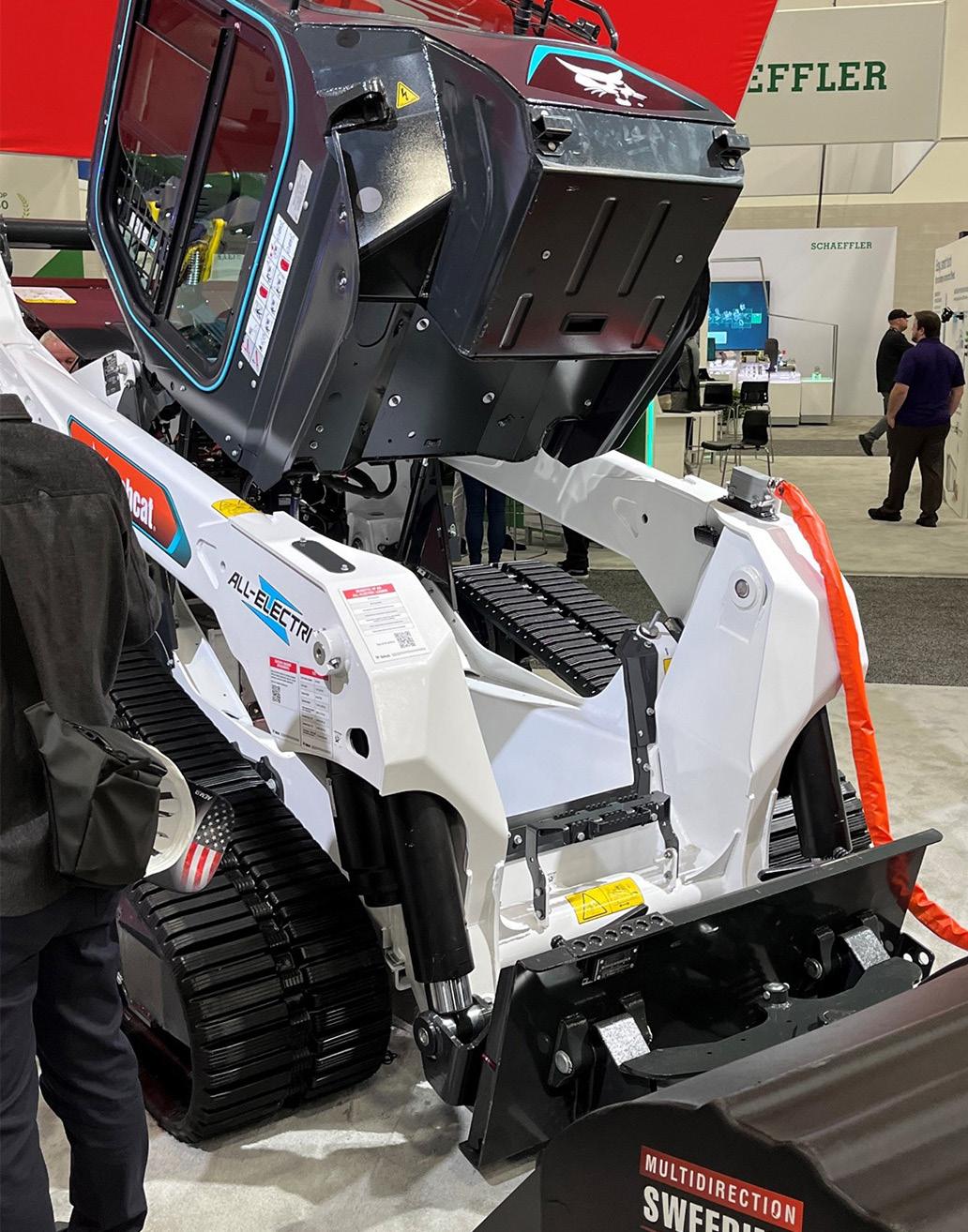


The inevitable move from diesel-powered off-highway vehicles has started slowly but is gaining momentum. Equipment users will see significant changes over the next decade when it comes to the makeup of their fleets. This will have a knock-on effect on the lubricants they choose to use in their equipment, and we predict there will be big adjustments for the oil, lubricant and hydraulic fluid industry, as companies respond to the challenges and opportunities posed by the shift from diesel to new fuel vehicles.
Battery-electric vehicles (BEV) in particular are expected to see sales rise over the coming years, with certain vehicle types, such as trucks, forklifts and mini excavators, already seeing electrified versions developed, launched and proving popular. Higher numbers of electric machines mean fewer moving parts and less lubrication is required, and also makes electric vehicles less likely to break
down or need maintenance than diesel ICE machines.
Companies switching their fleets from diesel ICE to new fuel alternatives will see a number of differences when they do so and should be aware of what these are; it will serve you well to be prepared for them. When it comes to purchasing oil and hydraulic fluid, this article will examine the changes taking place, predictions for the future and what this all means for lubricant manufacturers and their customers.










Battery-Electric to Lead Fuel Revolution

The days of diesel as the leading vehicle fuel are numbered. Most of the adoption of new vehicles will be in battery-electric, but there will also be some adoption of hydrogen internal combustion engine (H2ICE) and hydrogen fuel cell (HFC) vehicles, particularly for larger off-highway vehicles with higher load and power requirements, such as mining equipment.
New lubricants and formulations are expected to come onto the market that are specifically designed to get the best performance out of zero emission vehicles and their engines.








This change is not taking place overnight, but a rapid uptake of battery electric trucks and buses is going to reduce demand for diesel fuel. This has started off slowly, but will accelerate out to 2030, particularly in certain markets. For example, we forecast the total number of battery electric trucks in operation globally will rise to around 1% by 2025, then leap to 7% of trucks on the road by 2030.
Equipment Transition Taking More Time
The off-highway market is taking a much longer time to transition toward zero emission power trains and away from combustion engines, particularly in relation to larger machinery. Variations between machines, with each often requiring different components or design, often make large-scale production of off-highway equipment more complicated, whereas most trucks have very similar design and components. However, the market is moving toward new fuel equipment
and it should probably come as no surprise that material handling solutions—like forklifts or AWPs—are electrifying fastest as they have low intensity duty cycles and are easy to charge. Larger construction equipment could be better suited to hydrogen ICE and more tailored formulations in the longer term because it is not easily powered by BEV technology, and machinery deployed in remote locations cannot be easily recharged. As you can see from the chart on page 49, material handling solutions such as forklifts or AWPs are electrifying fastest as electrification is already well-established in these applications. Compact construction equipment (for example, smaller excavators and compact track loaders/ skid steers) are also performing strongly but are unlikely to reach 20% BEV penetration rates by 2030 in most countries. Larger equipment and machines deployed in remote locations will be much slower to electrify by 2030.

www.ForConstructionPros.com/Equipment
EQUIPMENT MANAGEMENT 30 EQUIPMENT TODAY | October 2023
There are environmental benefits for companies operating battery-electric and new fuel vehicles beyond reducing their contribution to greenhouse gas emissions.
Interact Analysis
Electric vehicles have fewer moving parts and so will require less lubrication than diesel ICE engines. However, progress within the offhighway commercial vehicles market is particularly slow and there are very few large vehicles currently available that are electrified.
Lubricant Manufacturers Make a Start
The clear trend towards electrification has prompted some lubricant manufacturers to launch e-lubricant
Electrification has come of age, but it has a long way to go in most applications.

formulations onto the market or to start developing them.
When it comes to new fuel vehicles, there is more need for lubricants in H2ICE vehicles, as the engines are more similar to conventional ICE.
Now is the ideal time for oil and lubricant manufacturers, OEMs and their customers, to think about what these new formulations might consist of and what gets the best performance out of an electric, hydrogen or biodiesel engine. We advise lubricant manufacturers to forge partnerships with companies like OEMs and new fuel engine makers because this could result in big payoffs in the future for those that get new formulations right.
EQUIPMENT MANAGEMENT
We expect to see new lubricants and formulations coming onto the market that are specifically designed for zero emission vehicles and their engines.
In a new report, “Global Truck, Bus and Off-highway Vehicle Electrification and Alternative Fuel: How will electrification and alternative fuels shape the commercial vehicle fuel and lubricant markets?,” we stress that lubricant developers, manufacturers and vendors need to make preparations for the huge changes taking place in their industry over the next decade, including making sure they have access to more information and analysis about what it means for them.
New Fuel Potential Pitfalls, Benefits
For equipment users and lubricant customers, such as construction contractors, there are relatively few potential problems and many benefits to gain. One of the issues companies who are switching from diesel BEV to new fuel vehicles, such as battery-electric, should look out for is the potential requirement for some maintenance technicians to retrain. With some battery-electric and hydrogen-electric vehicles being high voltage, those responsible for the maintenance and upkeep of fleets could need additional qualifications to be legally able to do so, depending on where in the world they are operating, and will need to develop a different skillset to work with different engines.
However, construction contractors and other end users will also benefit from the significantly lower demand for maintenance offered by batteryelectric and hydrogen-electric vehicles. For end users, the switch to electric is going to mean a change in how often they need to perform maintenance (much less often as no oil or filters to change) and, consequently, the cost of maintenance. This also means that the machine will have more ‘uptime’, so that it can be used for more of the time and generate more revenue.
Tailored e-lubricants could play a role in enhancing the efficiency of off-highway machines, with products that improve the performance and longevity of moving parts. Reducing friction and energy consumption is even more important for new fuel vehicles, in order to improve battery life or reduce time between refuelling, and the oil, lubricant and hydraulic fluid formulations of the future are likely to reflect this.
There are environmental benefits for companies operating batteryelectric and new fuel vehicles, beyond reducing their emissions. For example oil and hydraulic fluid spills are bad for the environment and can affect a company’s reputation and bottom line. With greater demand for more sustainable products, there are opportunities for lubricant companies to develop greener formulations. In fact, products are already being developed for the forestry industry and other areas where the environment is of greater significance.
Read more at: https://eqtoday.co/oils
There will be a relatively slow increase in the number of BEV trucks in operation to 2025 to reach 1%, accelerating to reach 7% by 2030.

October 2023 | EQUIPMENT TODAY 31 www.ForConstructionPros.com/Equipment
Alastair Hayfield is senior research director at Interact Analysis.

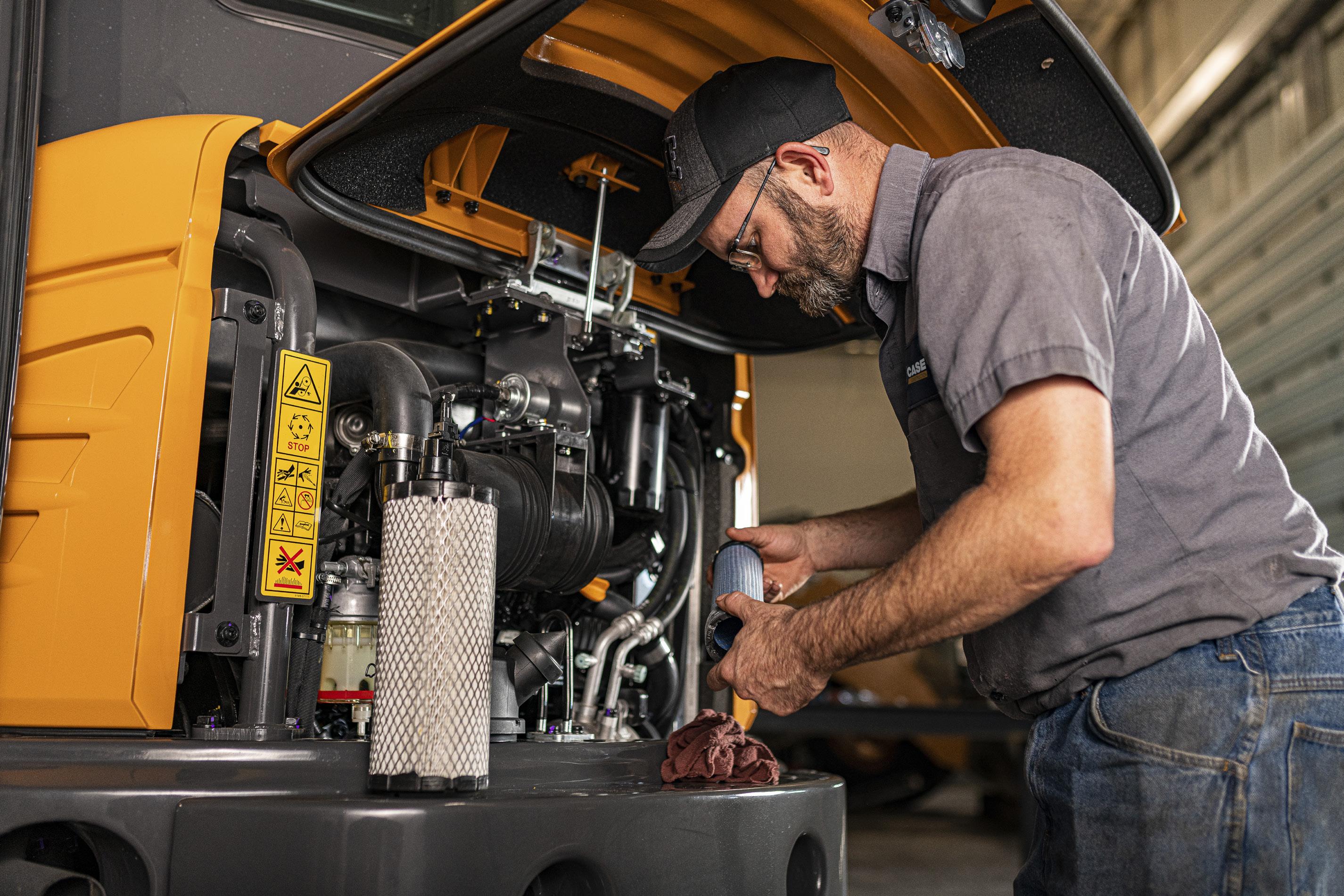

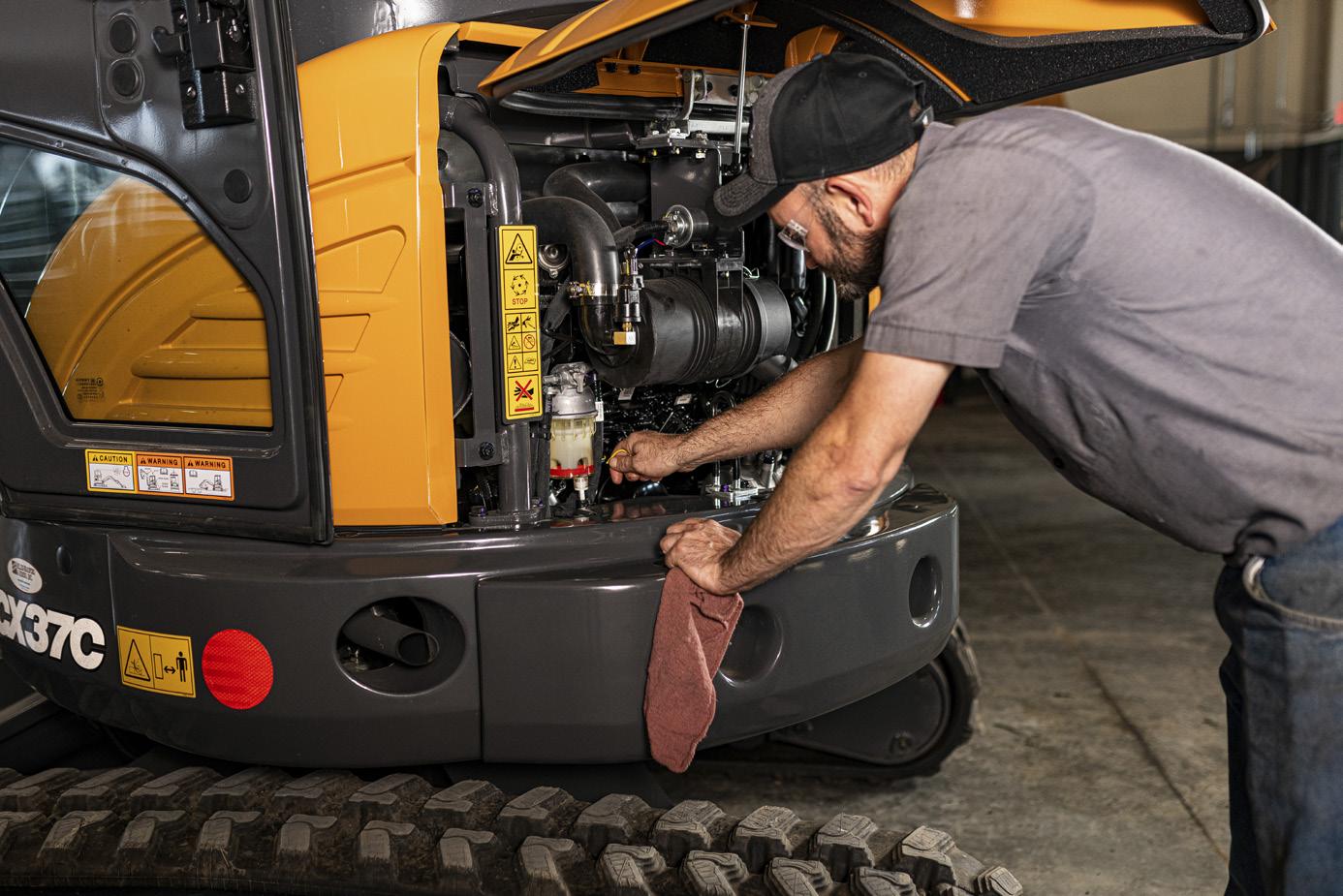
www.ForConstructionPros.com/Equipment EQUIPMENT MANAGEMENT 32 EQUIPMENT TODAY | October 2023
Regular maintenance will save time and money and ensure that your equipment is performing optimally.
a
your
will help verify that your machines are getting what they need. Telematics can improve your ability to detect equipment issues immediately. CASE CASE CASE
Having
relationship with
OEM
The Value of PLANNED MAINTENANCE
In the world of construction, where projects are bound by tight deadlines and rigorous demands, there is no time to waste on equipment downtime and unexpected maintenance issues. For operations to run smoothly, proper maintenance must be a top priority, as every minute your machinery is down leads to revenue loss. That’s why shifting gears to a more preventative maintenance approach will help you elevate your operational success. Implementing a proactive strategy has been shown to increase worksite productivity, ensuring that your projects stay on schedule and that your equipment continues to operate at peak efficiency.
By implementing a planned maintenance program, your construction operation can concentrate on its core business without the added concerns associated with unexpected maintenance, such as finding skilled individuals to perform the necessary maintenance tasks.
What a Planned Maintenance Program Has in Store for You
What does it mean to have a maintenance program? Essentially, it’s a comprehensive maintenance agreement that covers all manufacturer-recommended maintenance tasks, allowing dealer technicians to effectively service and maintain your equipment.
In terms of benefits, regular maintenance and inspections conducted by experts at recommended intervals can enhance equipment performance and efficiency, reduce overall downtime and operating costs, increase equipment longevity and resale value, and improve safety on the jobsite.
Another advantage of a planned maintenance plan is the use of original equipment manufacturer (OEM) parts and fluids specifically designed for your machine’s optimal performance.
Proper equipment functionality enables projects to progress efficiently without costly interruptions and downtime, ultimately resulting in increased profitability of the operation. Moreover, performing routine maintenance tasks, such as changing filters, lubricating parts and adjusting components, is far less expensive than repairing or replacing damaged equipment. This adds up to a higher return on investment and operational cost savings in the long run. Additionally, equipment with a detailed maintenance history can retain a higher resale value as it demonstrates to potential buyers that the machine has been properly cared for.
For equipment reliability, wellmaintained machinery experiences less wear and tear, preserving its integrity and extending its lifespan. Having equipment in good working condition also helps with reducing the risk of incidents caused by machine malfunctions on the jobsite.
Building, Implementing & Tracking Your Maintenance Strategy
When it comes to building a maintenance strategy for your machinery, having a strong relationship with your OEM is crucial, because they have the expertise and industry knowledge necessary to guide you in your maintenance journey.
To develop a successful maintenance plan, it is important to communicate with your dealer regarding the specific demands of your equipment, its rate of usage—in a given day, week, month or year—and any other observed issues or relevant concerns that you have about the machine.
Thanks to advancements in telematics technology, there is much better visibility today than in the past regarding how much the equipment is
being operated and the level of usage of that equipment. By taking into account the construction application of your equipment and its operating conditions, your OEM can customize a comprehensive maintenance program that is specifically tailored to meet the needs of your machinery.
Your maintenance plan will outline the recommended intervals when routine service tasks and inspections will be required within a wellstructured maintenance schedule. This ensures that maintenance is properly planned and executed and that the machine achieves its intended goals.
In terms of scheduling, maintenance services can also be arranged to the flexibility of your construction operation. Whether it’s after hours, or during times when the equipment is not in use, your OEM will work with your schedule.
On the other hand, it is important that you keep track of when your machine services need to be done. To stay on top of your equipment maintenance schedule, take advantage of any maintenance tracking systems or software offered by your equipment dealer to monitor service history, track upcoming maintenance tasks or receive timely reminders.
Monitoring Your Plan’s Effectiveness
To make sure your maintenance plan continues to meet your equipment needs over time, it is essential to monitor its effectiveness. Keeping a comprehensive record of all maintenance tasks performed on your construction equipment is one way to assess if your maintenance program is delivering the desired outcomes. Accurate record-keeping also aids in identifying areas that need improvement so necessary adjustments can be made to improve your equipment upkeep. If you notice an increase in downtime or repairs,
make sure to notify your dealer so that they can evaluate what changes to make. Another valuable source of insight into the functionality of your maintenance procedures is the equipment operators themselves, since they interact with the machines on a daily basis.
Overall, this is a proactive, cost-effective and customizable maintenance solution that offers construction businesses the opportunity to optimize their equipment maintenance and be more efficient on the jobsite. By prioritizing preventative maintenance and devoting to a planned upkeep program, you can safeguard your equipment investment.
A planned maintenance program is a valuable asset because it maximizes fleet performance and equipment longevity, while also reducing downtime and operation costs.
Most importantly, it promotes safety within construction sites and provides peace of mind by guaranteeing that your equipment is properly maintained with high-quality parts and certified services.
Don’t wait for costly downtime; choose the proactive path of conducting regular maintenance with your equipment dealer. By doing regular maintenance and addressing potential issues before they become major, you not only save time and money, but you improve operational productivity, ensuring that your equipment performs optimally.

Talk to your OEM today about the right proactively planned maintenance strategy.
Read more at: https://eqtoday.co/planned
www.ForConstructionPros.com/Equipment October 2023 | EQUIPMENT TODAY 33 EQUIPMENT MANAGEMENT
Ryan Schubert is aftermarket services development manager for CASE Construction Equipment Parts & Service.
Samsara J1939 Cable Fleet Management Solution
The J1939 cable connects all makes and models of heavy equipment to the cloud and tracks real-time GPS, engine performance and diagnostic data for easy accessibility. Heavy equipment engine data, such as fuel level, DEF level and coolant temperature, is captured in real time, providing the information needed to make quick equipment management decisions. The system can be used to maximize asset usage with scheduling tools and utilization reports to ensure machines are used to maximize revenue. It can also improve machine uptime with preventive maintenance schedules based on real-time engine logs, diagnostic data and fault codes.

ClearPathGPS Fleet-Enabled Dash
Cam
ClearPathGPS partnered with OwlCam to provide a fleet-enabled dash cam that automatically detects harsh braking, acceleration, turning and crashes, plus records location data, vehicle speed and accurate time/date while the ignition is on. Smart response further protects parked vehicles by detecting impact and broken glass events. Fast LTE connection uploads recorded video instantly to the cloud. Tamper-free video footage can be securely downloaded for use in insurance claims, court cases, driver coaching and more.

Petro-Canada Lubricants EVR Fluids for Electric Vehicles
Petro-Canada Lubricants has launched a new line of lubricant solutions for electric vehicles (EV), Petro-Canada Lubricants EVR. The launch of EVR lubricants enables Petro-Canada Lubricants to support original equipment manufacturers (OEMs) to design solutions for current EV challenges and drive innovation in the design of EV technology. To help enable performance, protection and reliability for EVs, Petro-Canada Lubricants introduces the following new product brands: EVR Driveline, EVR Thermal Management and EVR Motor Greases. EVR fluids and greases provide OEMs with material compatibility, power transfer and equipment performance to enable the development of driveline, axle and battery technologies for use across a range of sectors including automotive, as well as heavy- and medium-duty transportation.
My Epiroc Digital Fleet Management Solution

My Epiroc is available on web and mobile devices to provide workflow optimization assistance, help track productivity and highlighting essential items that need immediate attention.

• Alerts and status updates
Platform exposes faults and bottlenecks
• Remote-guided support
• Transparent overview of all previously reported inquiries
• Data securely stored in an encrypted cloud environment
SafeGauge SafeTest Wireless Dial Indicator Series
The SafeGauge SafeTest Dial Indicator (DI) Series is designed to remotely measure clearances, tolerances and wear on machine components at safe distances, avoiding potential hazards during operations. Capable of measuring up to 0.39 in. (10 mm) of displacement with an accuracy of 0.0004 in. (0.01mm), technicians can connect to the wireless device up to 164 ft. (50 m) away. The SafeTest DI Series is packaged in a rugged hard shell carry case, with built-in charging harness. Individuals can choose from one, two and four Channel Kits. Each wireless device features 10 hours of battery life.

ToolWatch Heavy Equipment Asset Management
ToolWatch expanded its platform built to enable companies to more effectively manage their heavy equipment. The company, which provides fast and secure access to real-time operations data, provides its clients with the means to ensure their heavy equipment is at the correct job site, is being used by the correct operator and is in good working order, maximizing the return on investment. The announcement of heavy equipment support in the ToolWatch platform marks an expansion of the company’s focus beyond expense tools and consumables.
Construction companies can use ToolWatch to manage their heavy assets and track the return on investment for each piece of equipment on a monthly basis, as well as knowing which job each piece of equipment is being charged to and how to accurately bill for the use of the equipment. Heavy commercial equipment also has extreme service requirements. ToolWatch’s management system can help avoid unplanned maintenance by keeping machines on track for service. Improved service can also expand the life cycle of the equipment, further raising its return on investment.

34 EQUIPMENT TODAY | October 2023 www.ForConstructionPros.com/Equipment EQUIPMENT MANAGEMENT Products Read More at https://eqtoday.co/fleetmgmt
XL Specialized Trailers New Options for Guardian Trailer
XL Specialized Trailers has introduced new options for the XL Guardian 110 Hydraulic Detachable Gooseneck (HDG) trailer, a standardized construction trailer. The new line of options includes an 18-in. loaded deck height version and 60-in. axle spacing option. In addition to the 22-in. loaded deck height option for the main bed, XL now offers an 18-in. loaded deck height option. Operators can adjust the height of the deck for diverse loads with a fiveposition variable ride height in the neck and manual ride height in the rear.

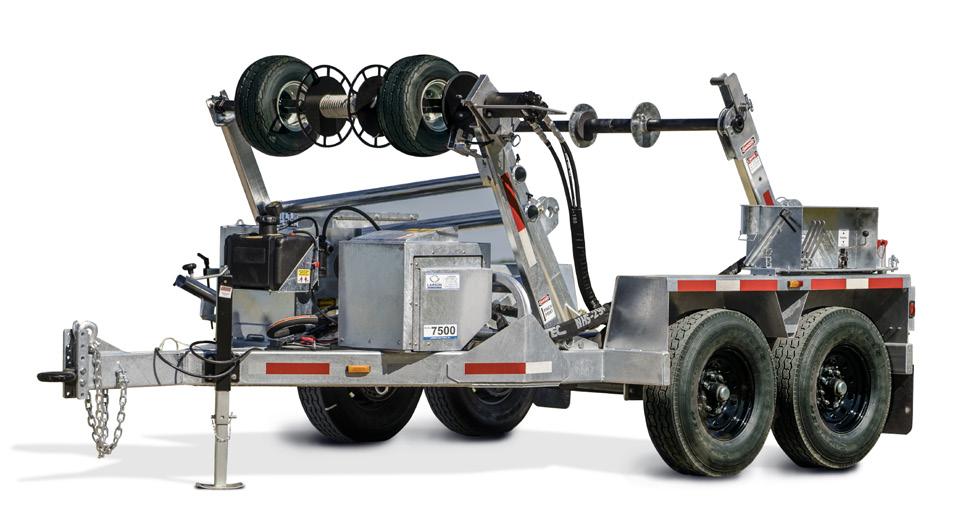
VisionTrack AI-powered Video Analysis
VisionTrack, an AI video telematics and connected fleet data specialist, has launched an AI-powered post-analysis solution for commercial fleet safety. NARA (Notification, Analysis and Risk Assessment) is device agnostic and can be integrated with existing connected camera technology, whether VisionTrack or third-party hardware. It adds a layer of analysis to AI vehicle cameras, installed with edge-based AI technology, that are often limited by the processing capacity of the device. NARA uses computer vision models with sensor fusion to assess footage of driving events, near misses and collisions. This review process eliminates human availability or error.
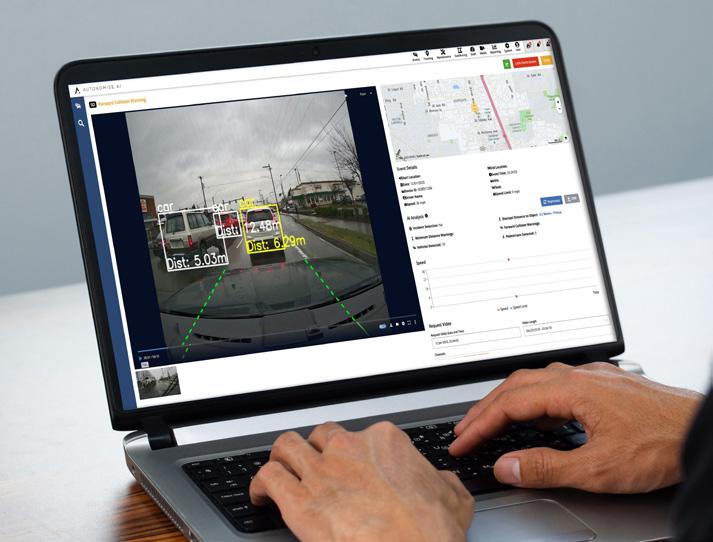
Cummins Hydrogen Internal Combustion Engines
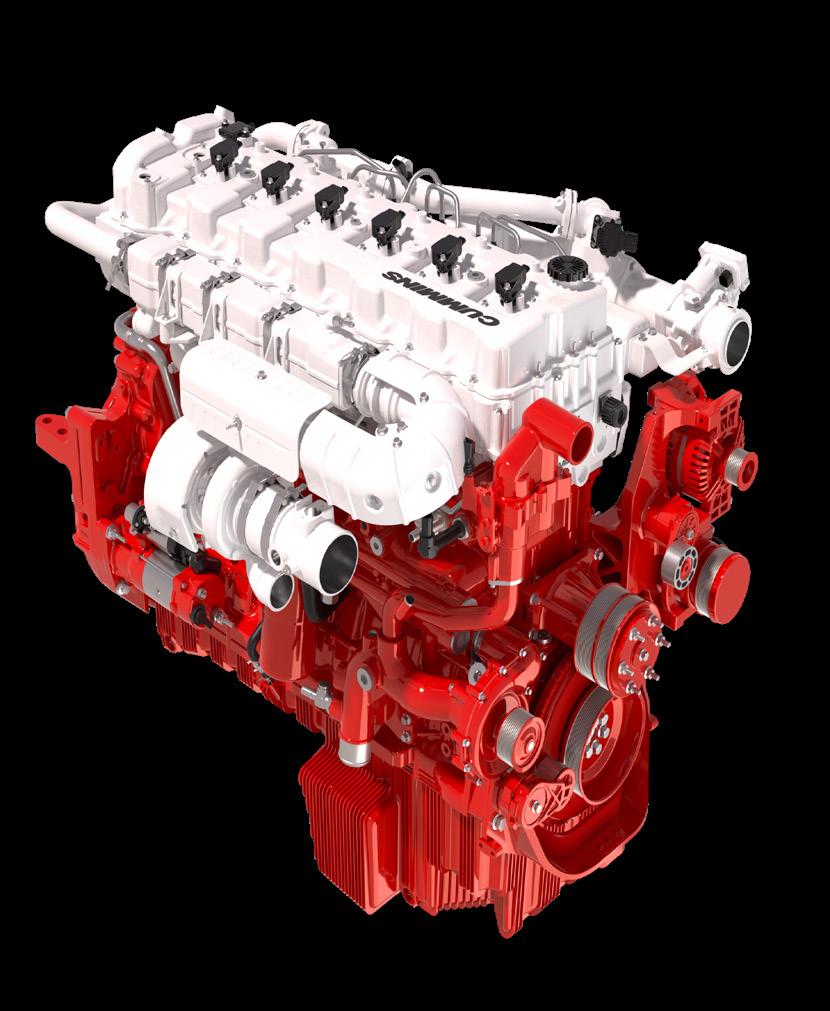
Cummins and Taylor Machine Works have announced a signed letter of intent with plans to integrate the Cummins 6.7L and 15L hydrogen engines into the Taylor product line. Cummins engines power a large portion of more than 100 different models of lift trucks manufactured by Taylor for the heavy lift industry. Hydrogen combustion engines will create a zero-carbon fueled solution that provides equipment for high load factor and high utilization applications. Adding H2ICE to the mix of zero-carbon solutions will reduce the load required from stressed utility grids. Finally, commonalities with traditional internal combustion equipment will provide solutions that are dependable.
Kubota D1105-K
Kubota offers the D1105-K diesel engine for construction equipment and machines requiring 24.8 hp of output. Building off the D902-K, the D1105-K engine offers 3,000 rpm, three cylinders and 1.123L displacement. Equipped with the TVCR combustion system, the D1105-K engine combines Kubota’s original combustion system with electronic control technology developed specifically for small engines. The engine adopts the Kubota TVCR combustion system for compact size and use as a replacement to conventional Kubota engines.
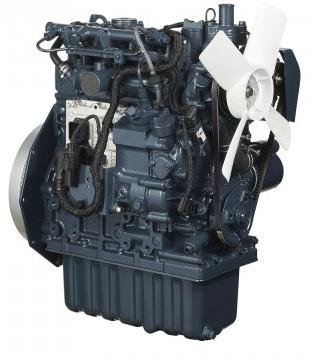
Precise control and great efficiency
Felling Trailers New Product Offerings
Felling Trailers has added Larson Cable Trailers to their product offering with the LCT-7500, LCT-5620 and LCT-5700. A division of Felling Trailers, acquired in May of 2021, Larson Cable Trailers specializes in fiber-optic cable-handling trailer products. The Felling Trailers sales team is now offering the LCT models as part of its product line.
NOKIAN TYRES HAKKAPELIITTA TRI
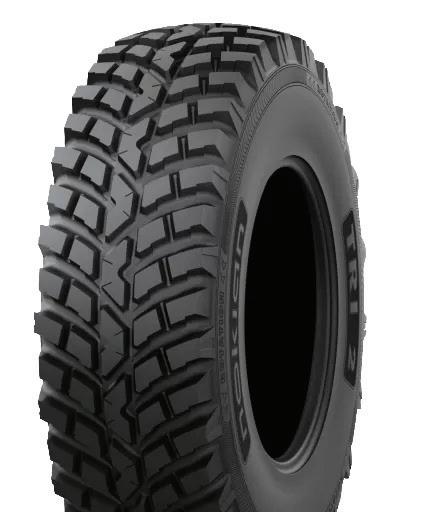
EXTEND THE ALL-SEASON CAPABILITIES OF YOUR MACHINE
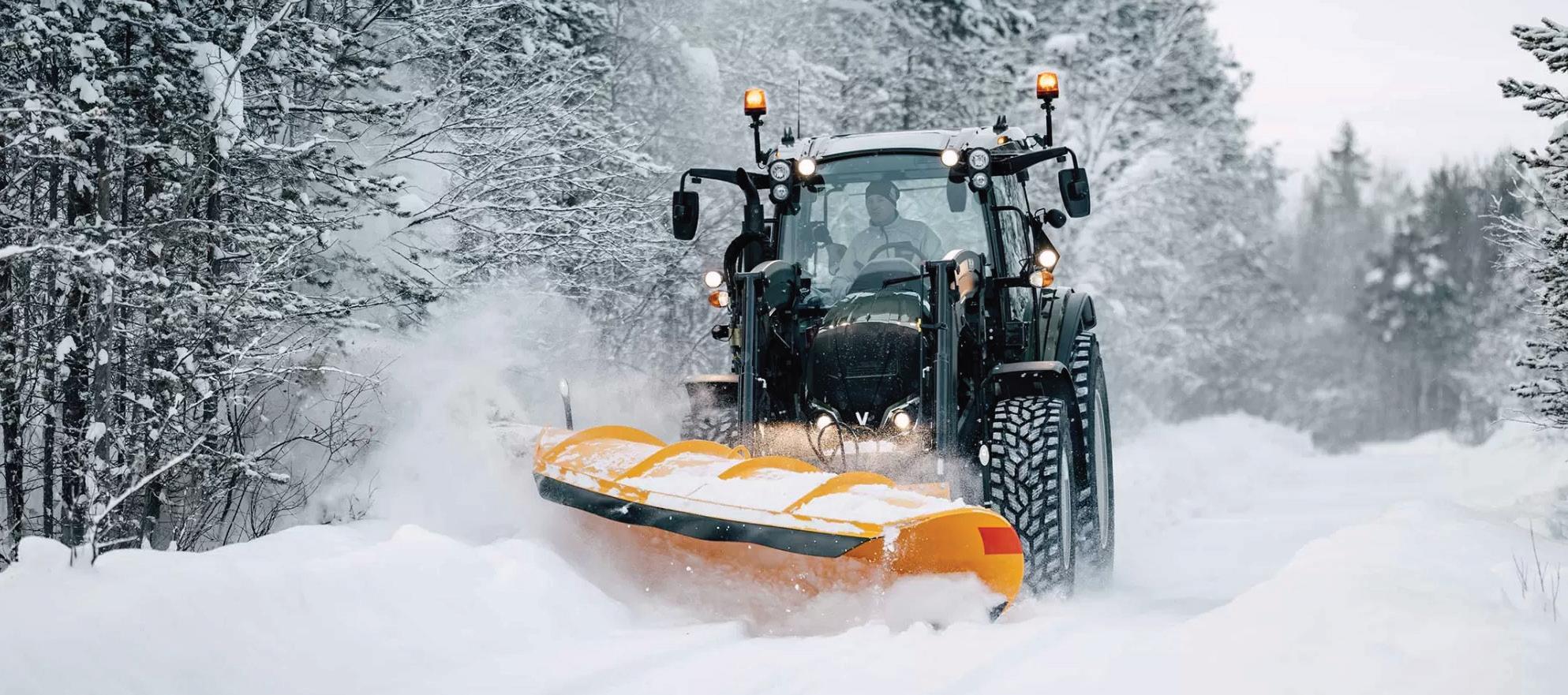
The versatile Nokian Tyres Hakkapeliitta TRI brings the most winter grip to your work. Tough enough for years of extensive use, this specialist tire has excellent braking, accelerating and steering properties.
Driving comfort on class on its own Superior traction and lateral grip nokiantyres.com/heavy
October 2023 | EQUIPMENT TODAY 35 EQUIPMENT MANAGEMENT Products
www.ForConstructionPros.com/Equipment
In addition to monitoring trucks and taking corrective action in real-time, this facility uses the active idle alert feature. If any monitored piece of equipment idles for more than a company-set time (which varies by equipment type), the supervisor receives an email alert.
Georgia Contractor Reins in Driver Behavior With Telematics
Driver safety is a concern for any company that has vehicles on the road. In addition to the conduct of the drivers themselves and their interactions with those around them, there is concern about how bad driver behavior might be perceived by the public. One Georgia contractor operates an asphalt plant for its paving projects and others’ projects. It also has a division that engages in heavy civil construction projects. It uses telematics to rein in driver behavior. Here’s how they use the technology to reduce incidents of speeding (relative to the posted speed limit), hard braking, fast starts and hard turns among their fleet of 150 on-road vehicles.

Vehicle data is captured from either a telematics app or an in-vehicle device.
They have about 400 devices installed, 150 of which are on-road vehicles. Those are maintained by in-house mechanics. Most are hardwired, but they use the ODB-2 port on anything they can.

36 EQUIPMENT TODAY | October 2023 www.ForConstructionPros.com/Equipment TECHNOLOGY
The contractor uses telematics to rein in driver behavior and reduce incidents of speeding, hard braking, fast starts and hard turns.
Fleetwatcher
The only vehicles they use the ‘app as a device’ for are when third-party haulers are hauling on their projects. That way, they have 100% of trucks accounted for on our shifts, the contractor's business process manager (BPM) reported.

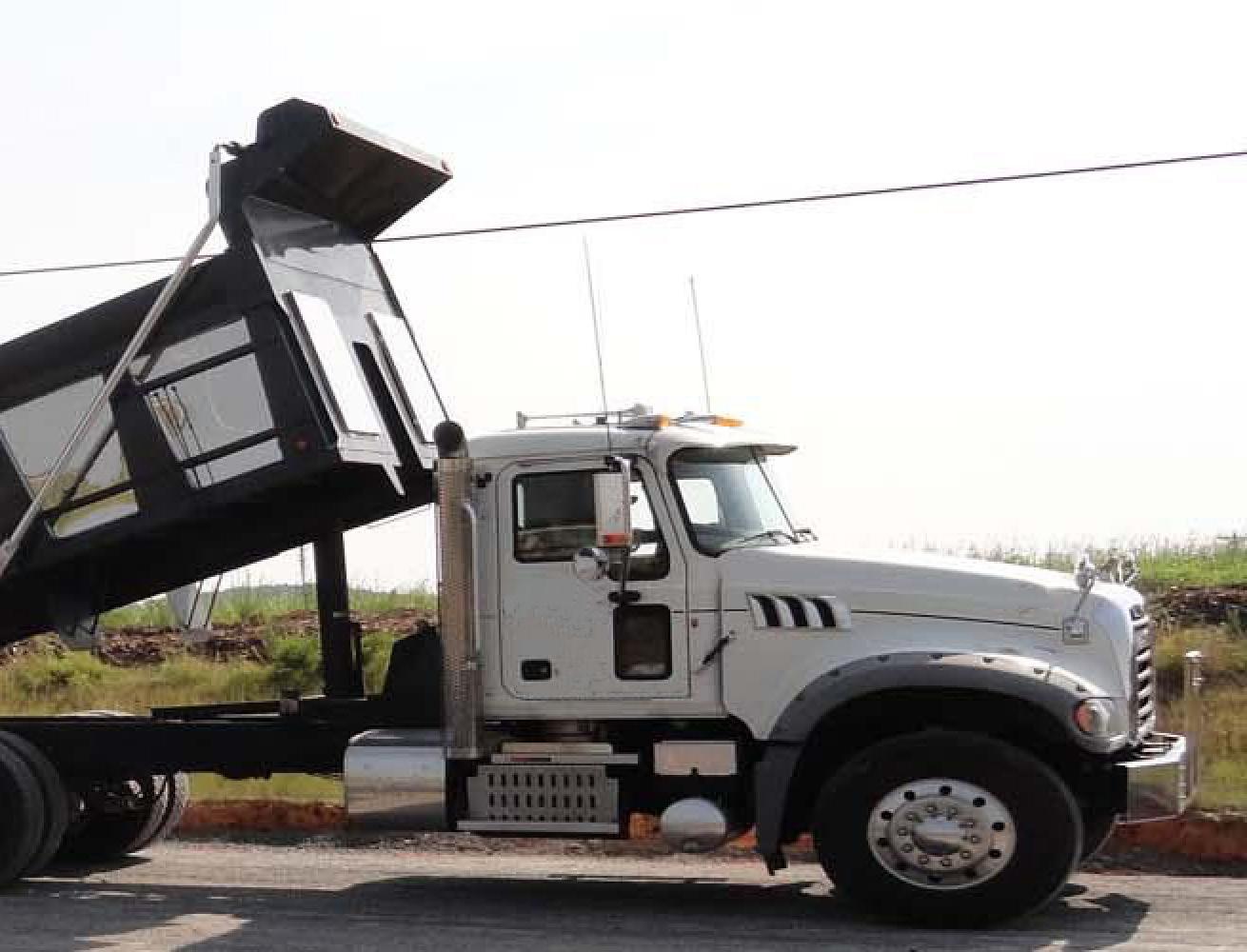
This data, which is reported continuously, is used to assign a numeric score and a letter grade to each driver. The fleet monitoring system tabulates the data into a report that is distributed weekly to key company personnel.

The president will [review] the report to see who the biggest group of offenders are and then call their supervisors. "This person is not driving great; here’s what they need to improve on. Please talk with them,” said the BPM.
He further explained that they had one person who was driving a heavier vehicle and had earned an F
the previous week. They had a serious talk with him. The next week, he went from an F to an A-, so they had a lighter talk with him. "You did great last week, we’re all proud of you, keep it up," was the sentiment.
The BPM explained, “We may not have ever known about this driver’s habits without [the telematics system]. We first tested the device to make sure everything was calibrated correctly. Then after confirming the device was correct, sat him down and talked about the responsibility associated with driving. We let him know we would be watching for an improvement and gave him tips to think about based on the habits [the data] revealed (for example, leaving more space than he thinks he should to give ample brake distance because [the telematics] pointed out the harsh braking events). After that, his score steadily improved.”
Since then, the driver has
consistently been in the B range, which is a drastic improvement over his initial behavior. While not every example is this dramatic, not every driver is starting out with an F.
“A big part of this was our commitment to improve. [The
telematics system] gave us the tools to see what was happening and to hold drivers accountable.”
If You Can Measure It, You Can Improve It
In addition to the driver safety reports that are generated, the BPM also takes
October 2023 | EQUIPMENT TODAY 37 TECHNOLOGY
www.ForConstructionPros.com/Equipment
FleetWatcher
The fleet management software keeps up with each driver’s infractions. Editor’s note: The drivers’ names have been concealed.
Fleetwatcher
a deeper dive into the data using data visualization software to help his team better think about the data.
Every Monday, the BPM runs the driver safety leaderboard report then take the CSV export and save it to a
file folder. Then [the visualization software] will pick it up and make the dashboard, which is a four-page report.”
The first page is exactly like the driver safety leaderboard. Every driver
receives a numeric score based on their driving performance for the past week—based on the four criteria monitored. Drivers and their scores are listed in descending numerical order, with the best driver’s score at the top and the worst at the bottom. In addition to a numeric score, each driver’s score bar chart is color-coded for easy identification. Anything above 60 is blue and anything less than 60 is red. Drivers with red color bars are typically selected for personal discussions.
The next page of the report lists the infraction type average per driver.
They are able to look at a single driver to see that, over this timeframe, they had an average of this many speeding events, this many harsh braking events, this many harsh turns, and this many fast starts, the BPM explained. It will also show a colorcoded distribution so you can see immediately, "Oh, that’s a lot of blue," or "that’s a lot of speeding" and so on.

The BPM can look at all drivers to see how many infractions they have and see who’s the biggest risk and then act to counsel drivers as needed.
The next page of the report is a pie chart showing every driver and every infraction and what the distribution is. The BPM can look at the company to see what the most common infraction is.
The BPM explained that if the contractor is looking to cut back on a specific behavior, this report is where they would find the biggest offenders of certain behaviors.
The last page is a tabular view of the same kind of data, so the BPM can quickly see that Driver 1, for example, has 28 speeding incidents including six moderates, zero hard turns, zero accelerations and zero hard braking infractions, and he got a grade of B. The different thresholds for all infractions are set to industry
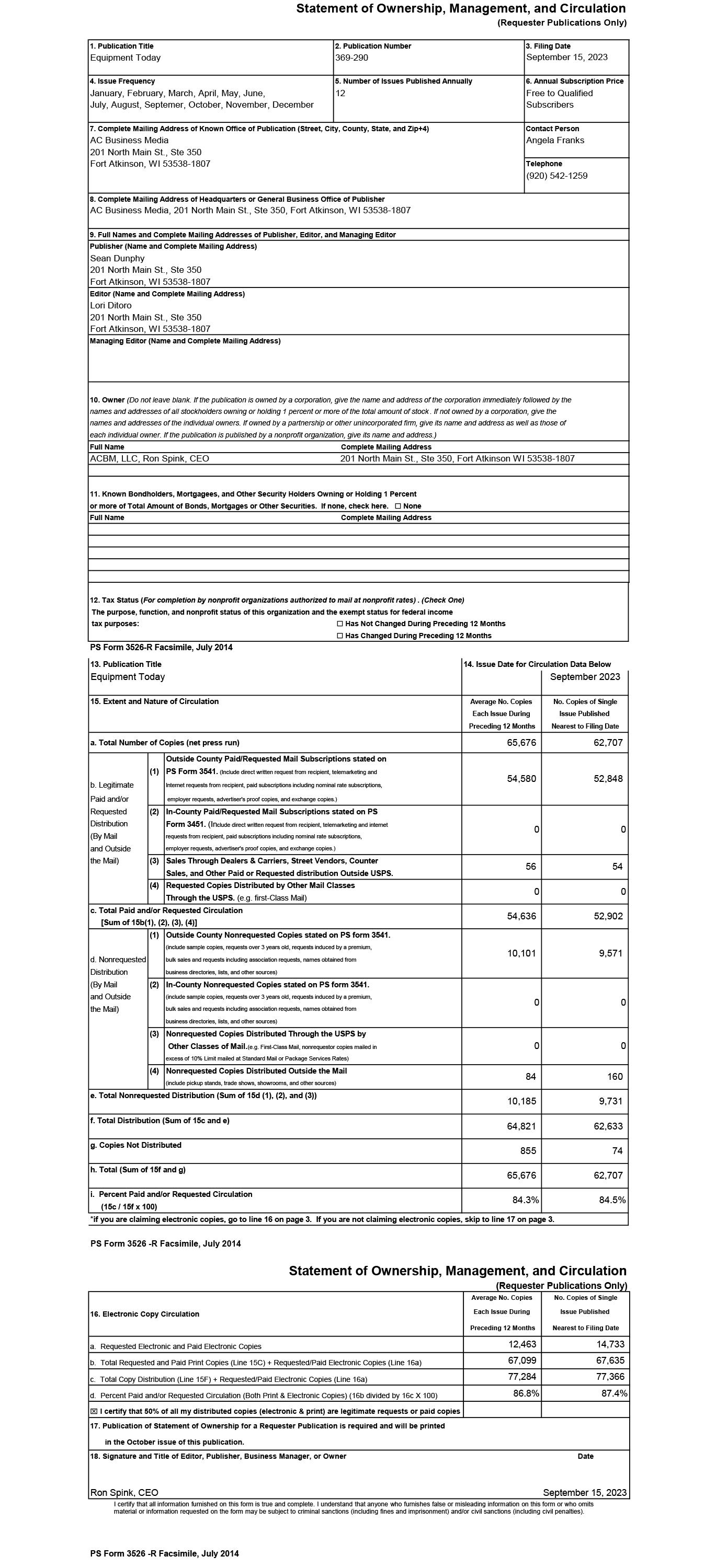
standards by the fleet monitoring software as default. Customers can edit those thresholds on either a company basis or by vehicle category. This contractor edited the thresholds so that heavier vehicle categories are held to stricter standards.
Overall, the company has noticed an improvement in driver behavior. In fact, the BPM commented that in the asphalt paving business driver behavior has improved across the board without any driver discussions. “We had not spoken with the dump truck drivers that haul mix and aggregate, but their scores improved as a whole. Every single one of them improved over time," the BPM reported.
Perhaps it was because they sign in to the fleet management system every day and know that they are being monitored.
The BPM said that perhaps behavior improved because their names were added to the vehicle but every single driver improved to an A or a B. It also helped the company weed out a driver who wasn’t going to cut it.
Does Proper Spacing Eliminate the Rush?
Another possible reason for the driver behavior improvements could lie with the visibility that the telematics system provides across the whole fleet, as evidenced by a paving project along U.S. Highway 27. The project was a straightforward mill and overlay job covering all four lanes of U.S. 27 in each direction. In addition, there was a bidirectional turn lane in the middle, along with some median work and some patchwork, but the majority was mill and overlay. The project required 30,000 tons of material, including base, binder and topping. With heavy traffic in some sections, keeping trucks properly spaced with minimal waiting was a challenge. Here’s how they did it.
38 EQUIPMENT TODAY | October 2023 www.ForConstructionPros.com/Equipment TECHNOLOGY
The software calculates each driver’s average score. Editor’s note: The drivers’ names have been concealed.
Fleetwatcher
Roughly 2 years ago, the company implemented a telematics platform that is specifically designed for asphalt paving contractors. The system provides real-time visibility to all the company’s paving assets. Managers, supervisors and other users can see:


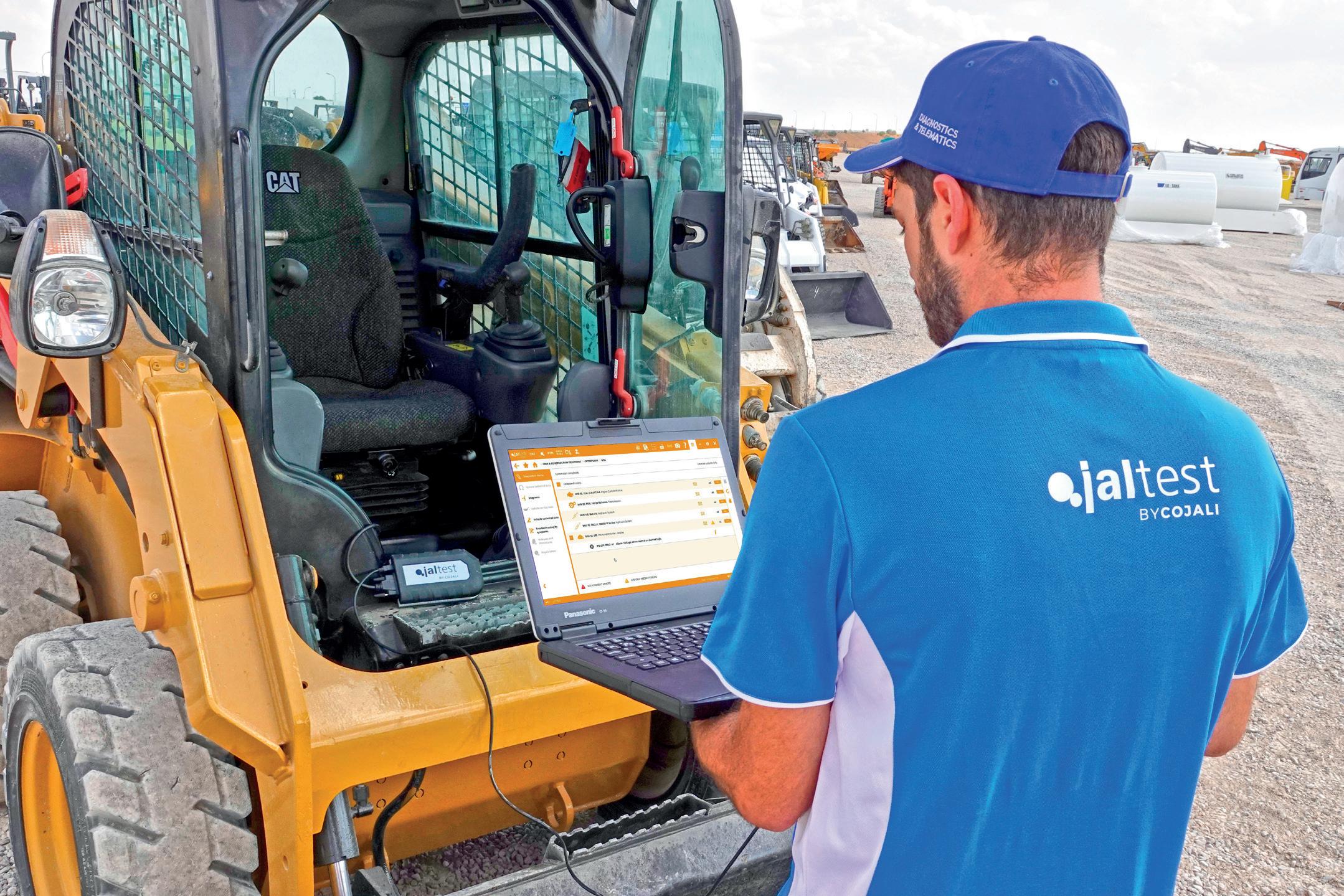
˜ How many trucks are allocated to a specific job
˜ Where they are
˜ When the trucks are due to arrive at the paver (or return to the asphalt plant)
If there is a traffic tie-up that is causing problems, the dispatcher can alert trucks to take an alternate route around the problem area, saving valuable time. The BPM of the company especially appreciates the load cycle analysis (LCA) screen that quickly shows him how the trucks are spaced—and whether they are bunched or staggered.
The BPM reported that being able to see every single truck on a shift and seeing whether they are in a stair-step pattern at a glance is valuable.
In addition to monitoring trucks and taking corrective action in realtime, this facility uses the active idle alert feature. If any monitored piece of equipment idles for more than a company-set time (which varies by equipment type), the supervisor receives an email alert. If the idling continues for long enough, the supervisor gets another alert as does the manager. As the idling continues, the alerts escalate up the corporate ladder—but usually, one or two alerts are all that is needed to get the asset back into productive mode.
The BPM described a time on the Highway 27 project when his inbox was blowing up. The team was getting flooded with alerts from the paver, which sends an alert about every 30 seconds. He looked at the LCA and saw that they had a bottleneck at the paver—so he called the foreman on site. Turns out the paver had a problem and was down for about 20 minutes.”
Rather than continuing to send trucks to wait in the line that was forming, the dispatcher redirected several trucks to other projects.
In addition to monitoring the LCA report in real-time, the BPM also creates an F4 at source/at destination report each day. This tells how long each truck has been at the source and how long it’s been at the destination. This data is exported into an Excel spreadsheet and colorcoded before being distributed to the paving foremen, superintendents and managers.
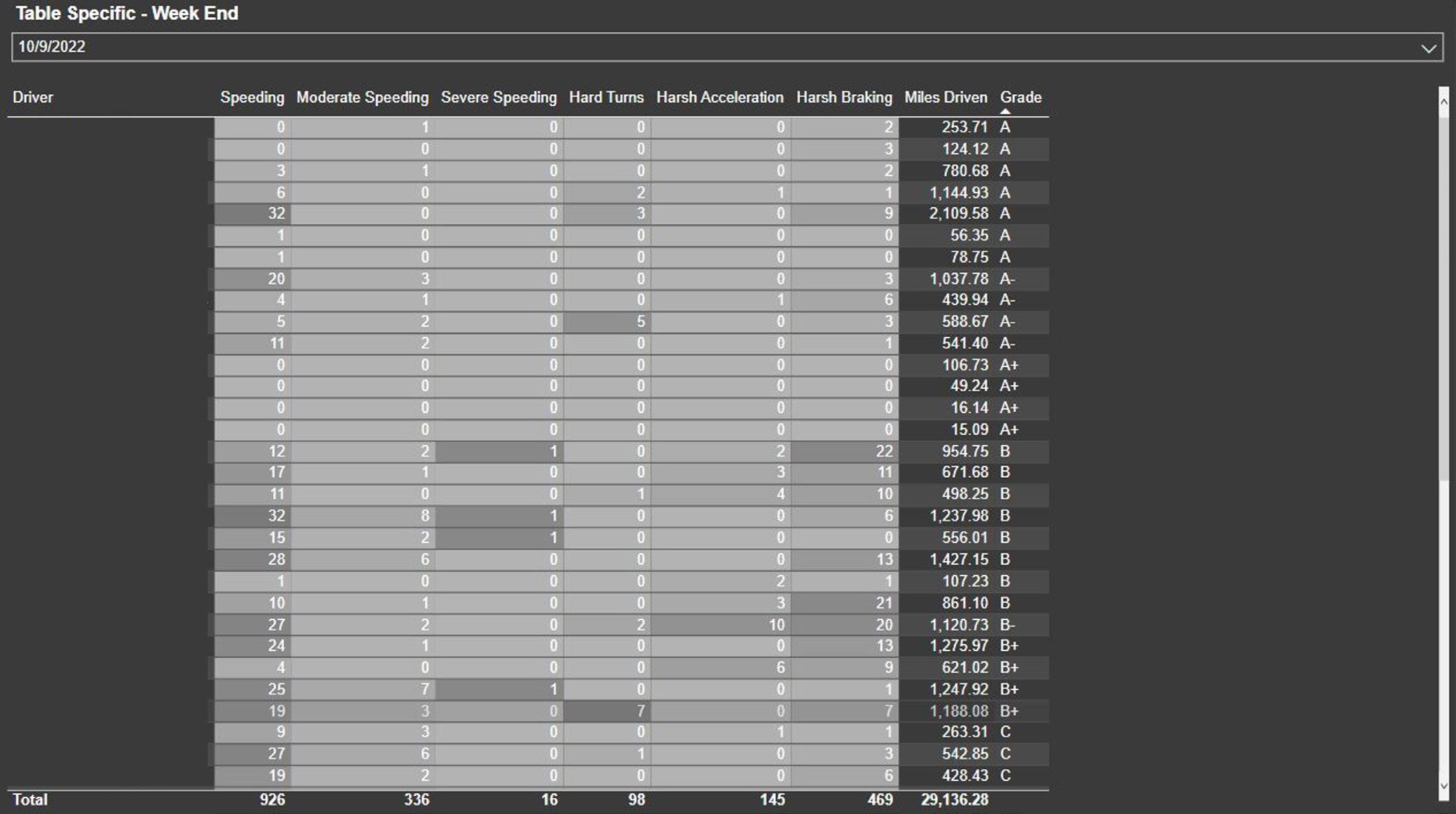
The longer a truck lingers at either the source or the destination, the redder it is plotted. This provides another at-a-glance tool to see how the team is doing.
According to the BPM, it’s a report they run every morning to look at yesterday’s shifts before starting the new day. Sometimes it leads to changes in the fleet and the number of trucks on the road.
Whether trucks are evenly spaced using the LCA and therefore aren’t rushing around, or driver behavior
improves from counseling, or there is some of the “Hawthorne Effect” of improvement because drivers know they are being watched, this contractor is happy with the results.
Ensuring that smooth stair step desired in the LCA has been huge for them, the BPM reported. Driver safety has also been a smooth and impactful
feature of [the fleet management system] for them, he said.
Read more at: https://eqtoday.co/fleetwatcher0923
October 2023 | EQUIPMENT TODAY 39
TECHNOLOGY
Evan Triggs is the vice president of FleetWatcher.
The data, which is reported continuously, is used to assign a numeric score and a letter grade to each driver. The fleet monitoring system tabulates the data into a report that is distributed weekly to key company personnel. Editor’s note: The driver’s names have been concealed.
Fleetwatcher
BEYOND DASH CAMS for Fleet Management Software
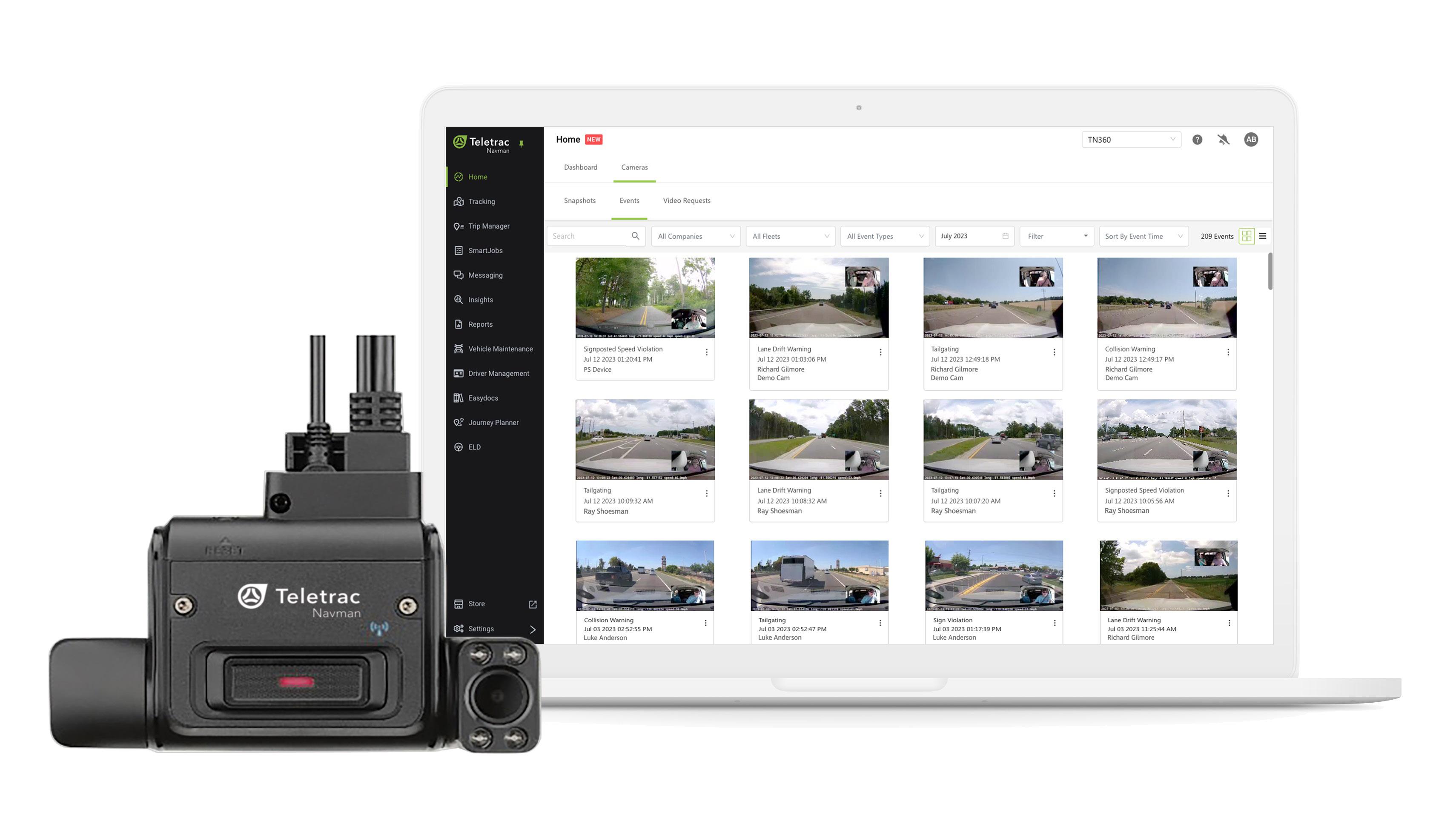

www.ForConstructionPros.com/Equipment 40 EQUIPMENT TODAY | October 2023
AI-enabled,
value
tightly integrating
data
TN360 fleet
software Teletrac Navman
Teletrac Navman’s new
dual-camera device adds
to video imagery by
with other
flows in Teletrac’s
management
On a call recently, one IRONPROS editorial advisory board member said it succinctly: “These front- and rear-facing dash cams are becoming table stakes for fleet management solutions.”
Dash cameras are now an expected feature rather than a differentiator in GPS fleet management software.
Teletrac Navman in August 2023 announced its new intelligent IQ camera. It adds capabilities to an existing dash cam offering.
Other fleet management software vendors ranging from Tenna to Equipmentshare have introduced dash cams and others, like Geotab, extend their solution with partnerships to check this box.
As Teletrac Navman announced its IQ AI-powered dual-camera dash cam for its TN360 fleet management application, Teletrac Navman Head of Global Product Management & UX Mayank Sharma said there were some distinguishing ways the software used data from the unit and laid out differentiators for the fleet management product suite as a whole
Dashcam Data in Context
“Yes, our competitors already have cameras,” Sharma said. “We also had cameras in the past, and we still have a range of cameras from what I would consider as entry level AI and sort of detection to more advanced and premium solutions. But the ones that we launched just now I’m very excited about is the single pane of glass experience our flagship product, TN360. In terms of the experience on the on the software side, we have a range of features that we can throttle up and down based on what the customers are looking for.
“And why a single pane of glass matters is because now we are able to bring the video data where [it] belongs. It’s not a separate thing that the customers have to go into. They don’t need to download and watch a bunch of videos. We’re taking that footage and associating it in the software with harsh driving and where these events actually happened on the map.”
This may distinguish, if not the camera, the way the software leverages data from the camera and other sensors. Some competing products may not tie video and events captured in software as tightly, creating nonvalue-added work for management.
“What we’re trying to do is bring the video not as a separate thing, but video as an additional data point for the for the fleet manager, along with the telematics unit along with the other types of data that we generate,” Sharma said. “So we are bringing the data into the context in which the customers actually use the data which is I think, pretty unique.”
TECHNOLOGY |
By Charles Rathmann, Senior Editor, Construction Technology, IRONPROS
The hardware itself is purposebuilt for the construction environment in ways that go beyond simple ruggedization.
“You can attach side cameras if you needed to,” Sharma said. “It is rated for very harsh conditions on construction equipment, both from a temperature perspective, as well as dust, grime and vibration. It gets mounted on the middle of your windshield as most of the cameras do. And it has a wide field of view [and is] very easy to watch both the driver or the passenger.
“The outward camera can look to both sides of the engine bonnet. A lot of the construction trucks make it hard to see what’s happening at the bottom of the road or near the wheel well, and the field of view that we have on this camera on the outward side addresses that.”
Another consideration is the amount of storage on a dash cam to buffer video during times when a telematics unit cannot upload data.
“In case you are a construction operator or mining operator that is operating in low cellular areas, we can support up to about half a terabyte of storage on the camera itself,” Sharma said. “If you’re operating for extended length in local, low-connectivity areas, you can use the onboard storage to store the videos and can offload them using the SD card.”
Role of Dashcams & IoT Hardware in Construction Fleet Management
˜ Some dashcams (and other IoT devices) are more purpose-built for off-road construction equipment
˜ The way GPS asset management and fleet management software use the data from dash cams and other sensors to create business value will vary
˜ Some GPS-enabled asset management software for fleet management will focus more on on-road vehicle fleets while others exclusively or primarily handle offroad equipment used in production
˜ Fleet management software may capture data from their own proprietary or OEM telematics units or sensors, while others will also incorporate data from OEM telematics units and other sources
˜ Streamlined solutions may offer no dashcam and focus on straightforward cost-per-device location tracking
˜ A few products have no hardware, instead aggregating and adding enterprise context and value to asset data flows from disparate other solutions with hardware
Construction Equipment Fleet Management Software
Teletrac Navman is in an interesting position in construction equipment fleet management software because
while the company supports on-road fleets, the overwhelming majority of its customers are using the product to track equipment on projects rather than on-road vehicles. This is evident in ways that extend well beyond the design of the IQ Camera. Teletrac Navman has been around since 1988, employs 900 globally and gets some percentage of their business referred from its parent company, Vontier.
While Teletrac Navman separates itself from large horizontal players through its construction focus and from startups with its size and stability, the software functionality must carry its own weight.
“Finding out where your equipment is, is actually table stakes,” Sharma said. “Everybody wants to know that. And all providers offer that. So that’s not a differentiator.”
Where Teletrac Navman seeks to differentiate is with strong functionality to support construction fleets in four areas:
˜ Streamlining equipment maintenance
˜ Managing uptime and use of the equipment
˜ Fuel consumption across yellow iron, stationary equipment like generators or on-road vehicles
˜ Safety on the job site
Sharma characterized the software’s equipment maintenance capabilities as strong in preventive and scheduled maintenance, but it is in the early stages with prescriptive and predictive maintenance.
“We’re not selling this predictive maintenance yet,” Sharma said. “But in terms of our professional services that we offer within the company, if the customer is partnered with us, you know, they’ve been with us for a while. We have a professional services team that can address how we take that data from our telematics devices and run it through some AI and machine learning models.
“So, we can predict things like the amount of vibration that is on a particular piece of machinery. If that vibration pattern actually changes, we can detect that through our machine learning and AI models. And we can actually talk to the customer to say, it looks like this particular piece of machinery has significantly degraded in the past three months or past nine months. So, we should actually go and have a look at that.”
Fleet technology to manage fuel consumption and spending will need to change as construction fleets move to alternative sources of power including electricity and hydrogen. Teletrac Navman is also wellpositioned to help here.
“We are part of the bigger company called Vontier, which is the largest provider of fuel dispensing solutions in the world,” Sharma said. “And
there’s a big conversation internally about sustainability, energy use and moving towards this mixed energy future.
“As we think about construction, going from purely diesel, or predominantly diesel to an alternate future, how can Teletrac help with that? Or how can Vontier help with that? And there’s a lot of discussion internally about that, as well, that we are bringing some solutions out in the near future as well.”
Teletrac Navman Tech Stack Teletrac Navman is a fully integrated software-as-a-service application extended by proprietary devices that relay asset data to the software that resides in the cloud. Different parts of the application reside on Amazon Web Services (AWS), Google Cloud and the Microsoft Azure Cloud.
This sophisticated cloud-agnostic approach means Teletrac Navman is less dependent on some of the utilities built into AWS than software vendors. The company can also house the application on servers in a given country for contractors or customers who are sensitive to such matters but have not yet pursued FedRAMP compliance.

Teletrac Navman Pricing & Market Teletrac Navman starts to become viable for contractors and other equipment-intensive businesses once they have between 75 or 100 or so pieces of equipment. Given the focus on larger fleets, device rollout tends to be phased. Very large nationwide fleets may present their own rollout schedule for Teletrac Navman to follow, including equipment currently deployed on construction sites.
“Within the site, we will have all of the assets covered,” Sharma said. “We would not have high priority assets versus low priority assets. I think if you’re going to go and connect the site, we would actually go and connect the whole site in a single visit so that we can reduce downtime or disruption to their business. If you have to make multiple trips, it disrupts the customer’s business and we try to avoid that.”
Contractors who want to know how much a Teletrac Navman fleet management solution will cost them can start at about $22 per month per asset but as much as $45 per month for more advanced compliance-related offerings. Sharma said the company relies on per-user and per-asset pricing with the cool person discount coming with hundreds or thousands of assets.
Read more at: https://eqtoday.co/josgvb
October 2023 | EQUIPMENT TODAY 41 www.ForConstructionPros.com/Equipment
Antifragility Explained: 5 Ways to Build Agile Construction Companies
Becoming antifragile as an organization can result in empowered cross-functional collaboration and will ultimately make you more productive and profitable.
While it might sound like a $10 word to impress your friends at cocktail parties (and we’re not saying it won’t), antifragility is both a biological concept and a critical business model for building organizational flexibility and agility into business structures that, in effect, make them less risk-prone.
In this article, we break down antifragility theory and concepts into understandable terms and provide five actionable takeaways for how you can build an antifragile
organization that wins more bids and is better equipped to (in spite of these worrying occupational numbers) respond more quickly to unexpected change. Becoming antifragile as an organization, after all, can result in empowered cross-functional collaboration and will ultimately make you more productive and profitable.

What Is Antifragility?
Antifragility is a concept first coined by a mathematician, scholar, and former hedge fund manager named Nassim Nicholas Taleb, who
essentially was frustrated that the existing financial terms used to describe the opposite of “fragility” (e.g., “robustness,” “resiliency”) were inaccurate. Taleb outlined these concepts in his 2012 book published by Random House.
In essence, being “antifragile”–whether an organism, a person, or a company–means that when the entity is exposed to external stressors, market instabilities, or risk, they grow stronger and benefit from the event. It is the exact opposite of “fragility,” a term Taleb describes as possessing “an
accelerating sensitivity to a harmful stressor” (for example, a smashed vase on the floor, the result of an accidental bump and fall). Similar but distinct terms include resiliency—a state of resistance to shock, remaining unscathed but in a stagnant state of growth—and robustness, a general state of healthiness and strength. The distinction, here, of an antifragile organization would be it benefits, and grows stronger, from the change.
Why Is Antifragility Important?
Large companies may grow
@freshidea - Adobe Stock www.ForConstructionPros.com/Equipment TECHNOLOGY
42 EQUIPMENT TODAY | October 2023
complacent and become indifferent to potential change—resulting in ridged organizational structures that are not conducive to randomness and sudden stress. Think, for example, how in nature when a queen bee dies, a frantic hive chaotically rushes to replace her.
Business research has strived to understand why start-up companies thrive in ambiguity, while some of the largest companies have fallen by the wayside. What are some takeaways?
Start-ups’ innovation activities differ significantly from those of traditional established firms. Their needs and methods of operation are different compared to mature companies, with start-ups possessing adaptability and, in many cases, the ability] to rapidly generate new solutions to face the effects (like the global COVID-19 pandemic).
In construction, a particularly disjoined industry, having antifragility—the ability to thrive amidst chaos (e.g., from change orders to rework)—is critical, with supply chain researchers positing the construction industry adopt an “antifragile supply chain” to “maintain and improve the competitive situation, and functional and environmental criteria of the company in order to deal with complexity and chaos.”
5 Ways to Build an Agile, Antifragile Construction Company
Now that we’ve discussed what antifragility is at a high level and why it’s important, here are five ways you can build an agile, antifragile construction company:

1. GET YOUR SKIN IN THE GAME
Taleb uses the well-known “skin in the game” idiom, the basic concept that if you’re not involved with achieving a goal, you face no risk and don’t stand to gain anything.
When companies involve themselves in construction forecasting, Taleb would likely insist that both the construction owner and employees contribute because a forecast impacts both—just as inventory managers should have a voice in the KPIs their performance is measured against.
Everyone to the forecasting table is not just a good motivator; it unlocks the wisdom of crowds, which increases the accuracy of forecasts/predictions because a crowd’s individual judgments can be modeled as a probability distribution of responses with the median centered near the true value of the quantity to be estimated.
2. DECENTRALIZE YOUR ORG STRUCTURE
Consider our earlier queen bee scenario. You don’t want to demobilize your project manager when you’re on vacation.
Consider how Milwaukee Tool
creates empowered leaders that are given the tools to become subject matter experts, equipped to be agile to supply chain disruptions while delivering the next generation of trade-focused power tools. Or how Netflix empowers their employees (and reciprocally their company) by encouraging decision-making by employees while also mandating that they “communicate candidly and directly, share information openly, broadly, and deliberately” such that information silos don’t create new fragilities. Or how Facebook (preMeta) encouraged employees to move fast and break stuff in an obsessed commitment to innovation.
Indeed offers some of the following recommendations for decentralizing your organization for better company outcomes:
˜ Establishing your company values, such as the ones we discussed above, that prioritize empowering employees to be decision-makers and having a seat at the table.
ready to transfer equipment from one site to another and avoid needless equipment overhead.
Some recommendations to build flexibility into your supply chain are:
deliver greater productivity, and usage data from these tools can be rolled into custom QA reporting for customers and inspectors.
˜ Including all employees
˜ Prioritizing training, such as critical safety programs
˜ Developing a culture of teamwork
˜ Encouraging growth
3. ADO PT A FLEXIBLE EQUIPMENT INVENTORY MANAGEMENT & MATERIALS SUPPLY CHAIN
It shouldn’t be understated how important it is to have flexibility in your jobsite management—particularly with historically rising materials prices and worrying labor shortages.
It’s critical that when you encounter a sudden change order, the team is empowered to rapidly respond, your inventory manager armed at the
˜ Kit your bulk sends: Kitting is a practice used in supply chain management (for example, ecommerce, retail) in order fulfillment, where for example a retailer may look to optimize the shipment process via barcoding individual items, bundling large orders, and grouping orders being sent to a similar place (like how the post office sorts your mail in your area) to ensure the fastest path for an order. In construction, kitting refers to when a crib manager sends a job box full of project-critical tools, equipment, and accessories in one fell swoop while tracking it to and from the jobsite. Some modern apps, for instance, have a free-to-use digital kitting experience that allows you to build a kit using barcodes or Bluetooth trackers—you can assign a single tracking solution to the kit and, with a simple scan using your smartphone or iPad camera, you’ll get an itemized list of this kit’s contents (like a mini-inventory) that can be signed off on and marked for discrepancies.
˜ Increasing visibility in inventory tracking with IoT: IoT solutions combined with inventory tracking features, like kitting, include the ability to create digital bread crumbs and trace equipment in relative real-time as it moves from the crib to the job and back—IoT smart power tools, meanwhile, can be locked out remotely, customized for application-specific work to
4. DIGITIZE OR DIE
We’re all likely familiar with McKinsey’s seminal 2016 article that urged the importance of digitization. More recent research from the scholarly journal Buildings promotes and provides frameworks for digitizing construction operations.
Awareness is a crucial ingredient in creating a company that is able to capitalize in context of chaotic events. Digitization offers redundant channels to ensure that critical messaging is effectively distributed throughout a company ecosystem.
Just as an antifragile company should seek to decentralize its org structure, it should also mirror said effort in its communication strategy and infrastructure. This is not to say a single source of absolute truth should be avoided.
Quite the contrary in fact. This is to say there should be multiple points of access to said plan, so a company can scale without information pinch points requiring upskilling, new hardware and software purchases, or timeintensive chain of command aligned information briefings.
Building toward industry interoperability is also critical for construction businesses to govern how project data is securely shared with third parties or partners.
To combat labor shortages, owners and the industry at large need to build more efficient execution plans to drive less rework.
5. PLAN FOR ADDRESSING TECHNICAL DEBT
While it’s important to digitize construction operations, with technology comes technical debt. As such, we offer some advice to build technology infrastructure with more agility while acknowledging the reality of technical debt and how it can be best avoided.
Construction companies—the industry at large—face a certain degree of disjointedness by nature. Understanding how to be antifragile in spite of this and thinking through how you might build a more decentralized corporate structure can help you grow stronger as you experience sudden change.
Read more at: https://eqtoday.co/fragile
www.ForConstructionPros.com/Equipment October 2023 | EQUIPMENT TODAY 43 TECHNOLOGY
Lucas Marshall is a content marketing manager, and Robert LaCosse is a UX strategist with Milwaukee Tool.
Antifragility is a concept first coined by a mathematician, scholar and former hedge fund manager named Nassim Nicholas Taleb, who essentially was frustrated that the existing financial terms used to describe the opposite of “fragility” (for example, robustness, resiliency) were inaccurate.
@lexiconimages - Adobe Stock
Cat Smart Grader Blade and Smart Dozer Blade Grade Control
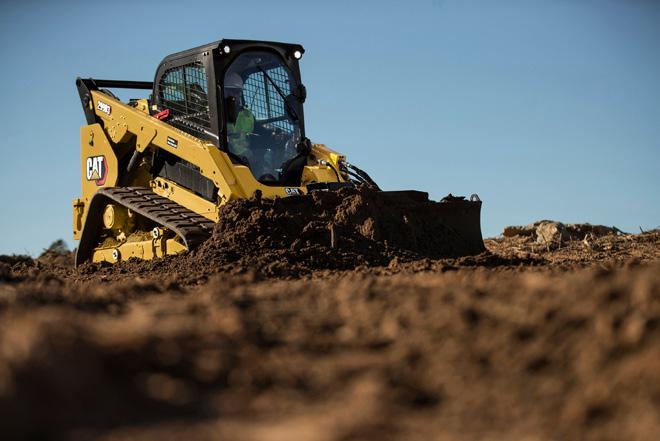
There are new options for the Cat Smart Grader Blade and Smart Dozer Blade. The external control kit for GB120 and GB124 smart grader blades expands use of these blades to Cat D and D2 series SSL and CTL machines, enabling customers with previous model fleets to run smart blades. The new 3D grade control kit uses existing connections to add automatic blade control to the Cat Smart Dozer Blade. The external control kit provides a means to run smart grader blades on all D-series and select older Cat machines. Simplifying operation, GB120 and GB124 blades detect whether they are being operated on a D3 series or machine with the external controller.
Togal.AI-DESTINI Estimator Integration
Beck Technology and Togal.AI, a machine-learning takeoff software, have announced the integration between DESTINI Estimator; an integrated construction estimating software, and Togal.AI. The integration supports 2D takeoff while simultaneously building a construction estimate. Miami-based Togal.AI can interpret plans through their AIA measurement standards and machine-learning algorithms. Beck Technology incorporated this workflow into the DESTINI Estimator estimating software for preconstruction professionals.
Trackunit Sites for Fleet Owners
Trimble X9 3D Laser Scanner
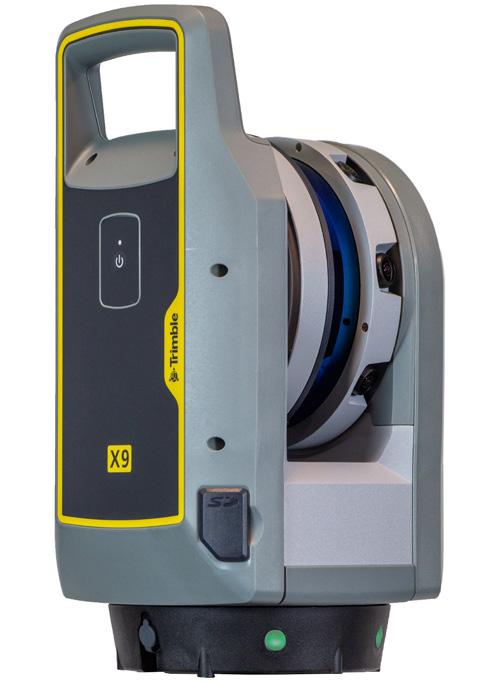
Trimble has announced the launch of the X9 3D laser scanning system, a new reality capture solution for surveying, construction and engineering professionals. The X9 is built on Trimble’s laser scanning technologies, engineered for performance in various environments using Trimble X-Drive technology for automatic instrument calibration, survey-grade self-leveling and laser pointer for georeferencing. The X9 features auto-calibration which eliminates the need for annual calibration. In addition, the X9’s self-leveling capability has a wide compensation range.
InSite Elevation Pro Production Cut and Fill Map

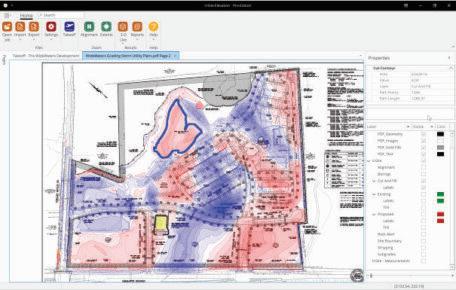
InSite Elevation Pro enables validation and production planning for users of the design platform with Production Cut and Fill Map. In past versions of the software, grids of cut and fill depth were overlaid on the shaded plan. While the provided shots were helpful, the contrast of the shading made interpreting between images difficult. With the contouring engine in Elevation Pro, developers created a contoured based Production Cut and Fill Map. The contours provide data-based cut and fill with no need to interpret points. Contour labeling allows straightforward interpretation by those who have difficulty discerning colors.
Trackunit has launched Trackunit Sites, its jobsite location solution for construction sites and depots. Fleet owners and site managers can now leverage live machine data across projects to build site-specific business processes via site dashboards that allow real-time access to connected machines and equipment. Autogrouping, preset alert triggers and reports generated by a machine’s arrival, departure and position on a specific site allow users to integrate digital solutions, automate processes and minimize manual administration of their fleet connectivity on the worksite and depot. For rental companies, Sites enables users to see what is on their site or yard, where equipment is and whether it is on its way in or out. For contractors, they will get an up-to-the-minute picture of their jobsites reducing the need for ongoing manual site-level administration.
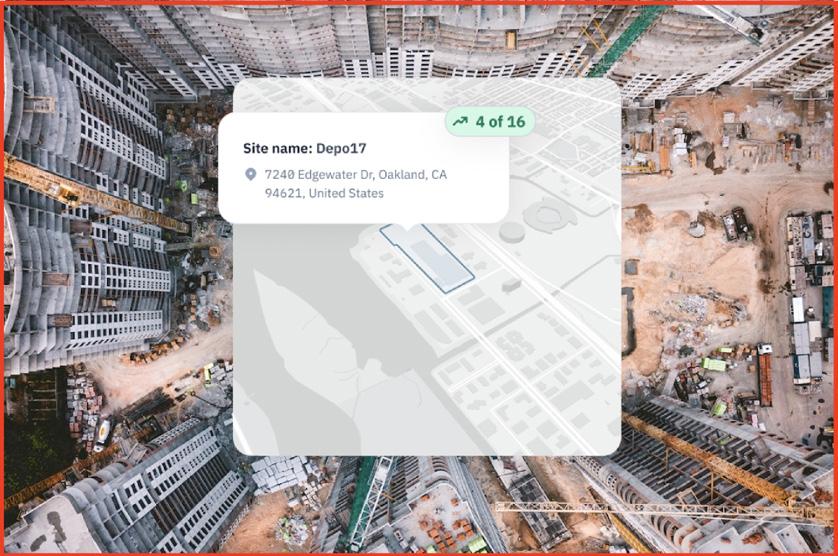
TrueLook Strobes and Sirens

TrueLook Construction Cameras, a provider of jobsite security solutions, has announced the launch of its latest product offering: strobes and sirens. Strobes and sirens integrate with TrueLook’s monitoring service, Jobsite Surveillance. In the event of a threat detected and verified by TrueLook’s fivediamond, UL-listed monitoring center, the strobes and sirens are activated, creating a visual and auditory display of flashing lights and booming sound that warns potential intruders. This dynamic add-on serves as a deterrent, preventing incidents before they have a chance to occur. These security features are available as optional add-ons.
Ergodyne Hi-vis Safety Vests
Sentera 65R Sensor with PHX Drone
Sentera has announced that its ultra-high-resolution RGB sensor – the 65R – is now compatible with its PHX fixed-wing drone. This solution supports the requirement of producing digital surface models (DSMs) and imagery products for several industries, including construction, infrastructure and environmental monitoring. 65R’s global shutter and frame rate combine to produce imagery, free from distortions produced by electronic rolling shutter cameras and with a rugged “no moving parts” design. With 65 million pixels per frame of global shutter imagery, the 65R is a tool that is designed to produce 3D products like DSMs.

Ergodyne has launched three new hi-vis vests for construction work. Leading the lineup of new hi-vis vests is the GloWear 8251HDZBK Two-Tone Hi-Vis Safety Vest (Type R, Class 2), which is available in lime and orange. The GloWear 8315BA Hi-Vis Breakaway Safety Vest (Type R, Class 3) features a breakaway design for disconnection when entangled. Rounding out the new trio is the GloWear 8210Z-BK Mesh Hi-Vis Safety Vest (Type R, Class 2).

44 EQUIPMENT TODAY | October 2023 www.ForConstructionPros.com/Equipment TECHNOLOGY Products Read More at https://eqtoday.co/tech
Bollé Safety Universal Goggles
Bollé Safety has launched a new series of safety goggles for specific applications, including construction. Each has a specific color strap with variations in ventilation, lens color and material. The Universal Goggle prevents external hazards, such as impacts, gases and liquids, radiation and more, from entering a worker’s eyes by offering a customized fit, reducing the gap between the frame and the skin for protection.
Universal Goggles include a color coding system and a new form-fitting innovation from Bollé Safety called The Wave technology. This technology features an accordion-style bellows system that allows the goggle to conform to a user’s face and evenly distributes the goggle’s pressure across the face.
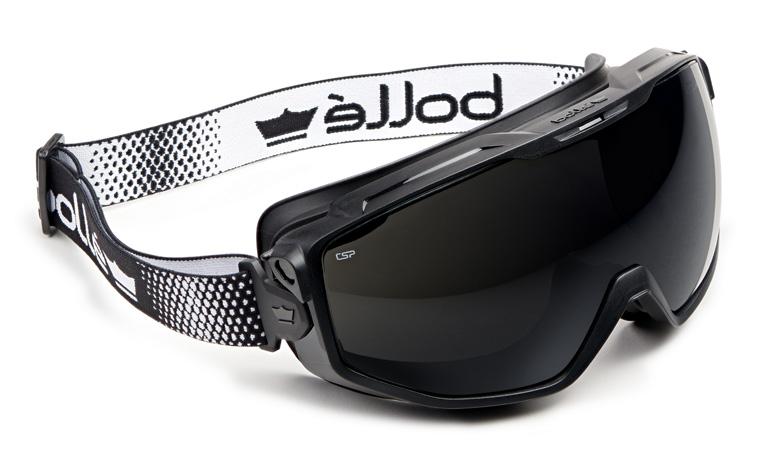
SMARTBUILD-Microsoft Project Management Solutions
SMARTBUILD has partnered with Microsoft Office 365 to enable integration across the two platforms. SMARTBUILD recently created new modules in its platform designed specifically for contractors’ needs to support this partnership as well as users’ experience.

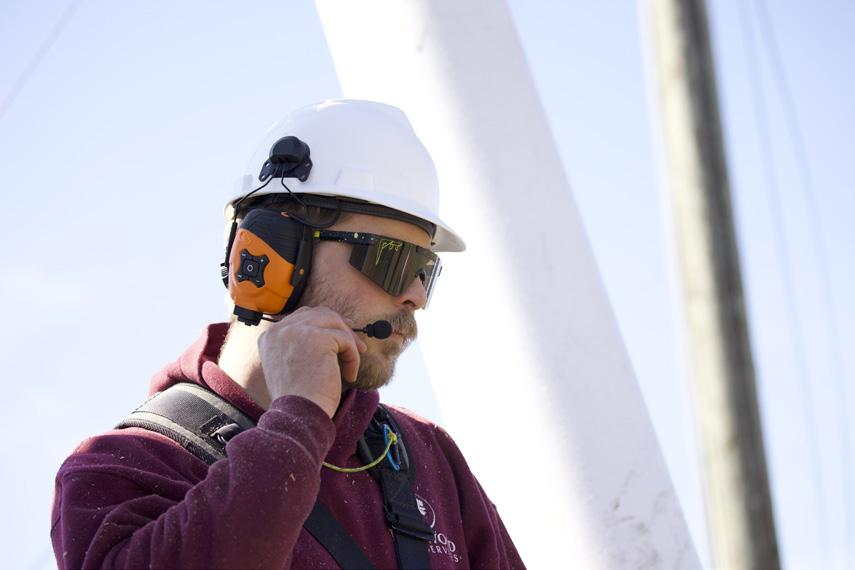
Combining SMARTBUILD’s project management solutions with Microsoft Office applications represents new capabilities for the architecture engineering and construction (AEC) industry. It offers interoperability between the platforms—making the two work together as one solution for SMARTBUILD users. The company’s construction management platform is designed for small- to medium-enterprise businesses and powered with Microsoft’s applications.
Teletrac Navman IQ Camera and Video Telematics

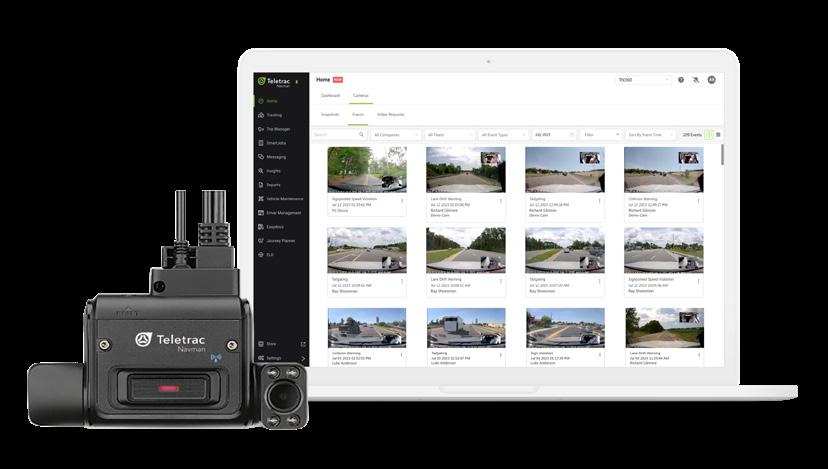
The AI-powered, dual-camera dash cam is integrated with Teletrac Navman’s TN360 fleet management software to give fleet owners a unified view of their video and telematics data. The solution enables customers to understand events and support driver safety through informed coaching. The fully connected IQ Camera uses sensors and video AI to review driving footage and understand behavior. Together with TN360, the IQ Camera pulls driver performance data into a single location, giving fleet managers a full view of performance so that they can implement reward programs and identify areas for improvement.
ISOtunes Link 2.0 Helmet Mount
ISOtunes has announced the release of the LINK 2.0 helmet mount for securing the LINK 2.0 earmuff to safety helmets. The construction accessory is equipped with a universal fitting clip that securely attaches to a variety of conventional helmets on the market today. This helmet mount features tactile buttons for navigation and optional dual battery usage. Optional boom mic compatibility for crystalclear calls enables users to stay connected and communicate with clarity in loud working environments. The LINK 2.0 helmet mount blocks 21 dB of noise and is IPX4 sweat and water resistant.
TECHNOLOGY Products
Tenna TennaCANbus Tracker and Custom Inspections
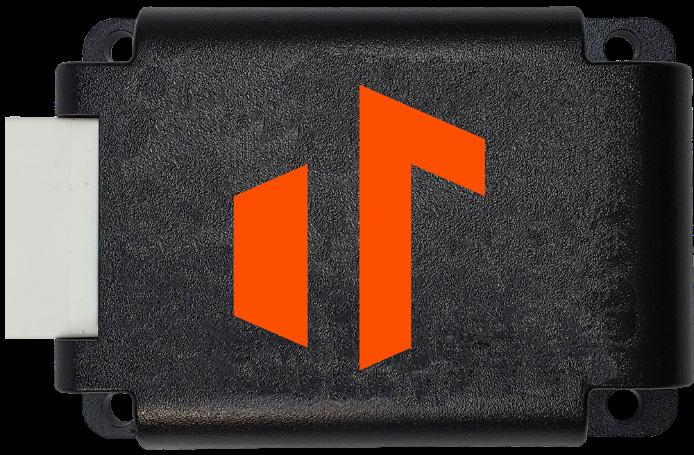
Tenna has announced the release of a new hardware product for heavy equipment that allows for tracking thirdparty powered accessories. Tenna also released a new add-on product: Custom Inspections. Tenna’s new TennaCANbus tracker is an updated way to track heavy equipment. By installing the TennaCANbus on heavy equipment, users can now track and monitor idle time, fuel consumption, asset information, engine information, battery level, fault codes and decoded messages, environmental data and tracker analytics—in addition to the location, utilization and maintenance data previously collected. TennaCANbus enables construction equipment managers to make decisions about rentals, replacements, preventative maintenance and resource management. The tracker also makes it possible to track external power takeoff (PTO), which enables the use of an asset’s engine power to drive added equipment or perform specific tasks.
Canopy Pickup Cam for Trucks
The Canopy Pickup Cam is a connected security camera for pickup trucks, designed to provide real-time truck bed monitoring when the vehicle is parked and the owner is away. The Pickup Cam provides customers with a complete view of the truck bed, with a 180-degree wide field of view, captured in HD. The camera has a dynamic LED bar that serves as an initial deterrent, signaling when the vehicle is under intelligent surveillance. Every Pickup Cam is connected to a Canopy Hub, which provides cellular connectivity and dedicated power to enable continuous monitoring. The complete system can be self-installed in about 15 minutes. The camera works with the Canopy Security app where you can view live video and past recorded events. Users will receive a push notification whenever suspicious activity is detected. Recorded footage is stored securely on the cloud.
STUDSON Cooling Helmet Liner
North American safety helmet producer STUDSON has released a chemical-free cooling helmet liner with a nape cover and a cooling towel designed to shield wearers from harmful sun rays and sweltering heat. The liner is activated with water. Developed with Mission, the cooling and comfort technologies company, the helmet liner with attached nape cover and cooling towel feature chemical-free cooling technology with UPF-50 sun protection. Workers wet the garments with water thoroughly, wring out excess water, then snap or wave them to activate, helping workers stay cooler for up to two hours per rinse. The accessories are also machine washable and are composed of 92 percent polyester and 8 percent Spandex.
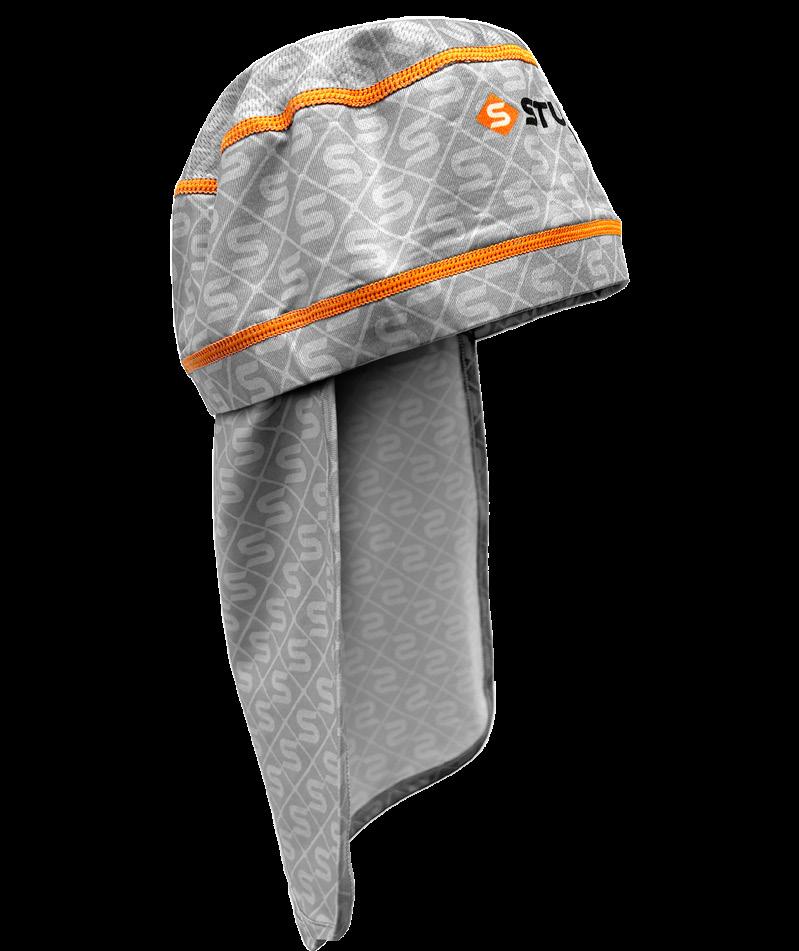
www.ForConstructionPros.com/Equipment October 2023 | EQUIPMENT TODAY 45
Mobile Devices & Interfaces Continue to Revolutionize Construction
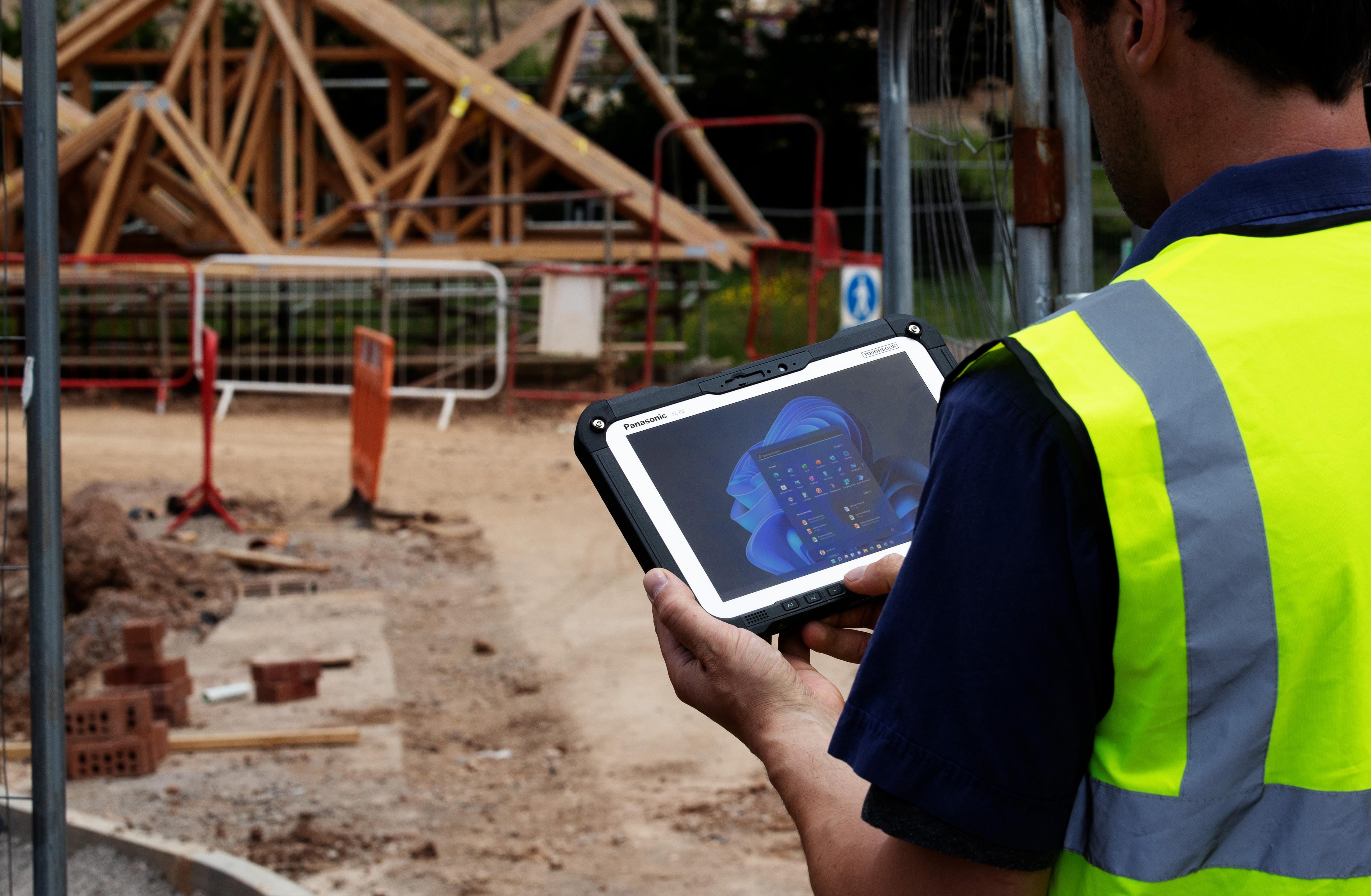
The smartphone has changed construction. Whether a contractor has a bring-yourown-device (BYOD) policy or issues designated hardware for use in the field, that smart handset or tablet has embedded contextual data streams like geolocation, data capture through photos, bar code scanning and other capabilities that can inject new insights and capabilities into construction software.
Mobile Device as IoT Data Collection
Most software for construction will now offer native applications for iOS and Android platforms. A few bootstrapped startups coming up in the space now are finding product market fit on a browser interface and then adding mobile applications later. Even if the interface makes good enough use of space on a small device screen to be used on a mobile handset instead of a laptop, these native applications make better use of the underlying handset’s features.
˜ Bar code scanning: Bar codes used in construction may include location-specific QR codes used by applications ranging from Procore to standalone tracking software from companies like Wasp Barcode Technologies, Panatrack and Asset Panda, primarily used for inventory and assets or tools. Software used to take materials or parts
into inventory, consume parts or materials against a project or work order, field service management software used to record what work has been done on an asset and other situations where avoiding manual entry of data is desirable— all will benefit from barcode scanning.
˜ Optical character recognition: Beyond barcodes and QR codes, software like an offering from XOI Technologies, can capture asset data from equipment nameplates. This eliminates error and moves manual tasks off the field technician’s plate.
˜ Photogrammetry: Many field productivity software products like Assignar, Fieldwire, HCSS Heavy Job, InEight Document and Raken will enable workers onsite to capture images with their camera phone and addend them to project data to document conditions or work completed. Designated photogrammetry solutions will often use drone-mounted cameras or specific 360-degree cameras affixed to a hardhat or placed at a stationary location. Digital images captured on a job site can be addended to a BIM or project plan, and can even be used to track progress against the plan. Photogrammetry tools like PIX4Dcatch, Pixpro or Matterport
will enable photogrammetry using a smartphone camera.

˜ Video collaboration: Field service management tools like XOI Technologies, Blitzz and Streem use video to enable collaboration between workers in the field, experts in the back office or even the contractor’s customers. In some cases, this can be done without the customer executing a download on their end.
˜ Mixed reality: Particularly in mission-critical mechanical contracting, augmented reality (AR) is finding a foothold, enabling personnel onsite to view design data overlayed on reality. Construction AR software vendors extend their solutions with designated headsets designed for this purpose, but some, including products from Trimble and vGIS, extend these tools to deliver mixed reality to smartphones. Software equipped with this capability, including Trimble Connect AR, will enable users to use the builtin camera to view design elements and other data context of the physical world on the screen.
˜ Bluetooth low energy (BLE): Some construction software mobile apps will leverage BLE capture and expose data from unpowered assets. BLE beacons can be attached to everything from
Are All Construction Apps Created Equal?
To be clear, these apps are not standalone products. Mobile apps for business settings will use mobile applications as a secondary or sometimes a primary interface for a software-as-a-service (SaaS) product sold by subscription. Most
46 EQUIPMENT TODAY | October 2023 www.ForConstructionPros.com/Equipment
Panasonic offers products with a two-in-one form factor, so field workers get a laptop in the cab and a tablet for the site.
Hilti hand tools to construction equipment attachments and other unpowered assets. An example is the TennaBLE Beacon Steel Puck which provide geolocation through the Tenna Mobile Field apps for iOS and Android.
PROFIT MATTERS
|
By Charles Rathmann, Senior Editor, Construction Technology, IRONPROS
Kyocera’s ultra-rugged DuraForce PRO 3 Android smartphone.
Kyocera
Panasonic
fully-featured construction software will offer one or more apps for functions that need to be performed away from a laptop, such as preventive maintenance, filing expenses, entering worker time, reporting productivity, forms for inspection or customer sign-off on work. In some cases, bootstrapped construction SaaS startups will establish productmarket fit with just a web interface. In the paving software segment, two examples include PavementSoft and Pittbos. Pittbos is making moves to add a mobile app, and PavementSoft may not be far behind as it ramps up its business.
But once a construction software product includes a mobile app, contractors will want to come to understand some essentials about it. These include:

˜ What features or functions does the app deliver? This is often a narrower subset of functionality offered in a web interface due in part to the real estate on the screen and the fact that the mobile app may be used by workers on site or perhaps supervisors while management will rely on the web interface. Products designed specifically for smaller contractors or sole proprietorships like Jobber or Service Titan may support a broader spectrum of business functions on mobile devices than those aimed at the enterprise, in part because owner-operators work from the field. There may be more than one mobile app associated with a software product, each for different defined roles or use cases.
˜ How does the app respond to interruptions in service? Most modern native applications can work offline, archiving transactions until a connection is re-established.
˜ Does the application update automatically? Some apps, because of the technologies they were built with or the settings the vendor uses when they provision them to app marketplaces, will push updates to mobile devices without end-user involvement. This can ensure that everything from the latest security patches to new functionality are available in real time.
˜ How many of the functions of the handset can the app leverage, and how gracefully? Native apps will often make better use of handset features— IFS Cloud in October of 2022 even added app support for lidar distance measurement, for devices that are suitably equipped.
˜ Equipment management software and time clock software may leverage geolocation data from the mobile device, enabling features like geofencing and geographic context for transactions like clocking in and out, arriving on a site or photo updates in field notes.
The Cloud & Mobile
While mobile apps used in business are generally really user interfaces for solutions located in the cloud, the fact that many powerful and venerable construction business software products are being run on-premise or in a managed services environment means mobile becomes an interesting way to extend the lifecycle of these products.
Construction software designed for on-premise, usually with a cloud option from the vendor or third party, making it more available away from the office, exposing narrow slices of functionality in the underlying application or adding new functionality in a modern, mobilefriendly user interface. Construction enterprise resource planning (ERP) software vendors in particular are extending these mature solutions either with their own apps, or increasingly relying on partners or independent software vendors (ISVs) to create not just native mobile apps but broader enterprise applications. This makes it easier to interact with the system of record from more places, cutting time lag out of business processes.
One example is AvidXchange, which tacks accounts payables automation onto Sage construction solutions including Sage 300 Construction and Real Estate and Sage 100 Contractor with a web interface that may be the sole tool used by accounts payables people. AvidXchange pulls in invoices from suppliers, uses OCR technology and artificial intelligence (AI) to extract information and routes it to users across different device types for review and approval. In settings like this, the mobile app can keep processes moving that otherwise would be delayed until an approver or reviewer was back in the office.
“We have to follow ERP adoption patterns,” AvidXchange Vice President
of Construction Sales Jim Campbell said in a 2022 IRONPROS debriefing.
“Sage 300 CRE, formerly Timberline and Sage 100 Contractor, formerly Masterbuilder—are on-premise, older technology. The migration path for those two products is going to be towards the Intacct Construction edition. For Sage, that is the stated migration path over time. We want to follow in step with that. We did Sage 300 CRE first—there are several thousand customers on that software, and we have several hundred on our platform. Our TimberScan Titanium is a SaaS-based product. We still read the Sage data, pulling it up into our server in the background including all the data like cost codes. Invoice approval can be done on mobile, so payment and release of funds can proceed.”
Mobile Devices for Construction From Handsets to Laptops to Wearables
Software may have eaten the world, to paraphrase investor Marc Andreessen, but ruggedized devices that facilitate mobile computing for contractors are important pieces of silverware, at least in demanding environments.
Apart from resistance to physical damage from impacts, dust and vibration, these devices may give contractors other solid reasons to go beyond either BYOD approaches where employees rely on their personal devices or company-owned, consumergrade devices.

Other end point devices may not replace traditional handsets or computers, but rather extend communication in the field as internet-of-things (IoT) devices.
Rugged Devices for Construction
Familiar consumer brands including Panasonic, Honeywell, Dell, Acer and Samsung offer ruggedized devices, while Kyocera makes more of a name for themselves specifically with devices designed for physically demanding environments. Ruggedized tablets and laptops may offer resistive screens that respond to finger
pressure rather than heat and will therefore be easier to use with gloves.
“We seem to have a lot of traction in commercial construction and utilities construction, in particular,” Panasonic Toughbook Senior Category Manager Daniel Diliberti said. “We have a very natural fit in the utilities industry and with all the field service workers that are really needing more ruggedized computing. So field service is sort of an adjacent market to utilities and utilities construction.”
Features of the device are purposebuilt to support vehicle-based technicians and employees according to Diliberti.
The Pansonic Toughbook 54, for instance delivers some serious computer power, with up to 16 GB of memory and connectivity options including Bluetooth, USB 3.0, Wi-Fi or optional 4G multi carrier broadband, satellite or GPS.
These features are wrapped in a magnesium alloy case with port covers, a spill-resistant keyboard, touchpad, hinges and display.
“What is unique about what we are doing in the market is we have revolutionized the ruggedized twoin-one form factor,” Diliberti said. “We think of the market as consisting of two parts—inside of the vehicle and outside of the vehicle. When construction managers and our users are in the vehicle, they’re able to use it as a laptop. If you’re not already familiar with the two-in one form factor, it’s characterized by our TOUGHBOOK 33. It refers to a ruggedized tablet but with a ruggedized keyboard that can attach to the bottom of it, adding a lot more functionality and capability. But for someone in the vehicle handling reporting and change orders and other tasks they’re doing in the vehicle, they can use that with a vehicle dock that’s mounted permanently and securely.”
Read more at: https://eqtoday.co/mobile
October 2023 | EQUIPMENT TODAY 47 www.ForConstructionPros.com/Equipment
Panasonic ruggedized devices convert from laptop to tablet, covering multiple bases for contractors
Panasonic
GPS-enabled asset management software applications like Tenna make mobile work orders functional not just in a shop environment but in the field.
Tenna
CONSTRUCTION ECONOMY: What Does the Future Hold?
A review of the International Monetary Fund’s Assessing Reserve Adequacy (ARA) metrics indicates that the Penetration Index is heading upward close to 60%, which means that of the equipment in the field in the U.S., 60% of it is rented and scheduled to climb even higher.
change from the prior year. The report also includes a method to adjust the base data for regional variance. If you are not on the Equipment Watch mailing list, get on it. And if you do own a fleet, Equipment Watch can provide data to inform you how many billing hours will be required to support ownership of a unit.
Another issue I am sick of concerns the EVs we are getting pushed down our throats. Because of the costs and high borrowing rates, and potential lack of usability, buying an EV product is not high on my to do list. All you have to do is listen to automotive-industry EV woes that have materialized even after spending billions to bring EV units to market.
Are you as sick and tired of listening to the financial and business gurus pontificate about the economy, interest rates, inflation and the price oil and the need to go to electric vehicles (EV) as I am? It is mind boggling, making it that much tougher for business management to plan revenues, costs, profits (we hope) and cash flow. In case you didn’t get it: YOU are probably the one that is required to provide direction and guidance about the future of your company.
Since planning for the future will be tough this year, I thought I would run through some of the basics you will need to consider regarding the balance of 2023 and the outlook for the year 2024.

First, it is the POSITIVE CASH FLOW you are planning for. Budgets and net income are nice to have around, but do not provide proof of producing positive cash flow. You understand, of course, that you can “sell” yourself into bankruptcy, where you put yourself into a situation where you do not collect enough to cover your bill payments in a timely fashion. Planning for cash flow will keep you out of that situation.
How about we discuss how to budget for expenses now that we hear that inflation is slowing down. As you
know, inflation forces prices for goods and services higher. During the past couple of years, prices have gotten quite a bit higher. Getting the inflation rate down to 2% does not necessarily mean prices go back to what they were pre-pandemic. They will stay where they are at and “normalize” at this new, higher priced standard of living. This, of course, means your cash flow budget needs to use these higher prices for costing out your work.
This should not surprise you, but OEMs and other sellers of goods and services like the higher prices they have been getting and are reluctant to reduce prices until they absolutely need to. Those prices will not come down until market conditions force them to do so.
One possible positive result caused by the inflation is the impact it is having on Americans wanting to retire. Higher costs are causing 25% of retirement-eligible workers to delay their retirement tao build up their retirement funds. Could this provide an opportunity for contractors looking for additional help (who isn’t)? Putting together some flexible schedules may convince those trying to put some serious dollars away to work for your company.
I always preach to take care of your balance sheet, to maintain
adequate cash flows by avoiding debts and fixed obligations. A review of the International Monetary Fund’s Assessing Reserve Adequacy (ARA) metrics indicates that the Penetration Index is heading upward close to 60%, which means that of the equipment in the field in the U.S., 60% of it is rented and scheduled to climb even higher. In Europe, it is 80%. What this means, of course, is that rental companies are bearing both the cost to own and operate the units that make up the 60% ratio. They have the monthly nut to cover, and the user only pays when they use it. And at 9% interest rates or so, along with an unsteady economic forecast, contractors really want to stay away from any new fixed-cost obligations. Doing so will make your bankers happy.
As far as the rental equipment industry goes, there really is a lot of information out there to help you manage rental costs. Right now, I am looking at an Equipment Watch Rental Update for Q1 2023. There are schedules in this report covering 301 types of equipment, with 1.7 million rates collected from 506 rental companies. The report discloses daily, weekly and monthly rates for both small to medium-sized equipment and large equipment. The historical data included provides the percentage
Since we are discussing financing, please keep in mind that the banks are not out of the woods yet and it is getting harder to obtain loans at a “reasonable rate” with related covenants you can work with. No matter how you look at this, it is in your best interest to defer additional debt and fixed cost obligations at this time.
The bottom line here is that our economic situation is far from settled, requiring contractors to take steps to produce positive cash flow first and foremost. Start out with your Generally Accepted Accounting Principles (GAAP) internal statements and convert them to a cash flow statement, which should be reviewed as often as possible to stay ahead of the game. The next step is to run the operation on a FREE CASHFLOW basis, which will assist with making equipment purchase decisions, as well as provide results that will maximize the value of your company.
Read more at: https://eqtoday.co/cashflow
Garry Bartecki is a managing member of GB Financial Services LLP and a consultant to the Independent Equipment Dealers Association.
48 EQUIPMENT TODAY | October 2023 www.ForConstructionPros.com/Equipment RUNNING THE BUSINESS
@Jacob Lund - Adobe Stock
Confront Construction Labor Shortages With Refocused Effort on Training
Applicants for construction jobs have decreased sharply in recent years, and the industry continues to face a significant labor shortage. To meet the demand for workers, more than a halfmillion would need to be hired in 2023.

There are numerous reasons for this immense gap–chief among them are the effects of the COVID-19 pandemic and a lack of training.
Like other industries during the pandemic, supply chain issues, shutdowns, and early retirement were factors behind the decrease in skilled labor in construction, and the industry has not recovered like other industries have since society returned to a state of normalcy.
One of the biggest challenges is that to get more skilled workers, we need more people to train them. That’s difficult because the U.S. is also facing a teacher shortage. Finding
enough qualified instructors–those with on-site construction experience–isn’t easy because it’s hard to convince laborers to leave their jobs for the lower pay of instructing.
Investing in Your People
But it’s not all about numbers. Finding solutions to the labor shortage comes down mainly to mindset–construction companies resolving to improve their hiring and training processes and maximizing the capabilities and growth of the people currently working for them.
Finding enough workers will be a greater challenge for the industry in the near future as older workers retire faster than younger workers can take their place. And although solving the teacher shortage is a big issue that companies can’t fix alone, one way to help recruit and retain young workers is for companies to
invest more in their own education and training programs. The biggest thing companies misunderstand about training is that real training is investing in your people.
Don’t hire people; invest in them, and expect employees to invest in you. If you’re not investing in your people, you’re not doing it right. This is where culture training starts.
Predictive Interviewing
Training starts from the interview; from the first time you meet a candidate. Predictive interviewing allows companies to accurately predict how successful someone will be in the job you’re hiring for. This is a dynamic process. It’s a mix of experience-based and personality-based questions. There are three basic steps:
• Find and/or create your ideal employee. Look at your most successful employees in a position.
Then find your absolute best employee. This is your standardbearer. If you don’t have an employee in this position yet, create an imaginary list of what you think would make for the perfect person. What makes them so successful? What experience do they have? That kind of objective information is important and will affect how much training is needed.
• Understand the skill level required. You need to understand if the position you’re hiring for is a highly skilled position or an entrylevel employee who might be brand new to the workforce. The training requirements for those jobs will be different. What are the needs of your business? In my businesses we use a level system to evaluate employees from 1 to 10. Throughout the interview, I ask questions that align with each of these levels and use that
October 2023 | EQUIPMENT TODAY 49 www.ForConstructionPros.com/Equipment BRIDGING THE GAP
@rh2010 - adobe.stock.com
Improving the efficiency of a company is how you unlock its true potential, and improving your training is a big key to that.
to decide how much training they’ll need.
Levels 1 and 2 are pretty basic questions. For example, Can you use a nail gun? Do you know how to mix concrete? Levels 3 and 4 get more in depth: Can you build a set of stairs or read a blueprint? If a potential hire starts to stumble around the Level 3 questions, I know they’ll likely come in as a Level 2 employee. Try not to hire from a place of desperation but from wisdom, especially if you need to hire some of those more skilled workers.
So many business owners realize they
are drowning and need help right now. They accept anybody with a pulse. That’s not a good decision and almost always leads to hiring the wrong person. Hire from a place of maturity and preparation.
The subjective part of the interview is critically important. Ask yourself, Does this person have the kind of personality that helps create the culture I’m looking for in my company? To see how self-aware they are, I ask questions about when they were criticized by a manager and the ways they need to improve. If they answer, “I’ve never been criticized,” then I know they are likely deluded and won’t take feedback well. If the employee is mostly going to be working by themselves, personality might not matter as mucht.
Where Training Often Falls Short

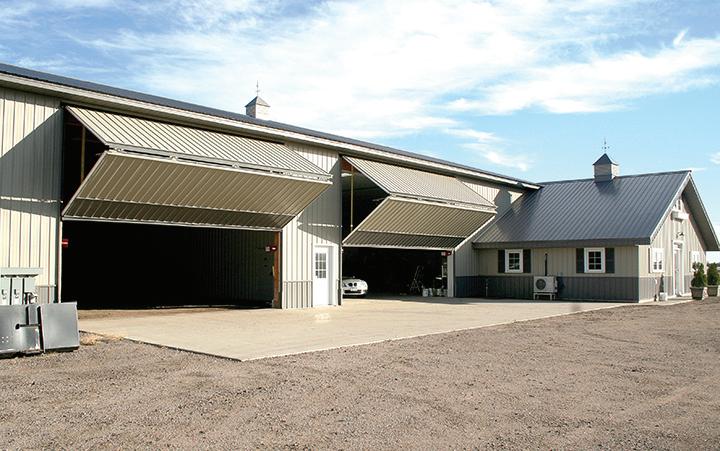
Here’s where most businesses stumble: They train their employees and release them into the business. They’re all trained now, right? They should be able to do this perfectly. That may be true. Maybe you hire a bricklayer or drywall installer and they can do that one job well, but what are you doing to invest in them? Remember, we’re all about investing in people, not just hiring. Most of the time, if you ask someone who’s
been at a job for four or five years, “Tell me about your ongoing training process,” they won’t understand what you mean. “I was trained at the beginning,” they’ll say. That means there’s no focus on upward mobility, and that’s a huge problem.
If an employee stops learning, how can we expect excellence? Growth is essential. It should start on the first day and never stop. As a manager, are you creating those growth opportunities in your business for your people? Showing people how to grow is the path to greatness for your brand. You need people on your team who want to scale with you, and that means constantly training excellence.
Think also about training geared to situational management – those many scenarios that come up in the course of a long career with a construction company, or any firm for that matter. When I’m building manuals and training systems, I go right to my most experienced employees and begin writing down all of the friction points they’ve experienced in their career. Calculate every mistake, because every problem is an opportunity. Ask your experienced and successful employees to tell you about the friction points they encounter and then train around those and turn problems into opportunities.
Cross-train
If a specialist leaves your company or is out for a while, do you have a person to seamlessly take their place? One way to mitigate the labor problem is to make better use of your current workers by cross-training them. Don’t wait for a top employee to leave in order to be prepared; when you’re at or near peak staffing you should take a complete look at your operations, identify potential staffing shortages or

skills vulnerabilities, and develop an initiative to help close the gaps.
It’s important, whenever possible, to broaden your employees’ job responsibilities to create overlap and depth. Cross-train them and give them a chance to practice the new role they’re learning; otherwise, what you teach them will soon be forgotten. The more critical the skill, the better off your company will be if more than one person understands it. Besides ensuring a smooth workflow, another benefit of cross-training is that more workers will be knowledgeable about certain roles and, with those extra eyes, will bring more scrutiny to the task and improve efficiency. The result is a more productive workforce.
Evaluate Your Training System
How do you know if your training program is working? You may think everybody should be able to produce 50 widgets an hour, but maybe they’re only producing 30. As an owner, you can do 50 all day long, but that doesn’t matter if no one else can.
Don’t criticize people when they’re not living up to what you think they should be able to do. Examine your training. Improving the efficiency of a company is how you unlock its true potential, and improving your training is a big key to that. You know your training program is working when people perform their jobs consistently well, see a clear path to growth, love coming to work every day, and are able to create the result you’re looking for.
Read more at: https://eqtoday.co/traincrew
Tony DiSilvestro is the founder of Ynot Enterprises.
BRIDGING THE GAP 50 EQUIPMENT TODAY | October 2023 www.ForConstructionPros.com/Equipment
@Vittaya_25 - adobe.stock.com
Improving the efficiency of a company is how you unlock its true potential, and improving your training is a big key to that.
• Trailer Weight: 8,380 lbs. • Overall Width: 102", Length: 31'4"
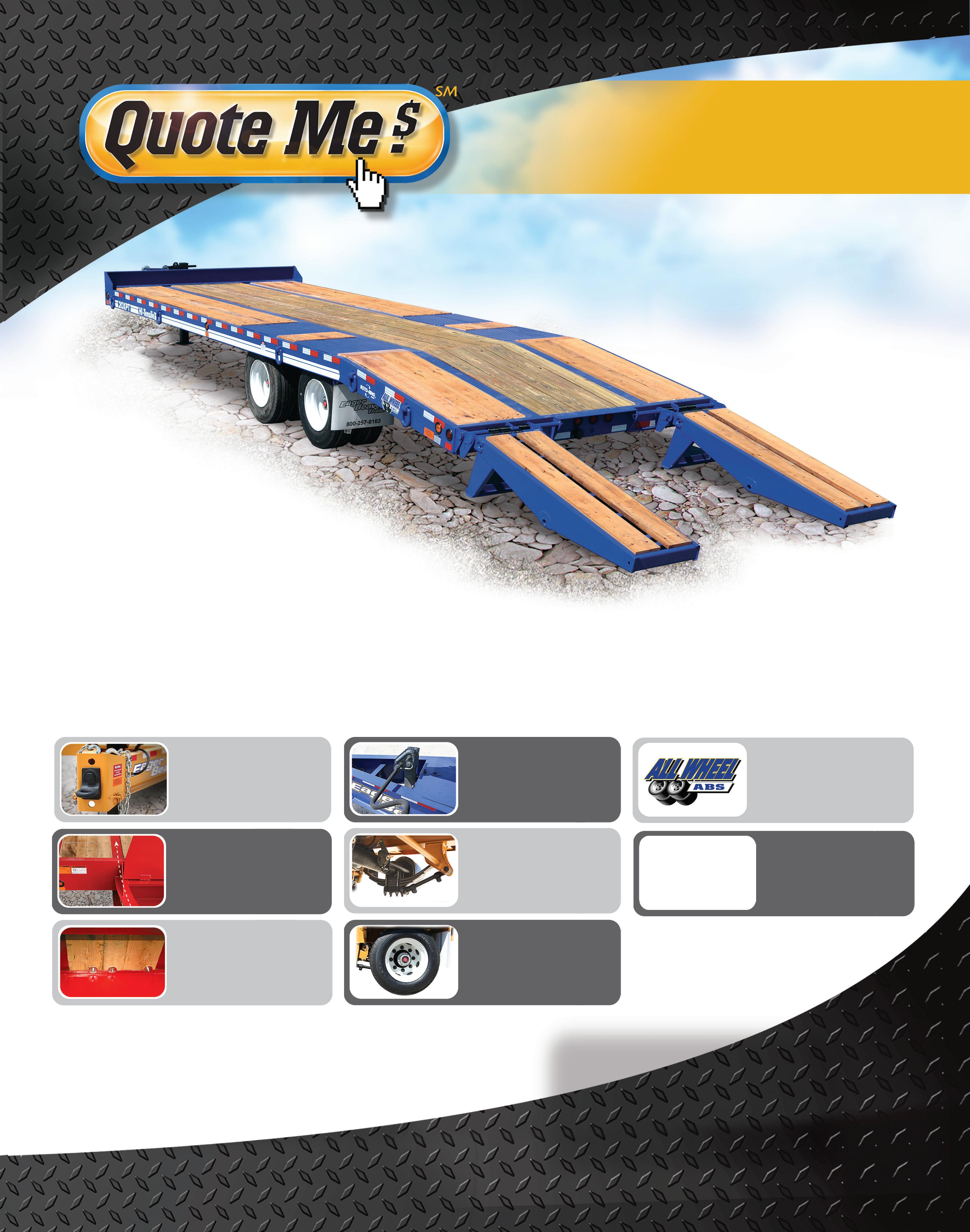
• Deck Length: 21’ Flat (model shown)
• 6’ Beavertail
• Deck Height: 34"
• Tires: Eight 215/75R17.5 (H)


• Brakes: Air (Full ABS System)
• Ramps: 72" Long x 22” Wide Range: 102" Max. 29" Min.
• Lighting: 100% Sealed Wiring harness and L.E.D. Lights
Standard Features On All Easy Loaders
Simple,Fast,andConvenient! ONE PIECE CAST LUNETTE EYE Tested @ 275,000# and wrap around nose plate. Standard on all trailers. HEAVY DUTY 2-SPEED PARKING JACK 70,000# static capacity. Standard on all 15-25 Ton trailers. HIGH TENSILE MAIN RAIL One piece and cold formed. CROSS MEMBERS pierced through Main Beam for lowest possible deck height and more unitized frame. ALL WHEEL ABS with Spring Brakes on all axles. Standard on all air brake trailers. ADJUSTABLE 3-LEAF SUSPENSION Standard on all 15-25 Ton trailers. SUMITOMO BRAND TIRES National Dealer Supported. HUB PILOTED WHEELS Outboard brake drums for easier maintenance. APITONG/COMPOSITE DECK Durable Composite Decking is fastened to the crossmembers with bolts and deck washers making it easier to replace decking when required. Eager Beaver WIDE TRACK AXLES: 98” Some Competition - 92” 98” WIDTH 92” WIDTH >> Eage rBeaverTrailers.co m
800-257-8163
For a quote on any model, please call
ANNIVERSARY 1946-2022 th 76 6 20XPT • CAPACITY: 40,000 lbs. • 20 Ton Air Brakes • 8 Degree Loading Angle Low Profile
CLOCKS IN, NEVER OUT.
There’s only one member of your crew that will never quit, complain, ask for breaks or wish the day would end. The TL8R2 track loader just wants to work. For those who value uptime above all, nothing else comes close. In fact, anything else is probably in the shop.

THE MARK OF TOUGHNESS



TL8R2 » DIG IN AT TAKEUCHI-US.COM/TOUGH
ROBUST DEALER NETWORK TAKEUCHI FLEET MANAGEMENT GENUINE PARTS
















































































































































































